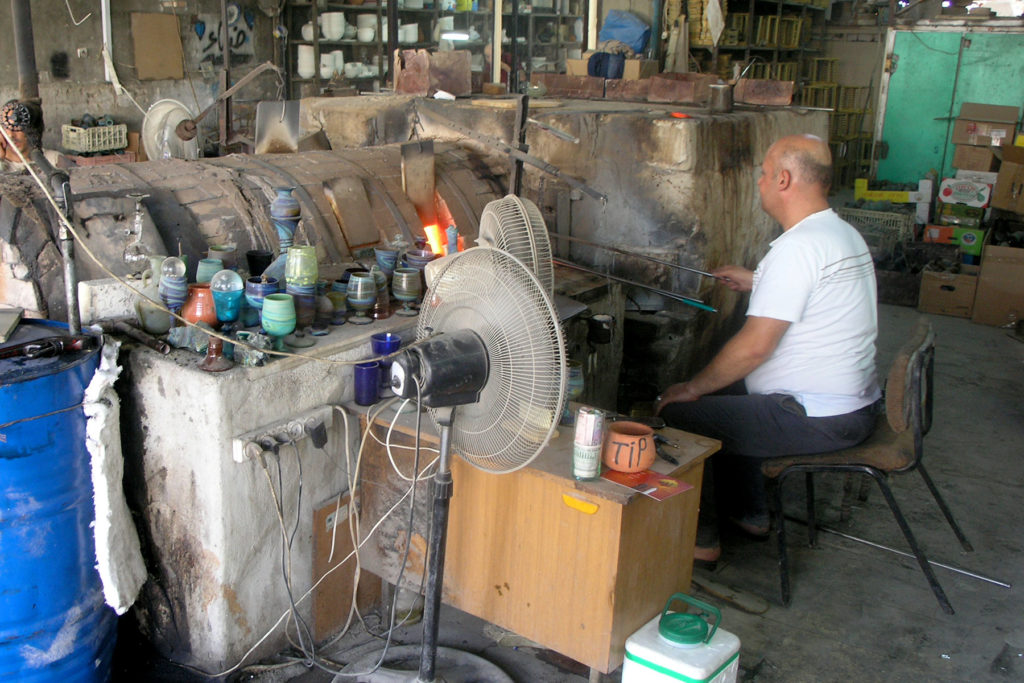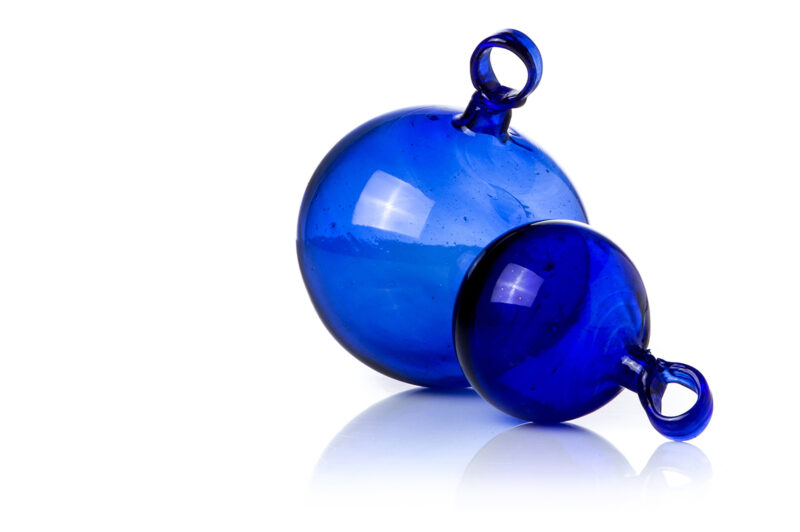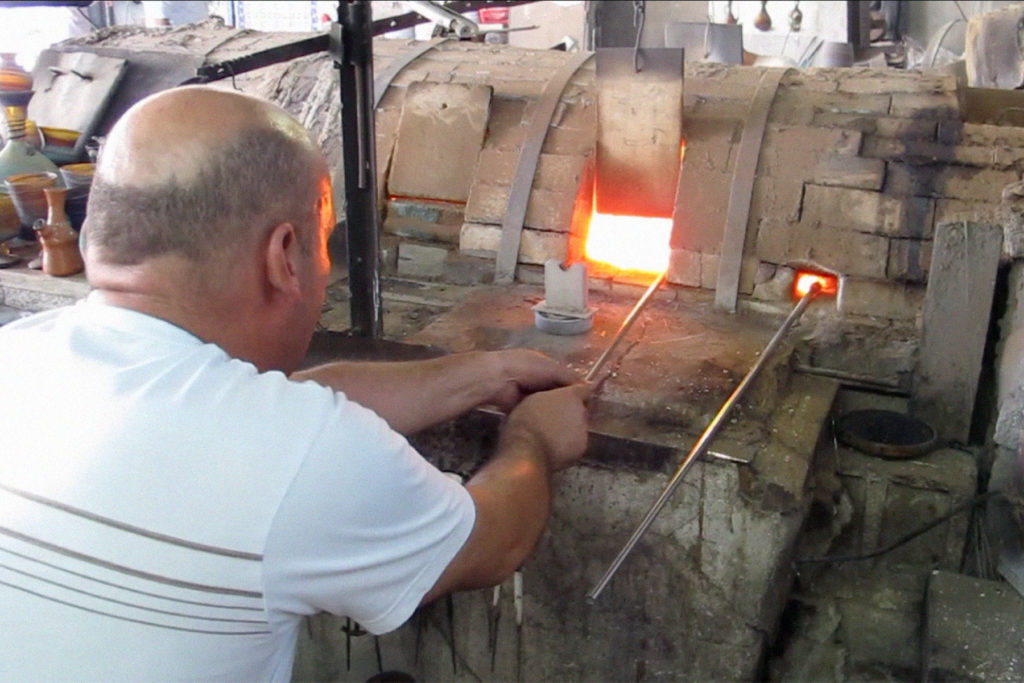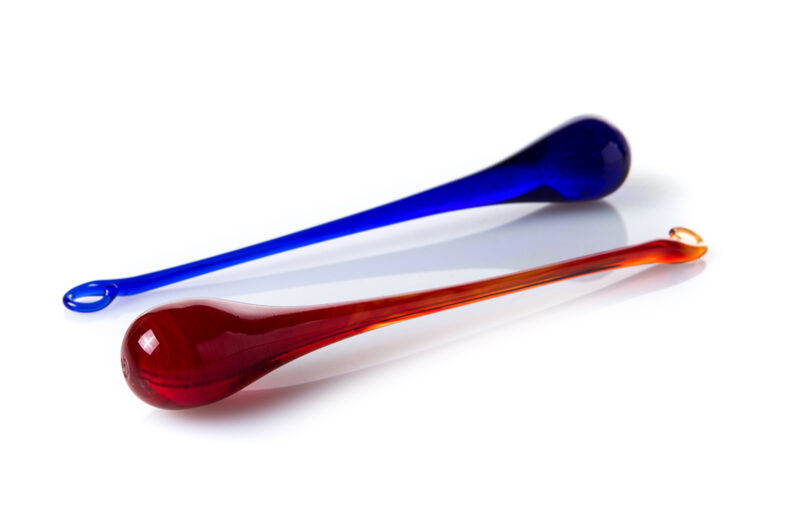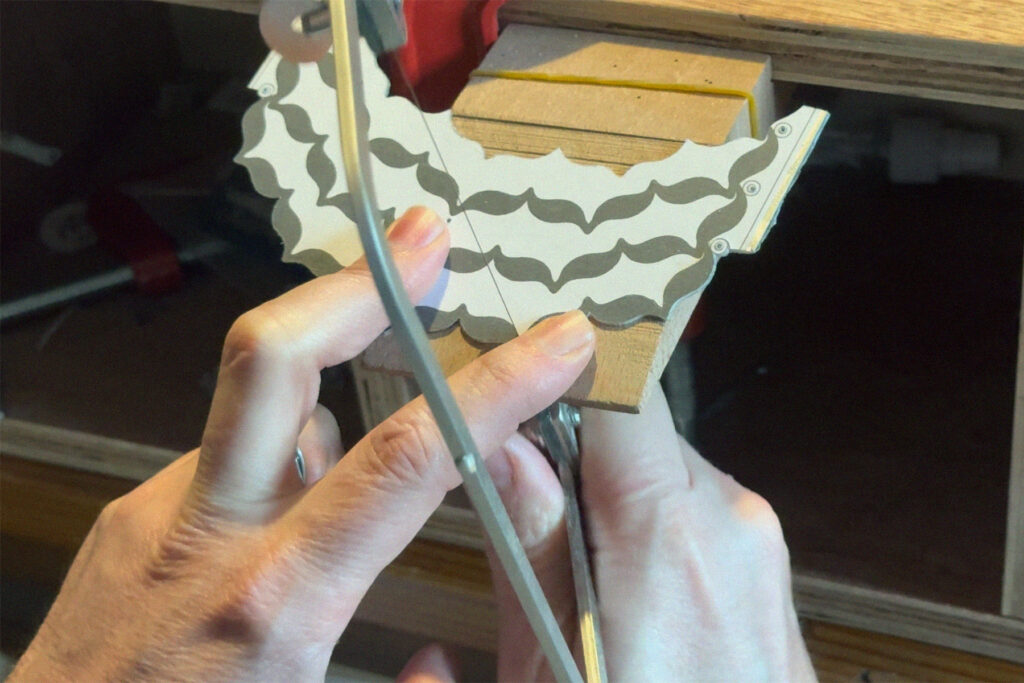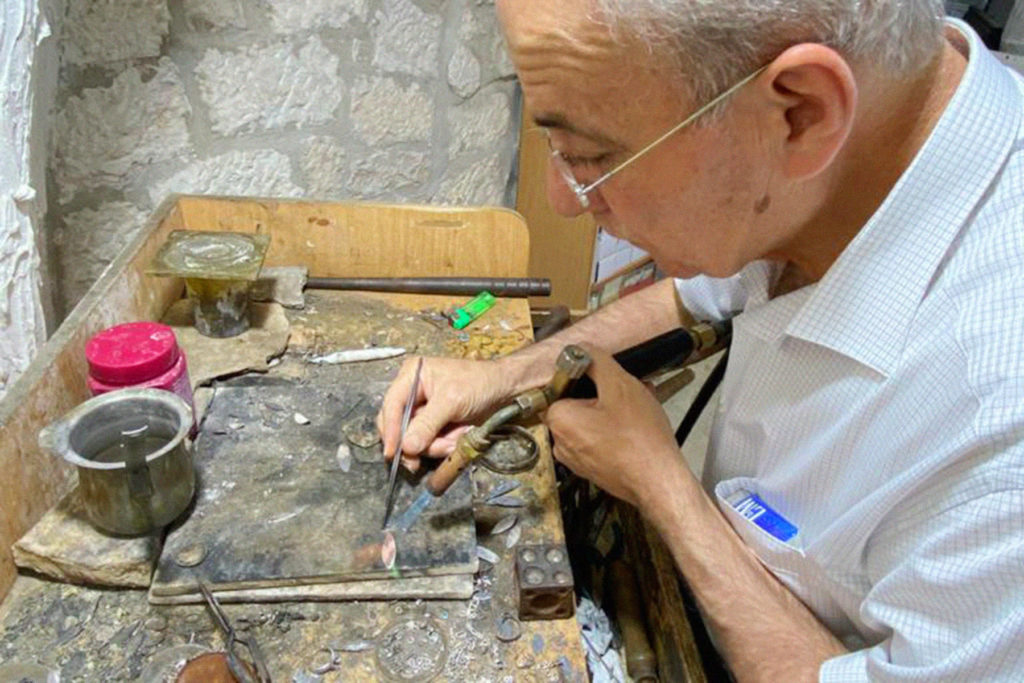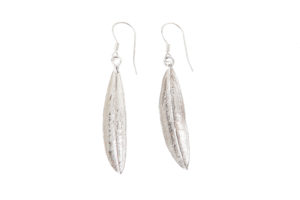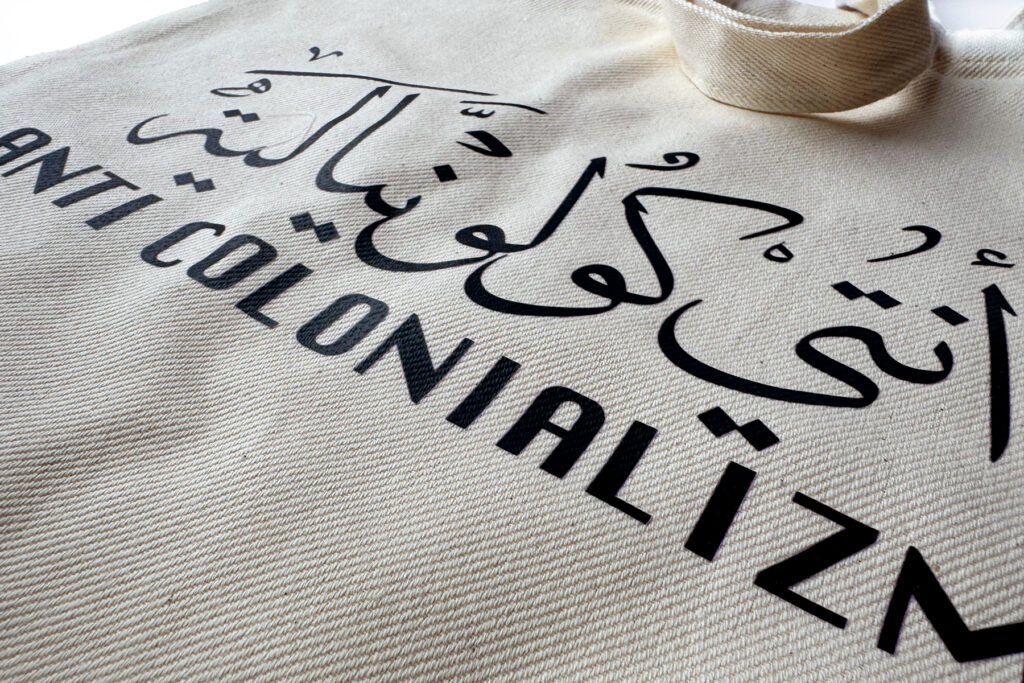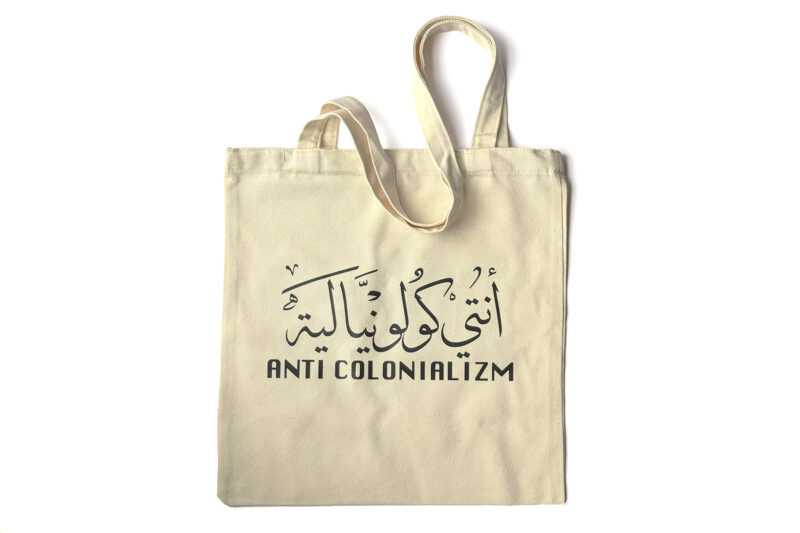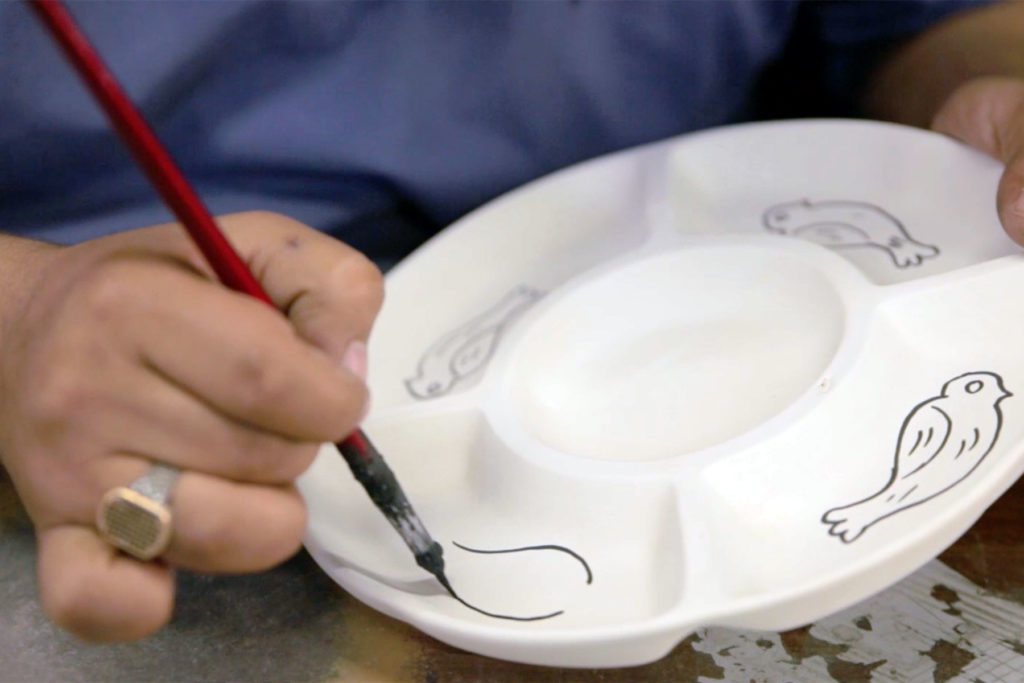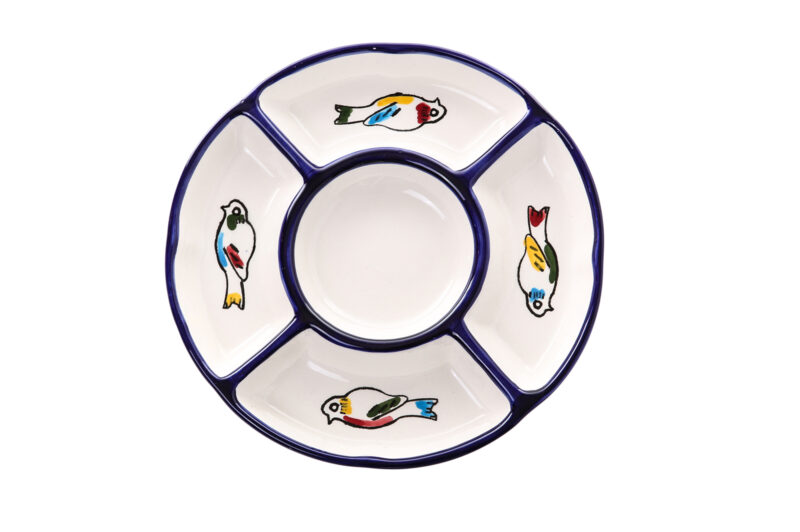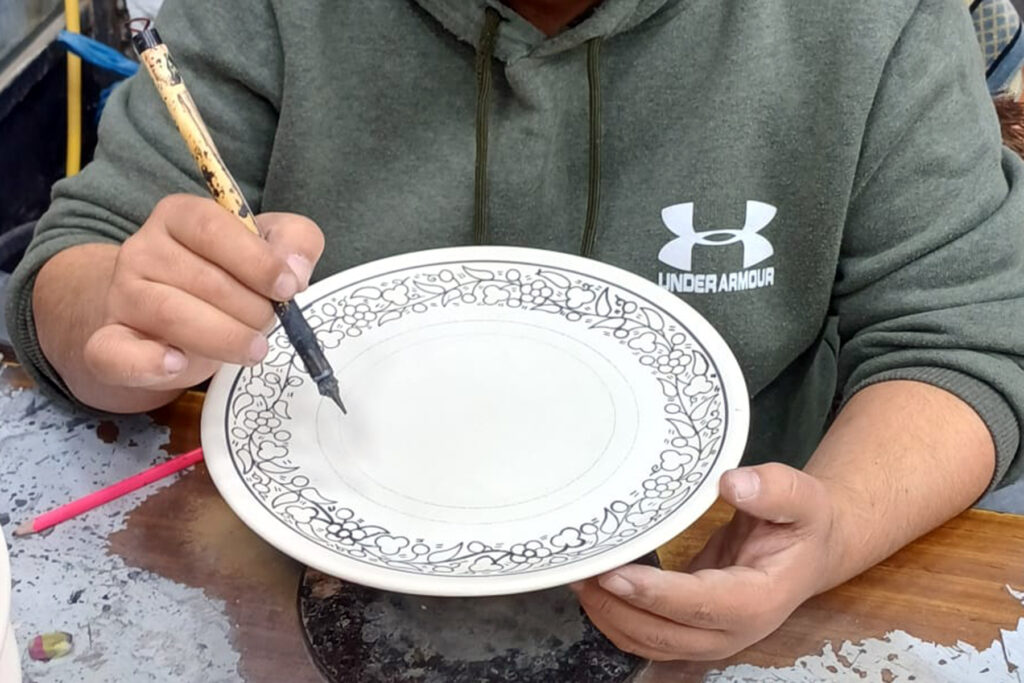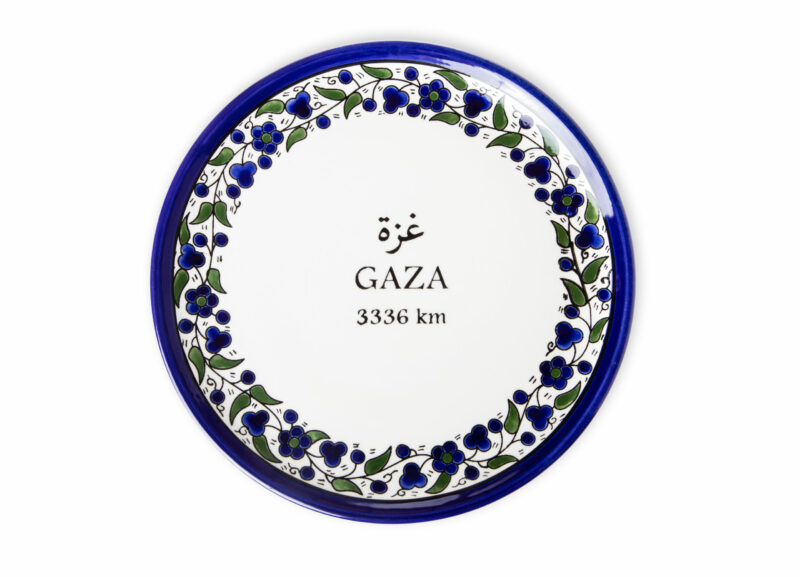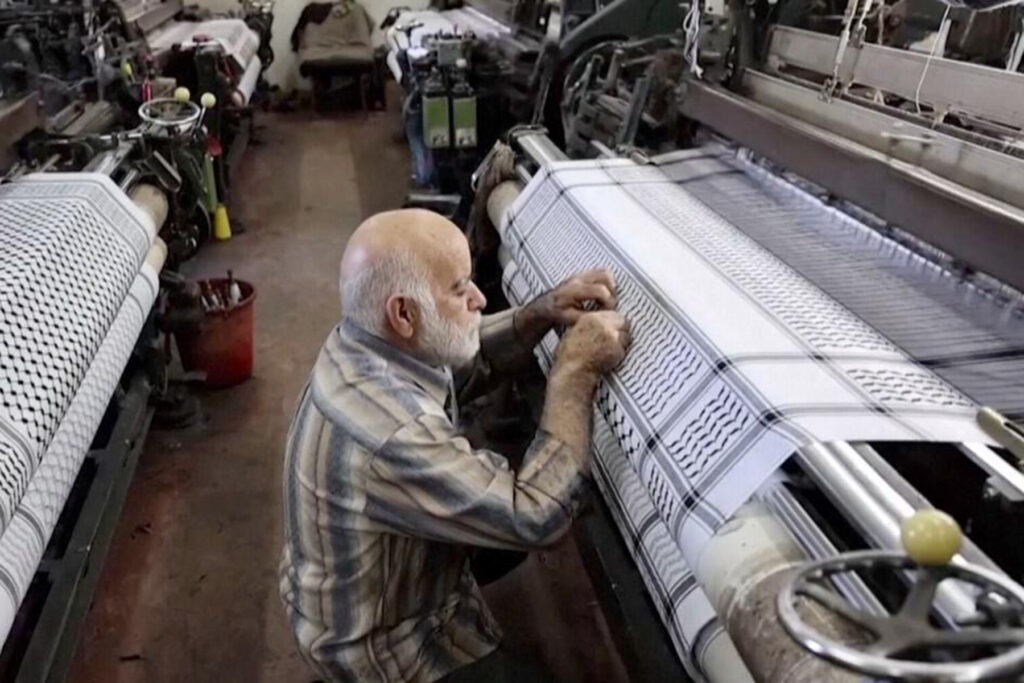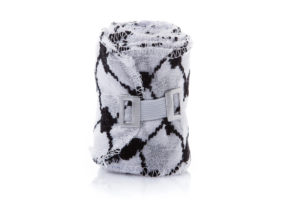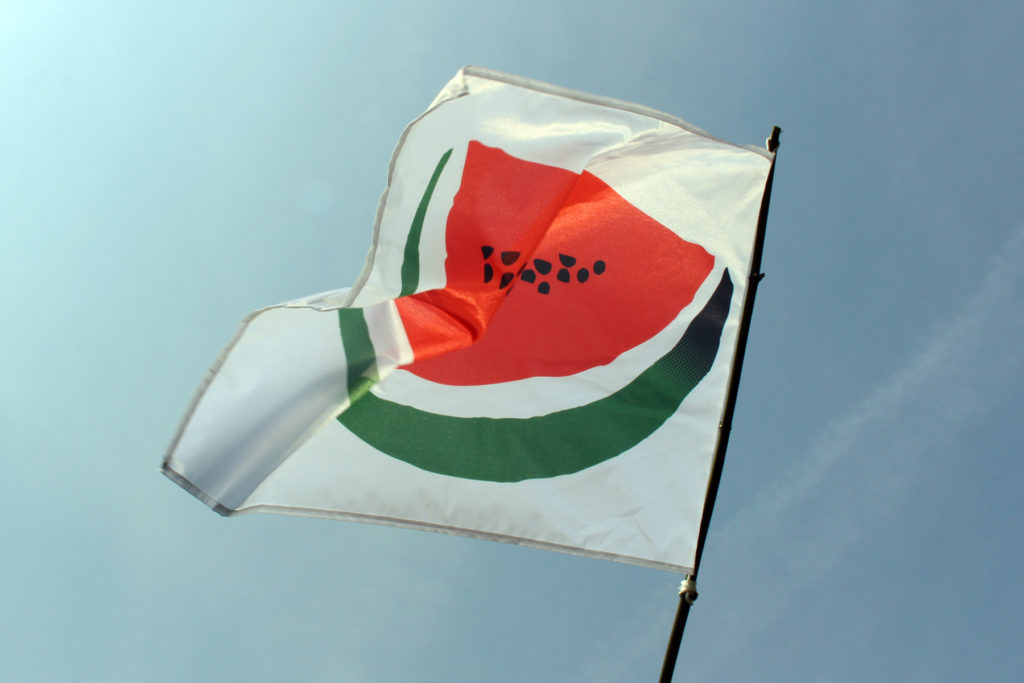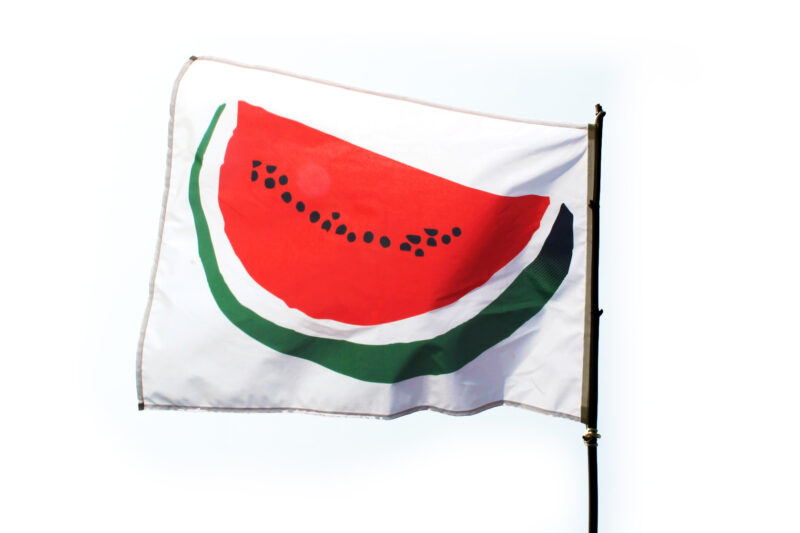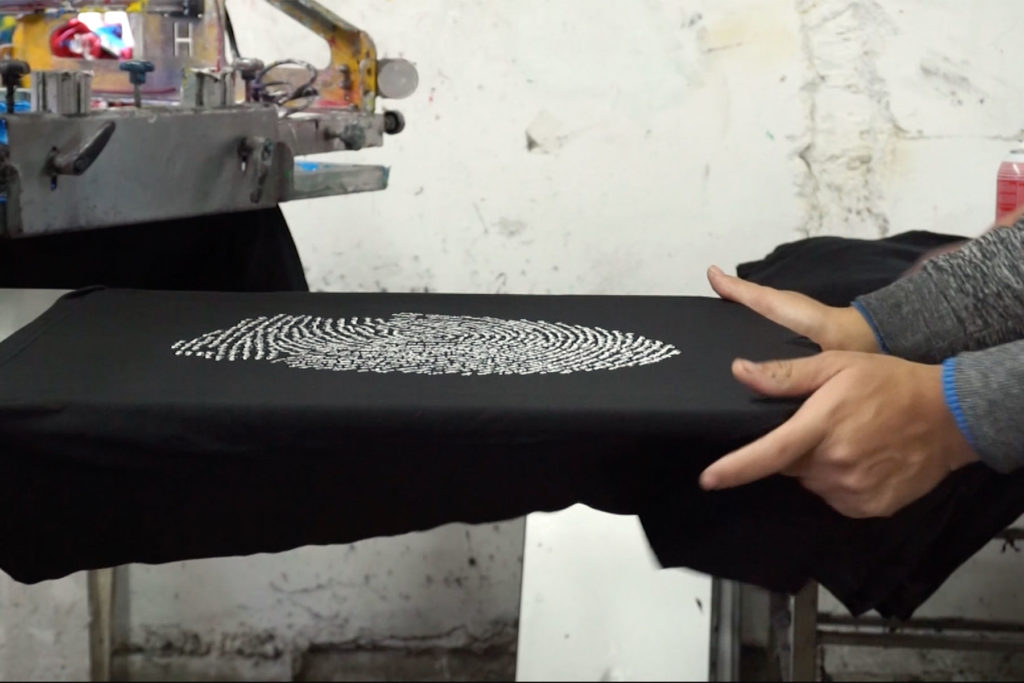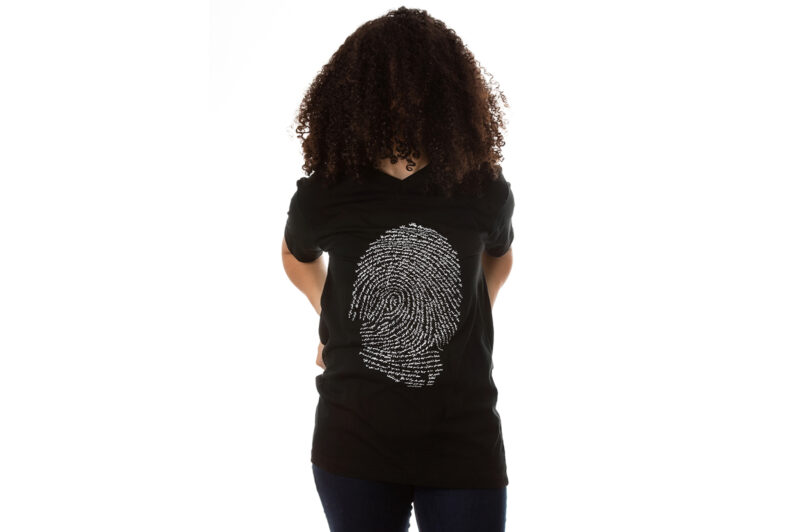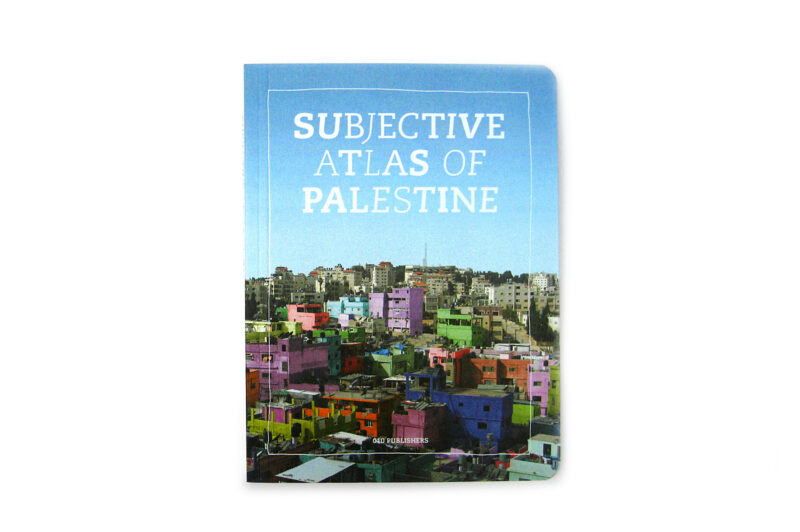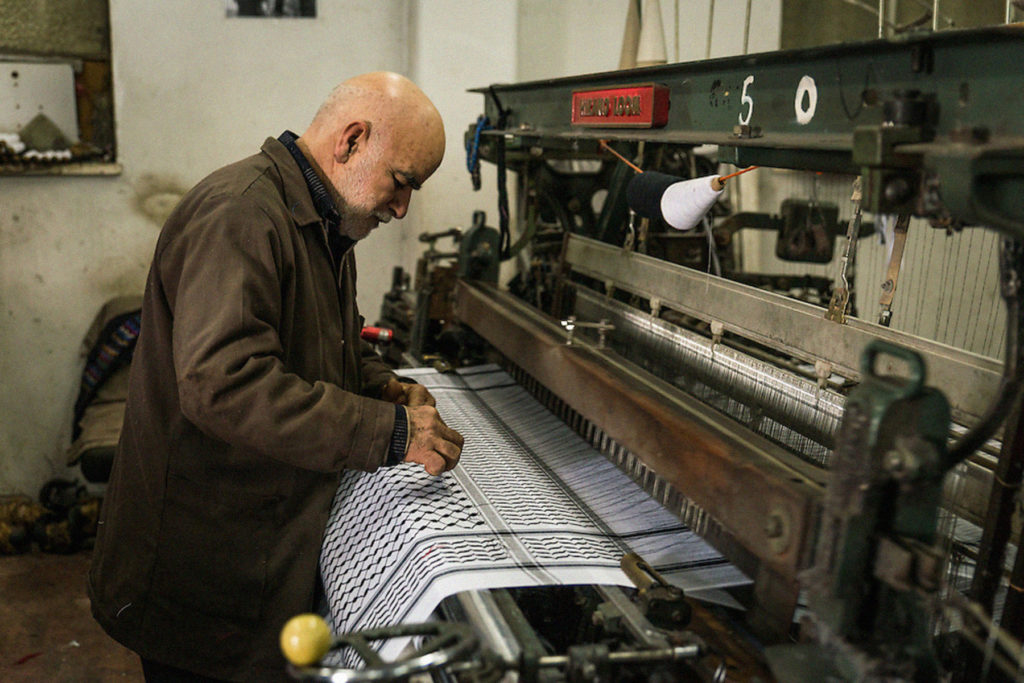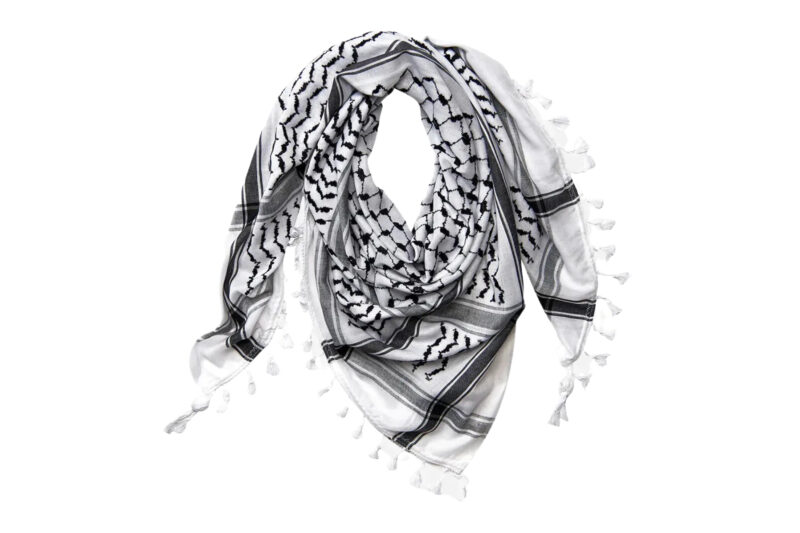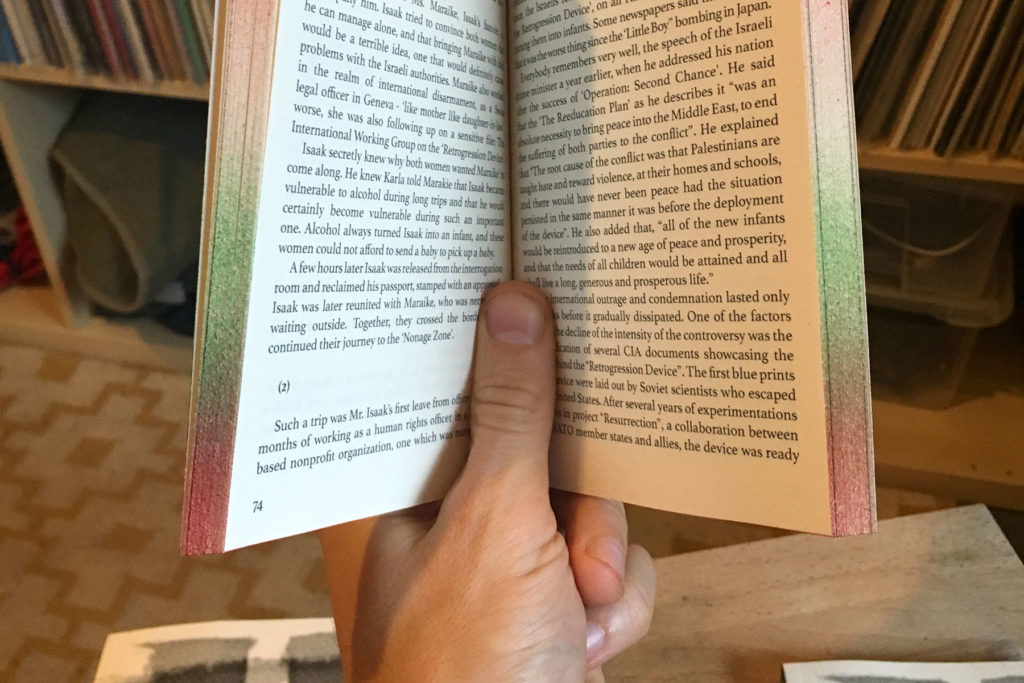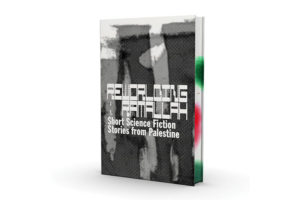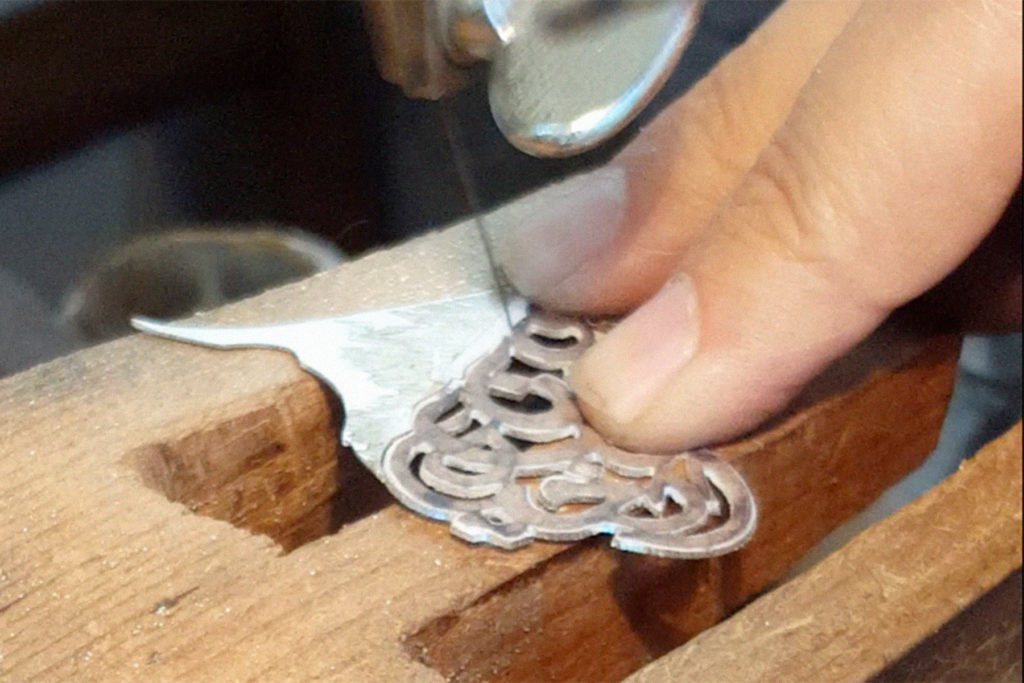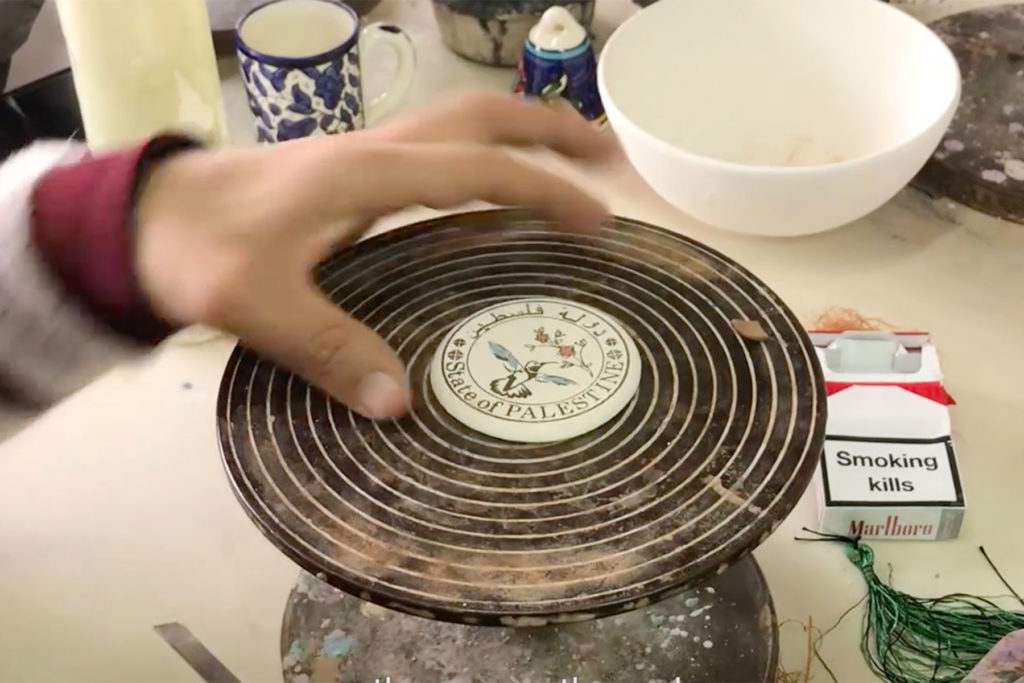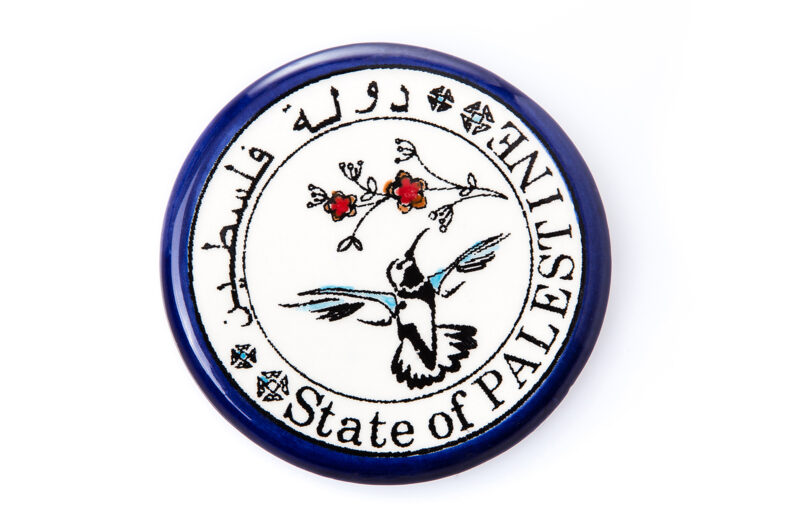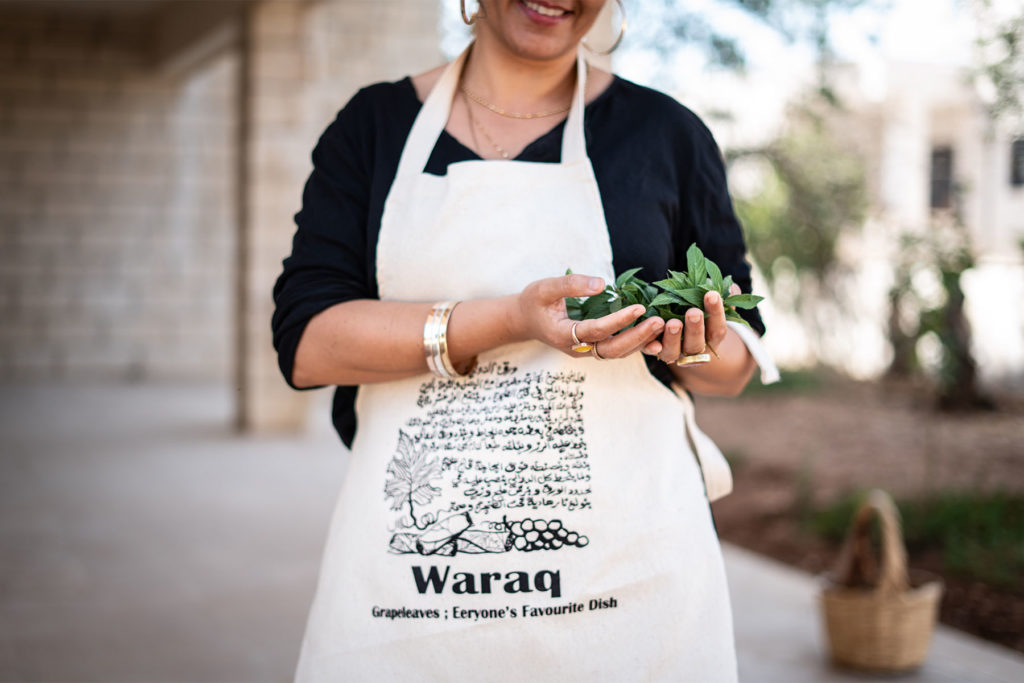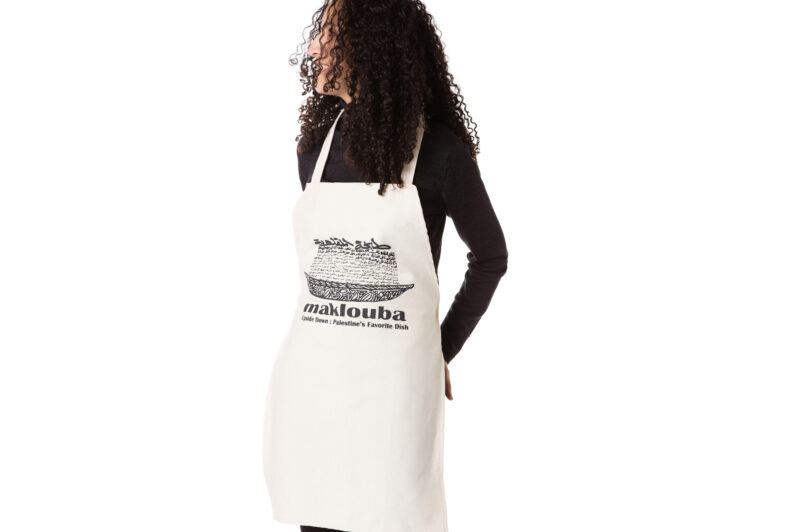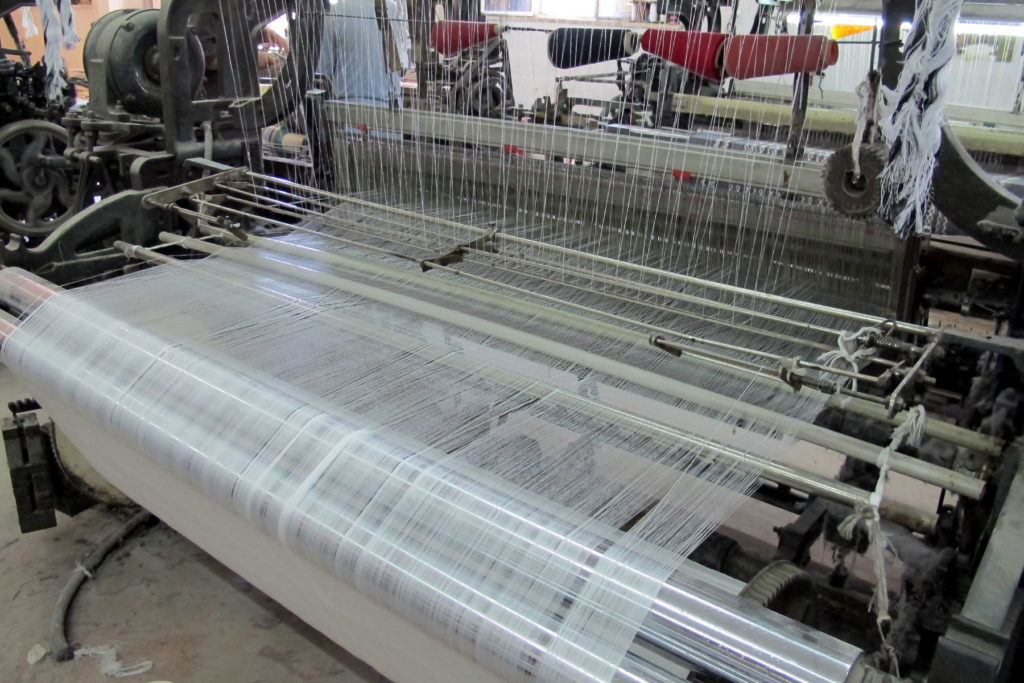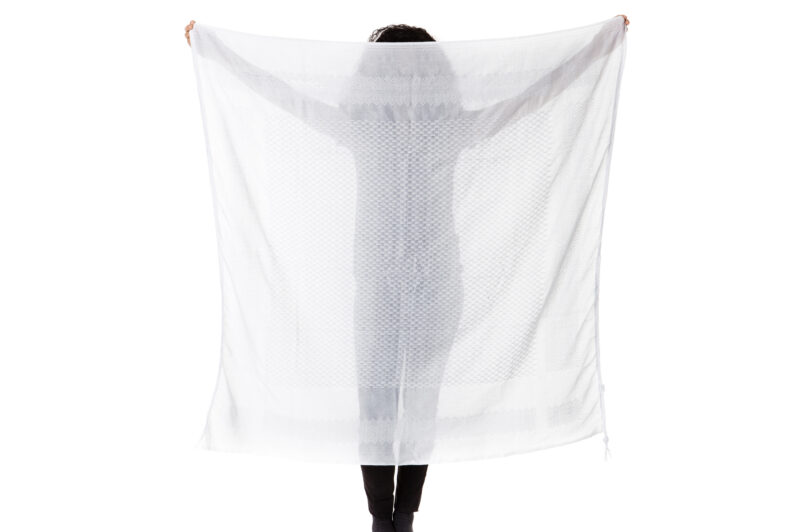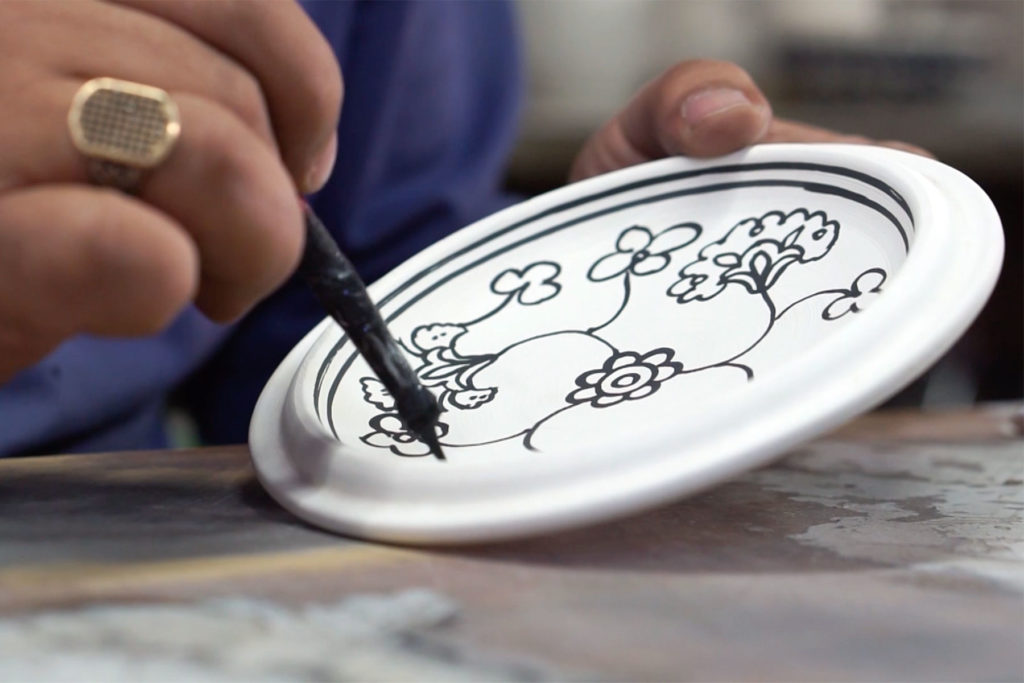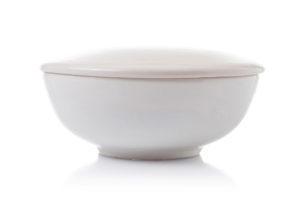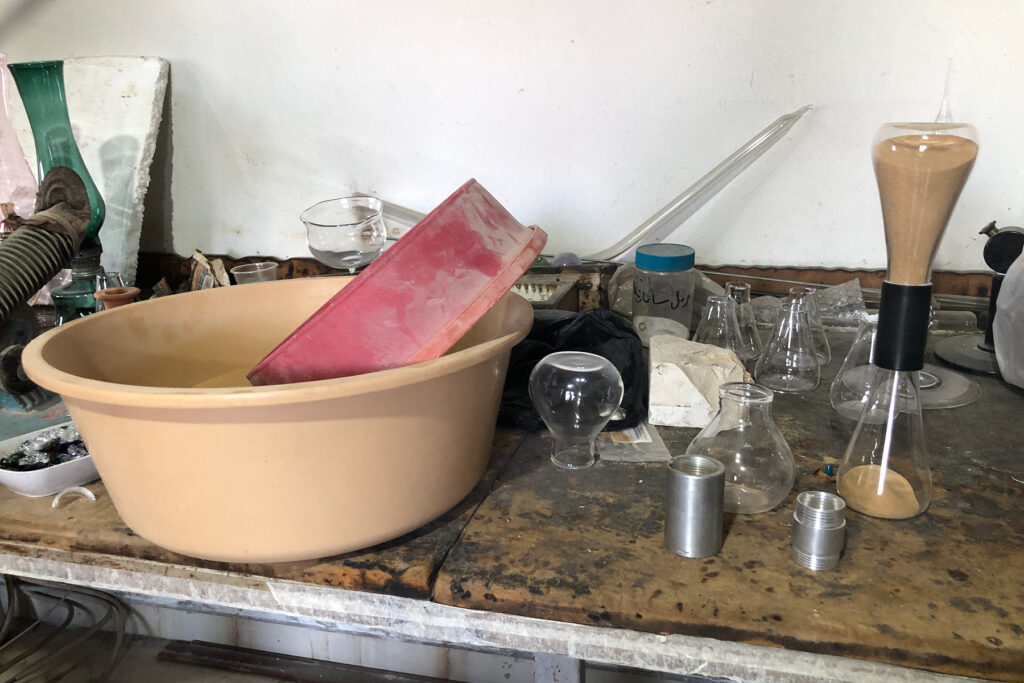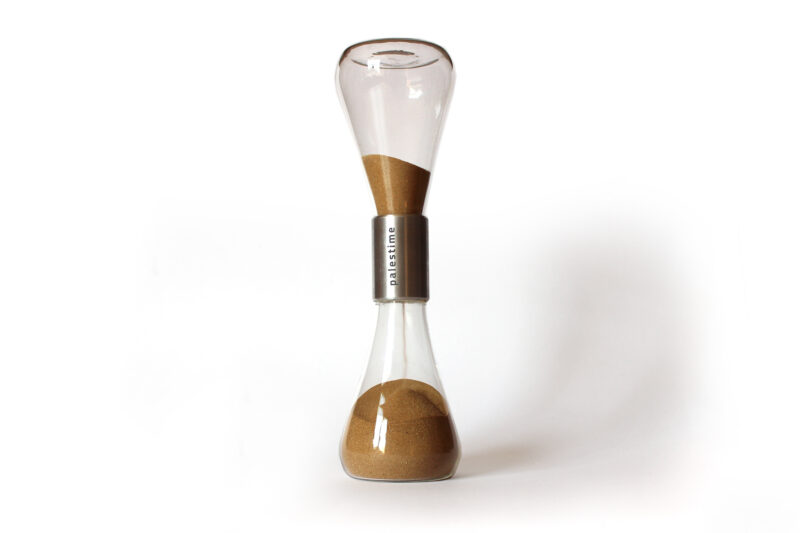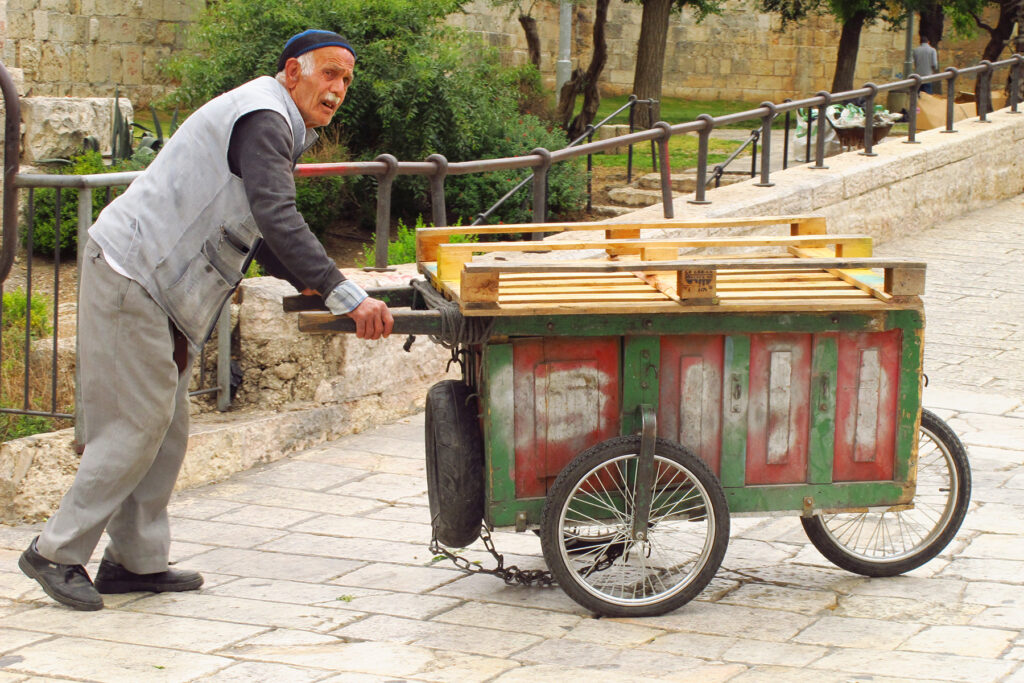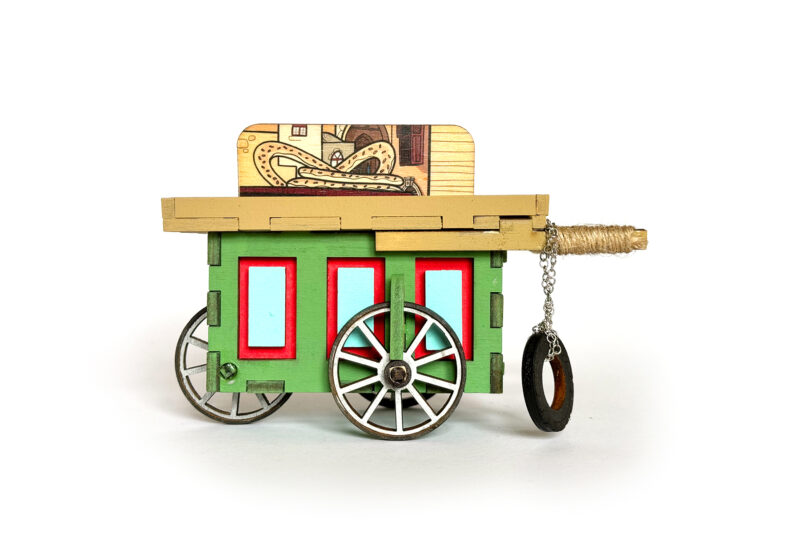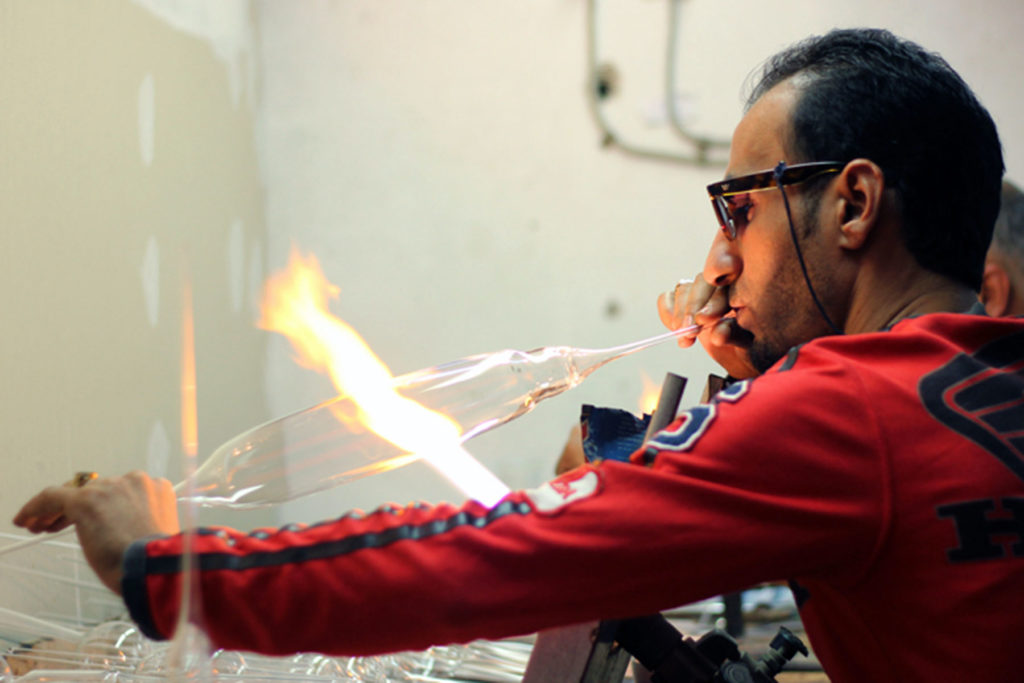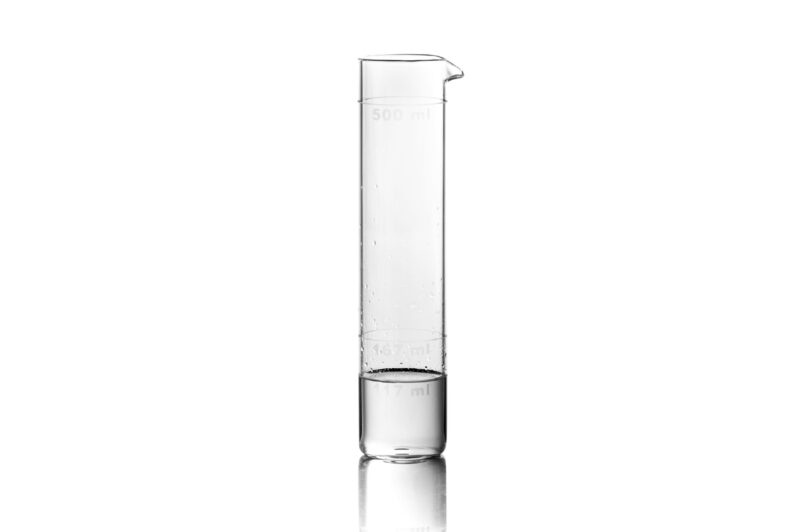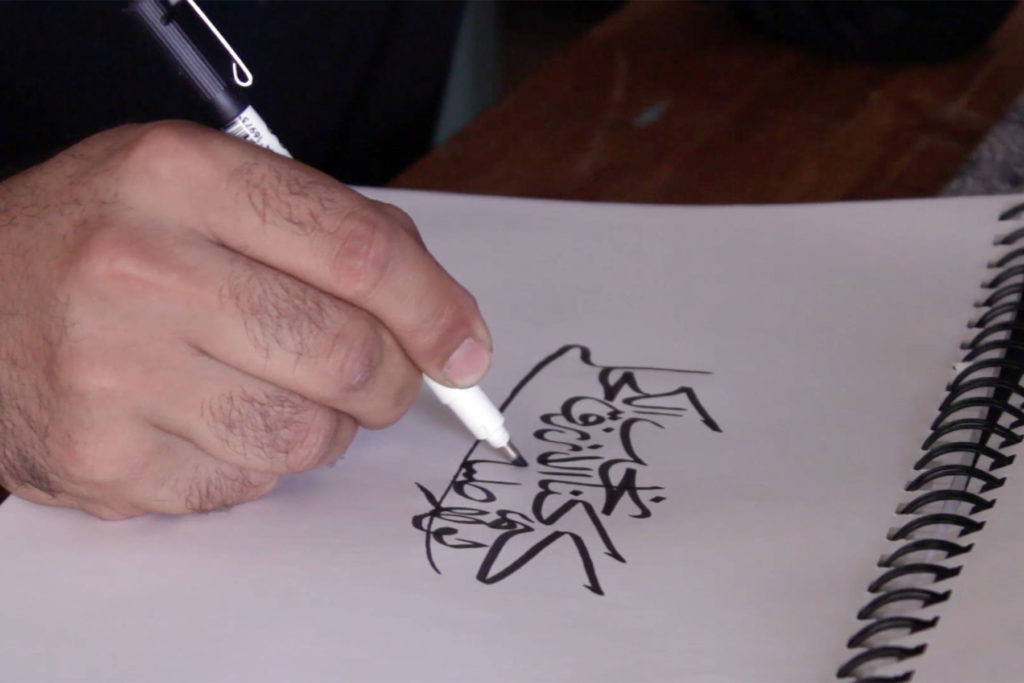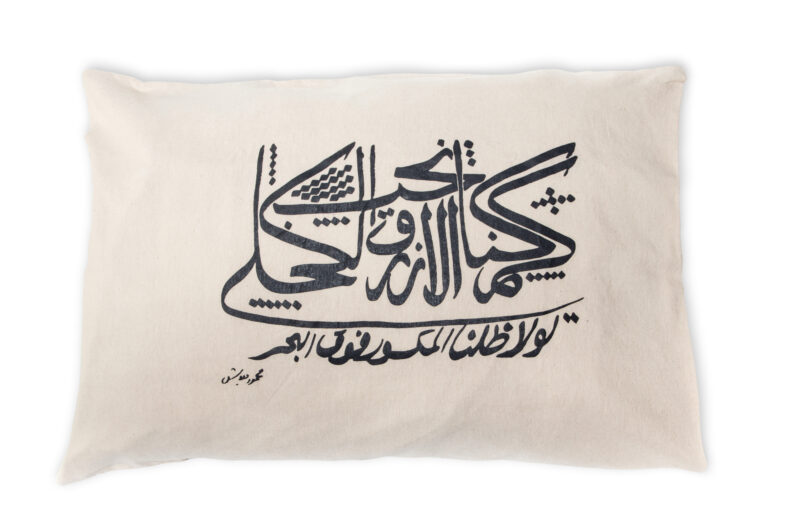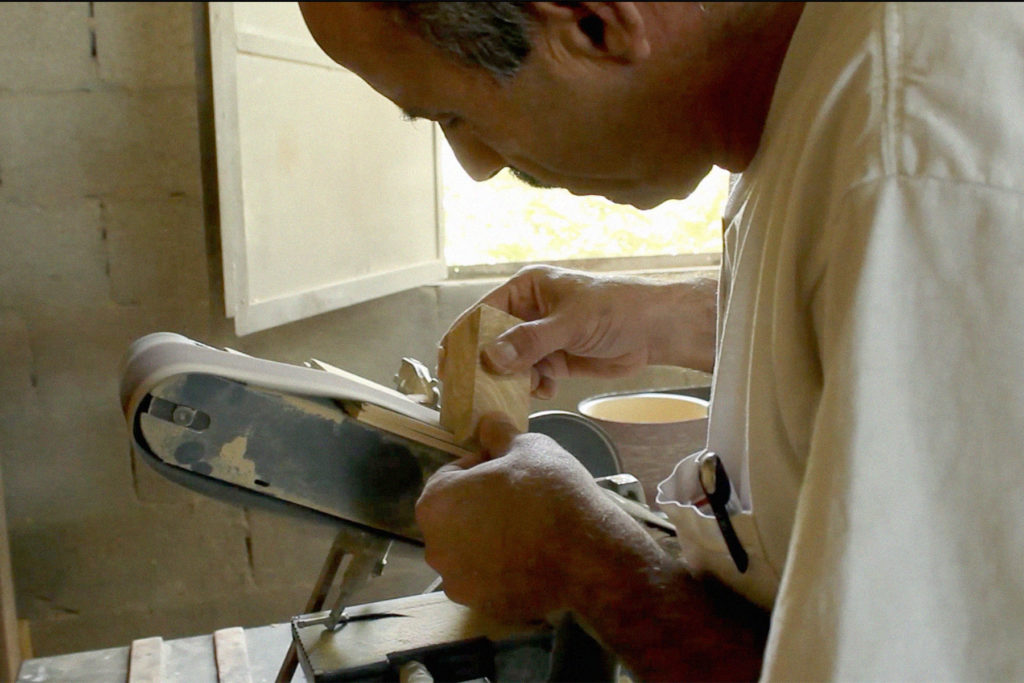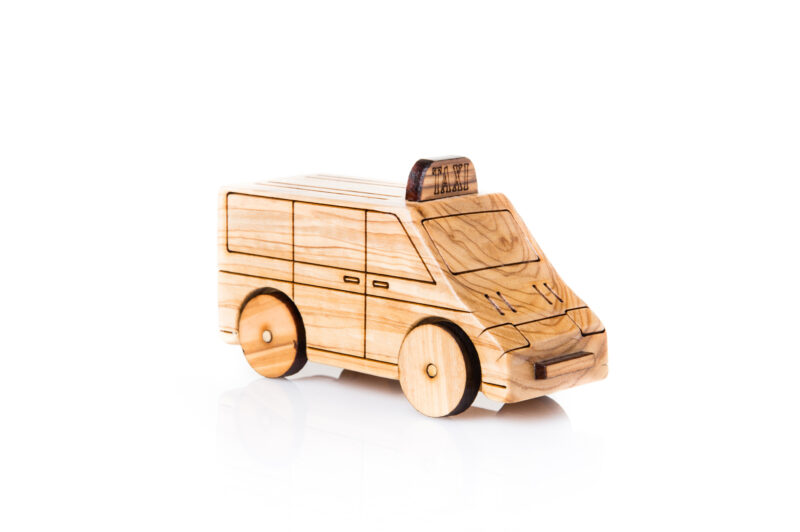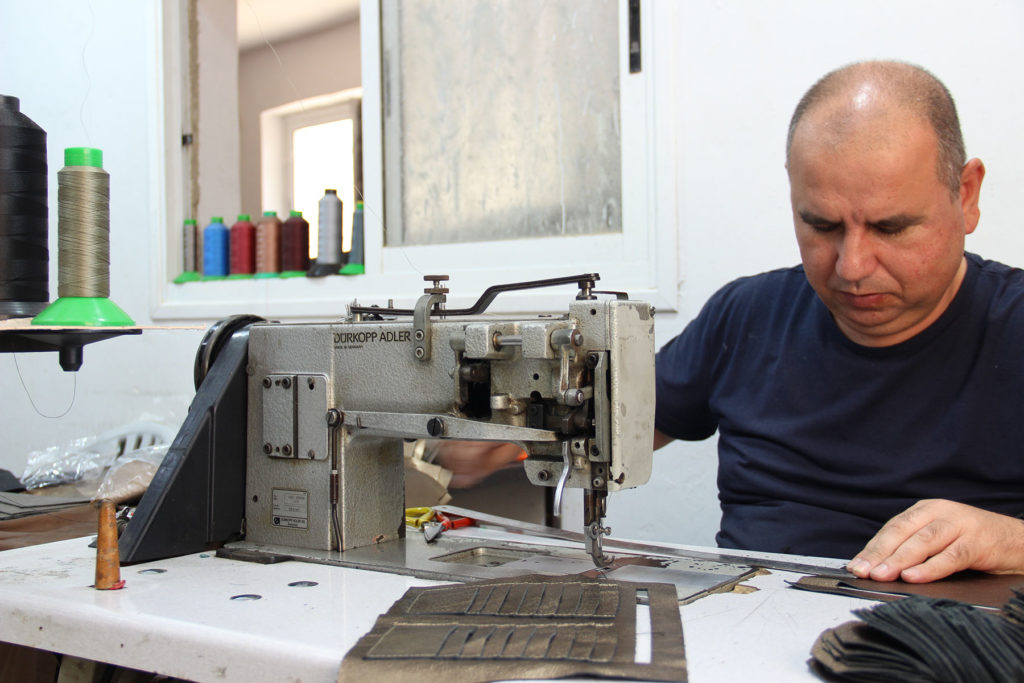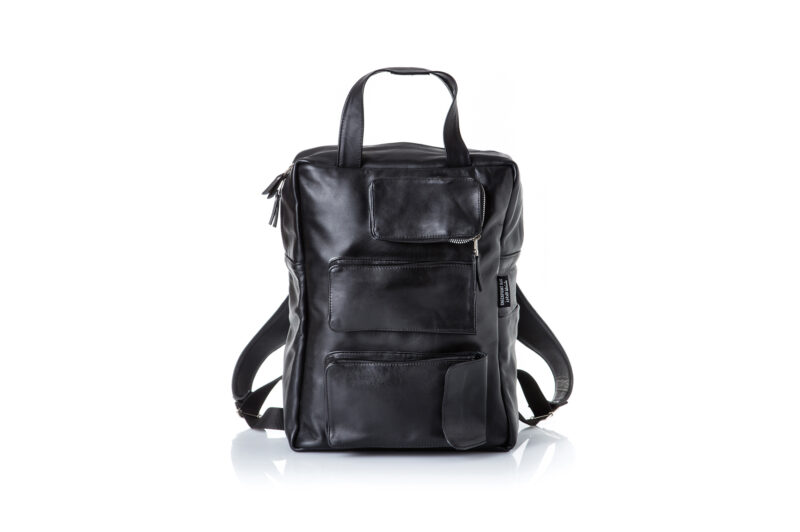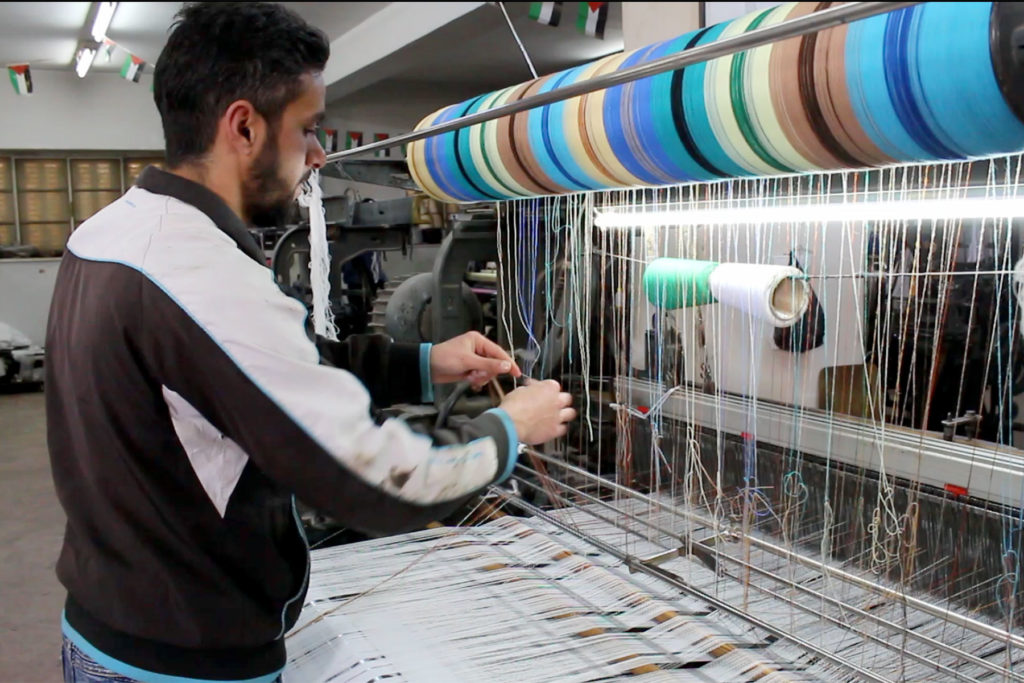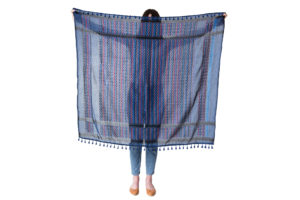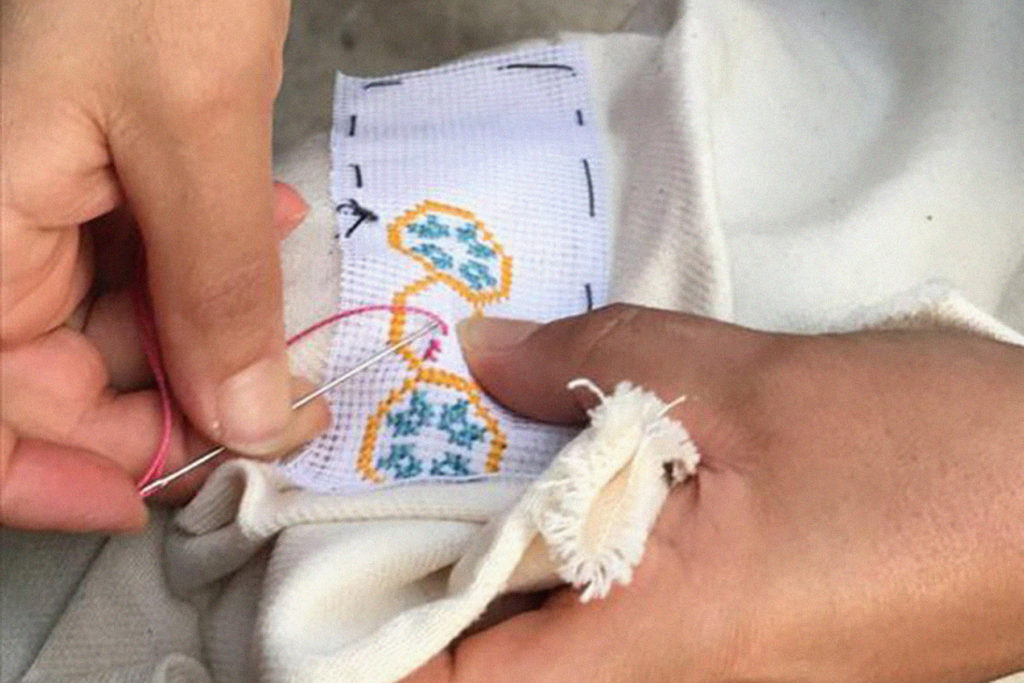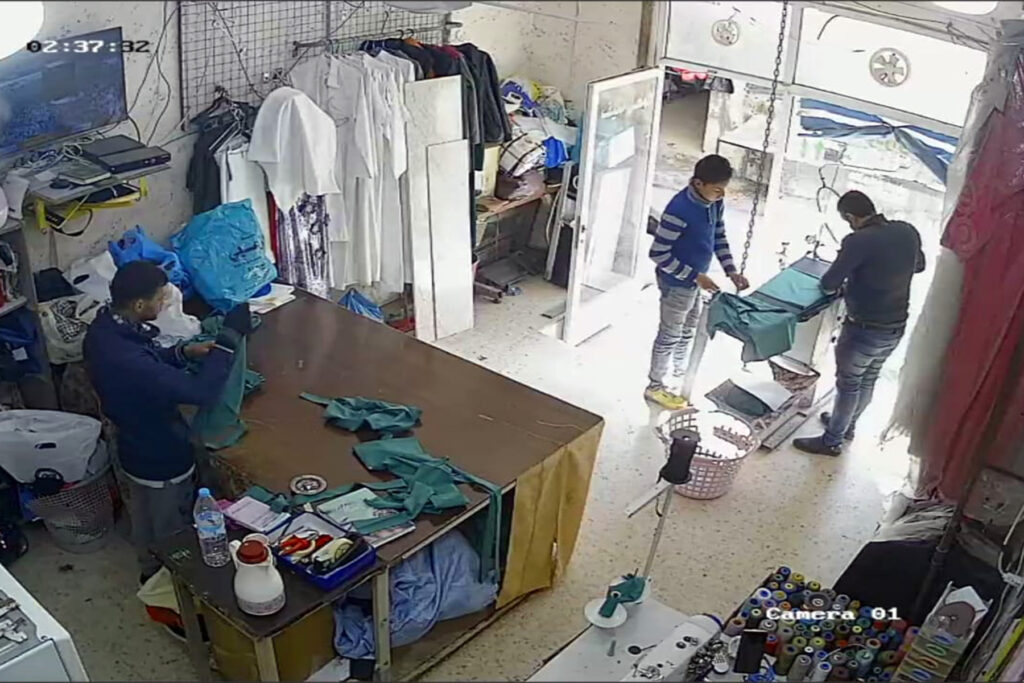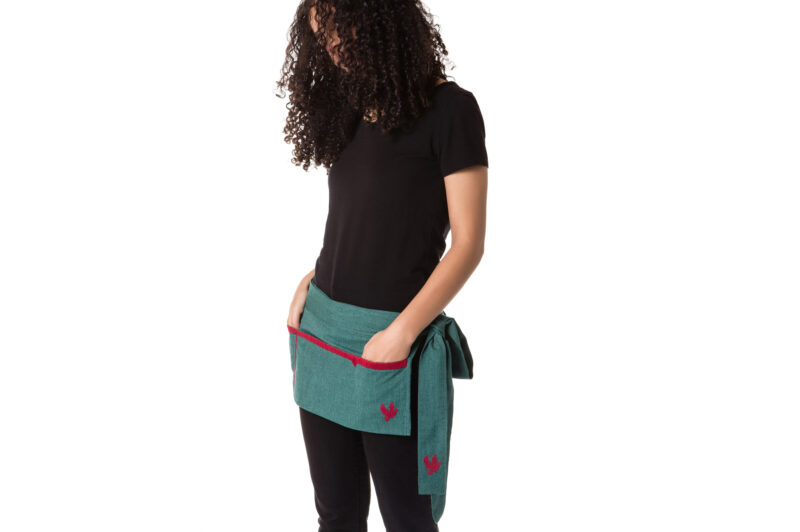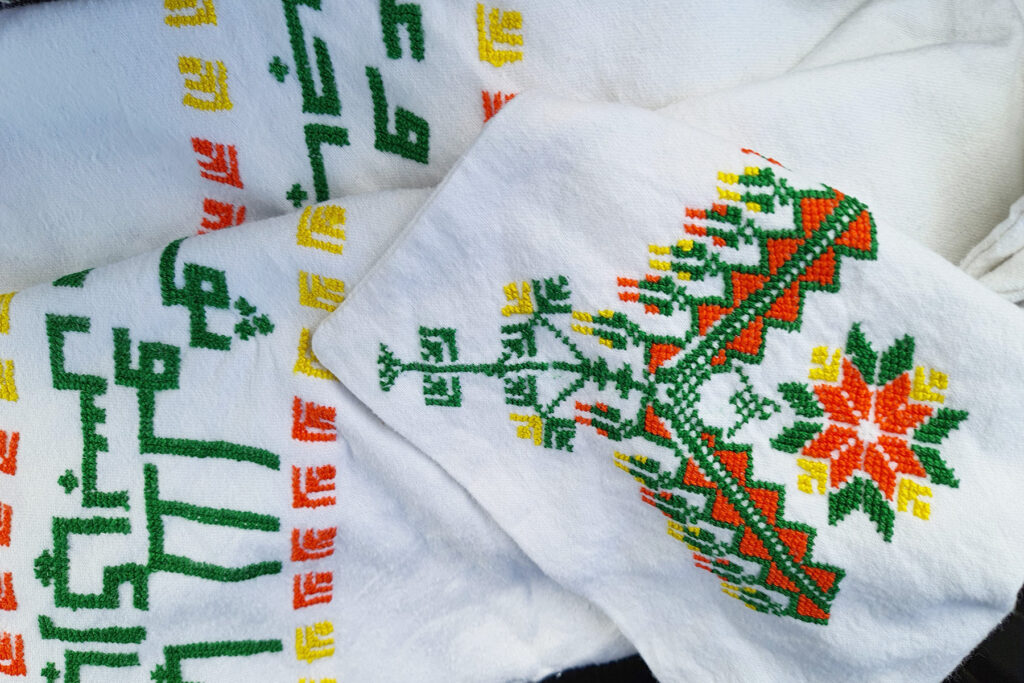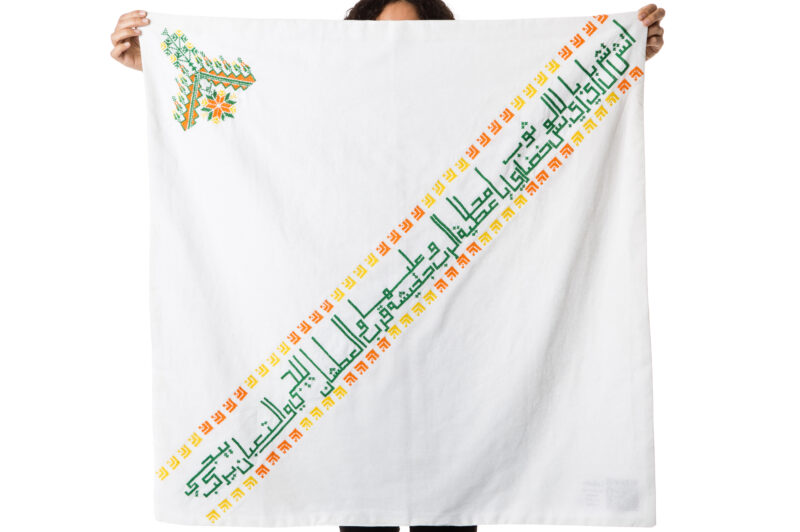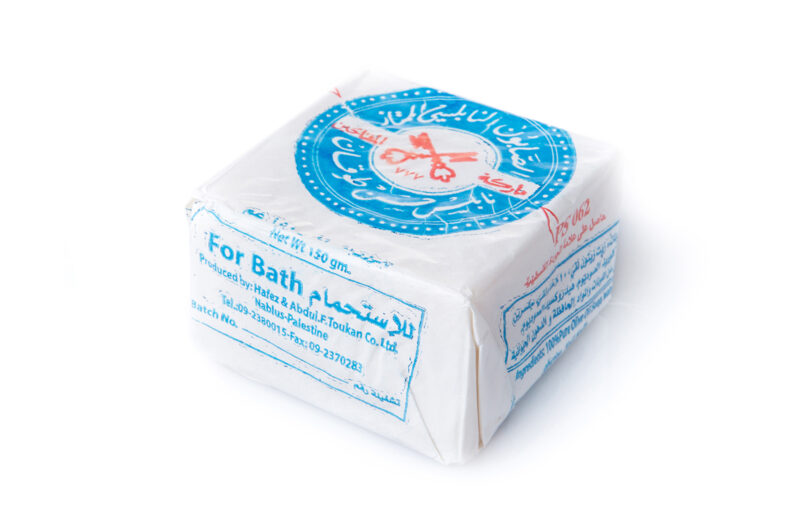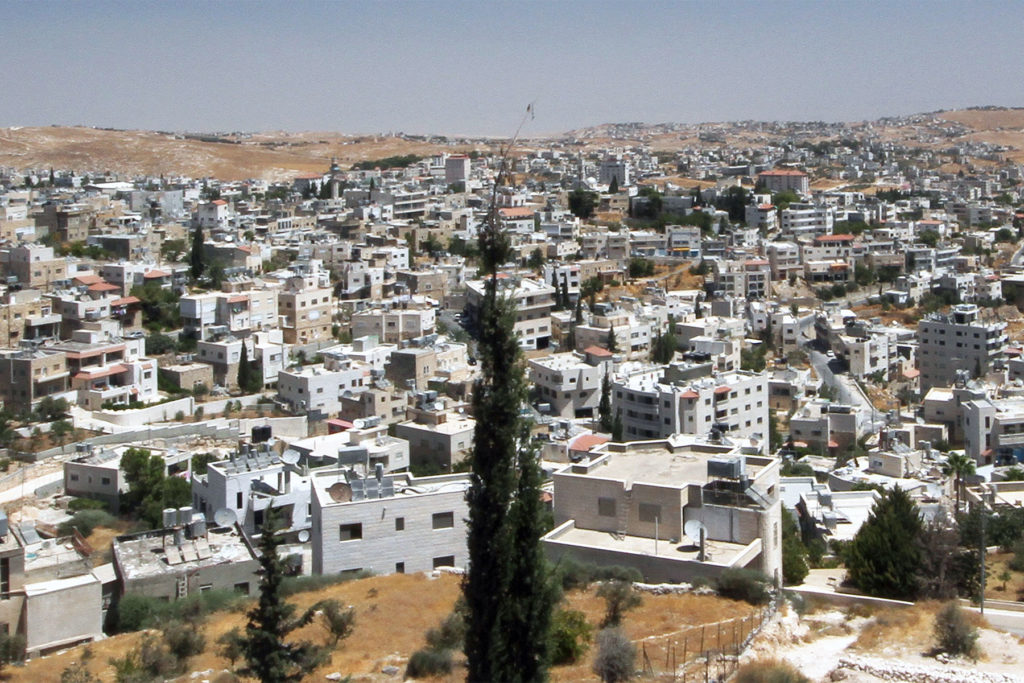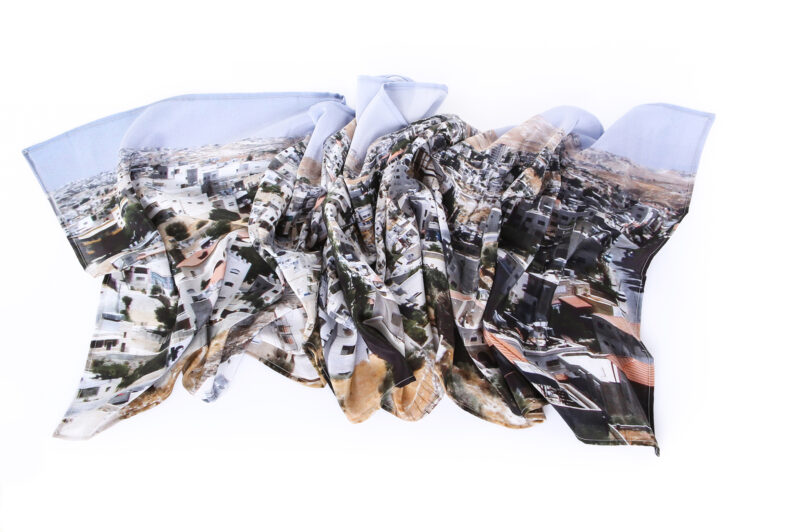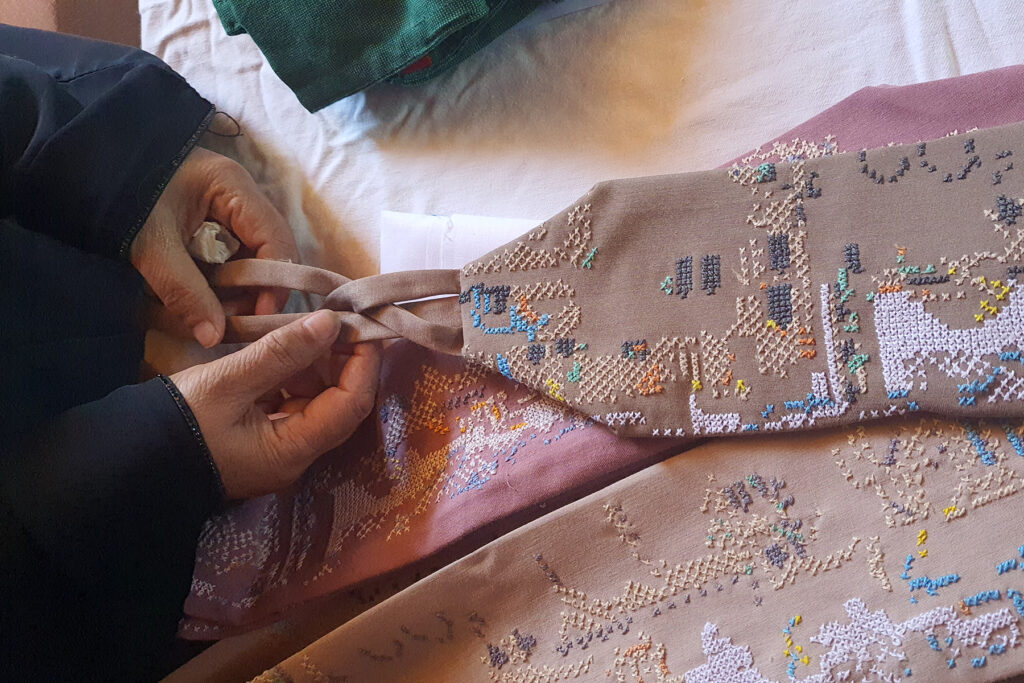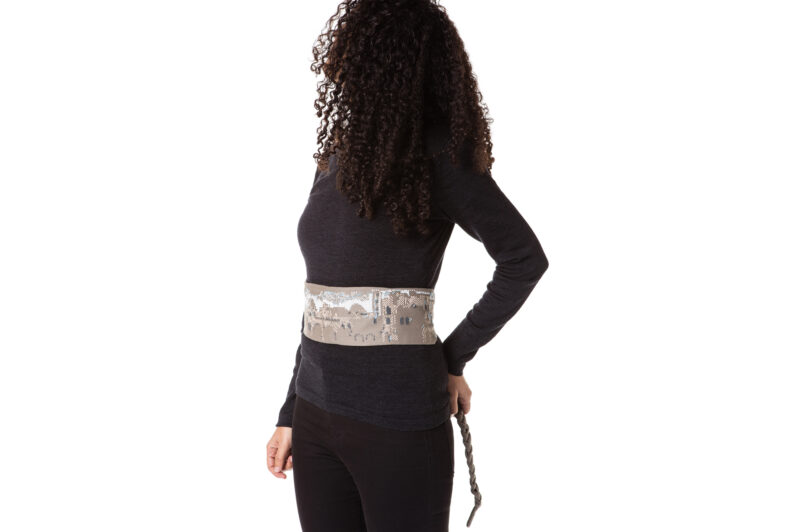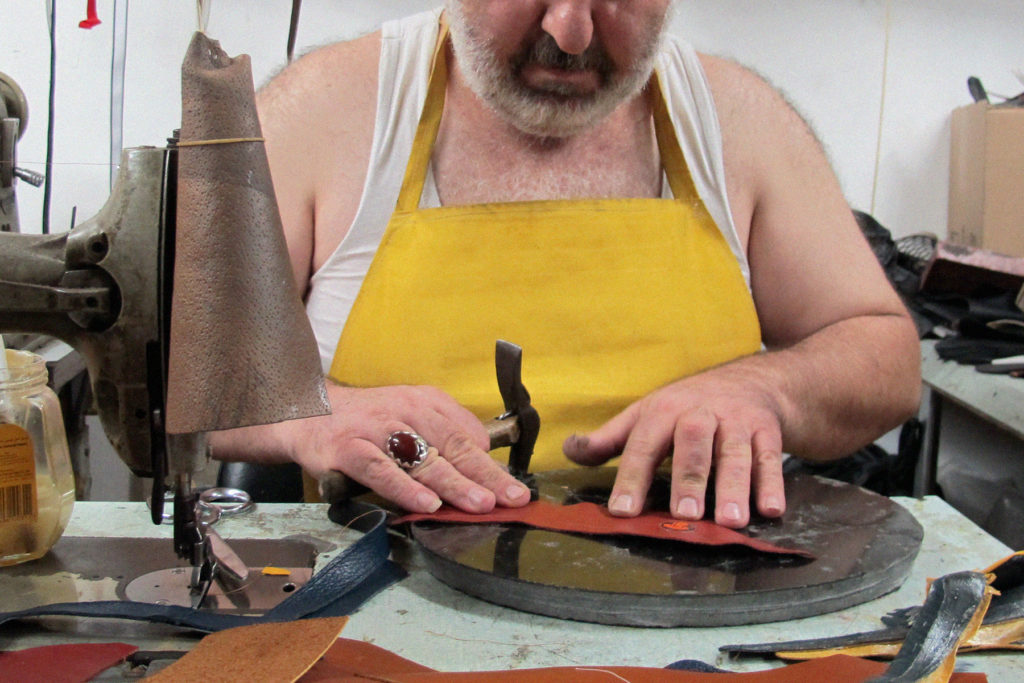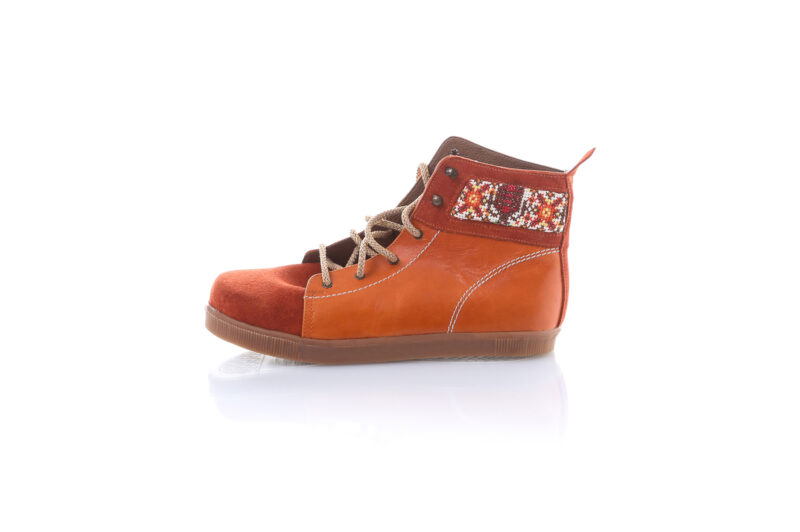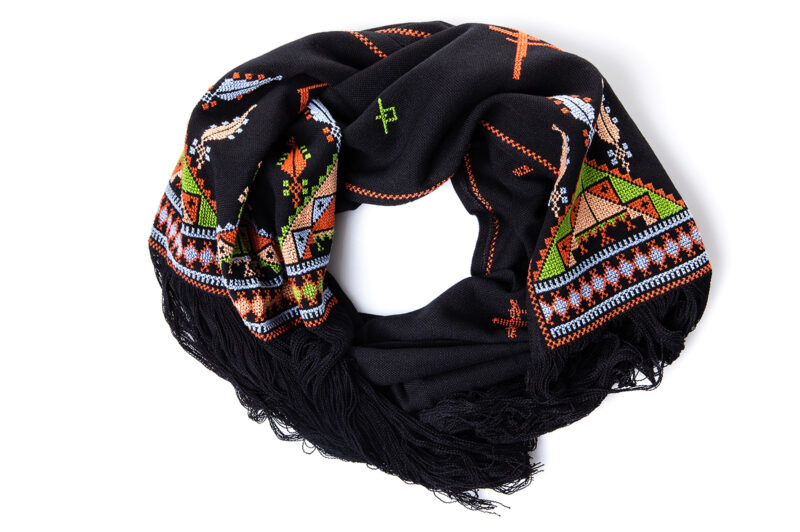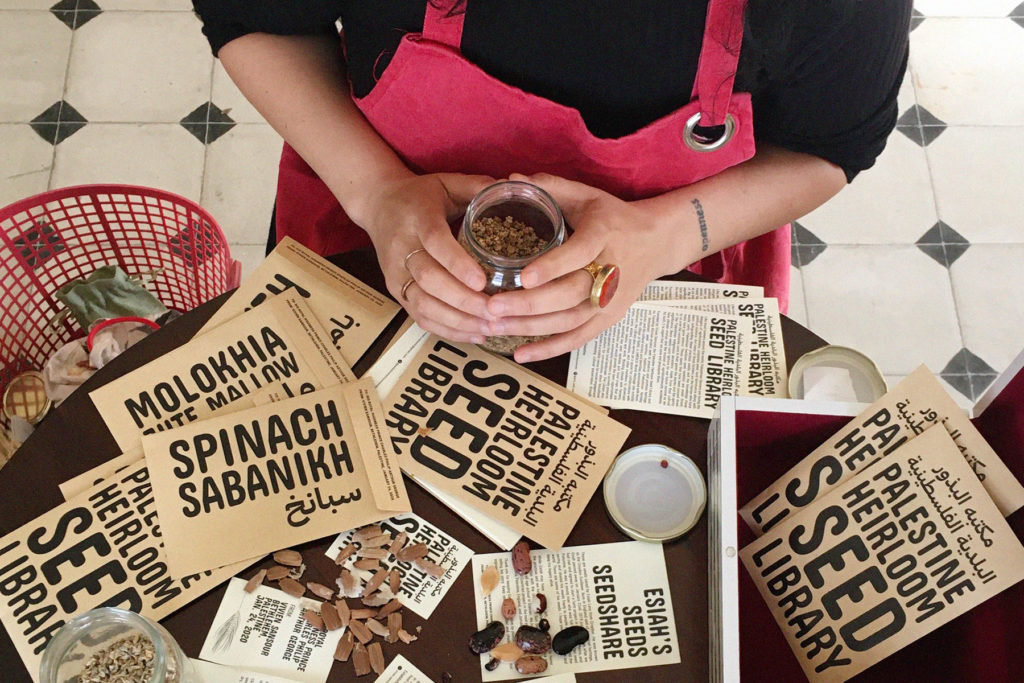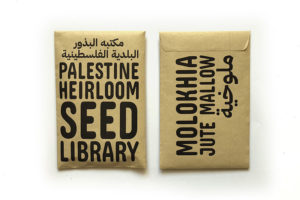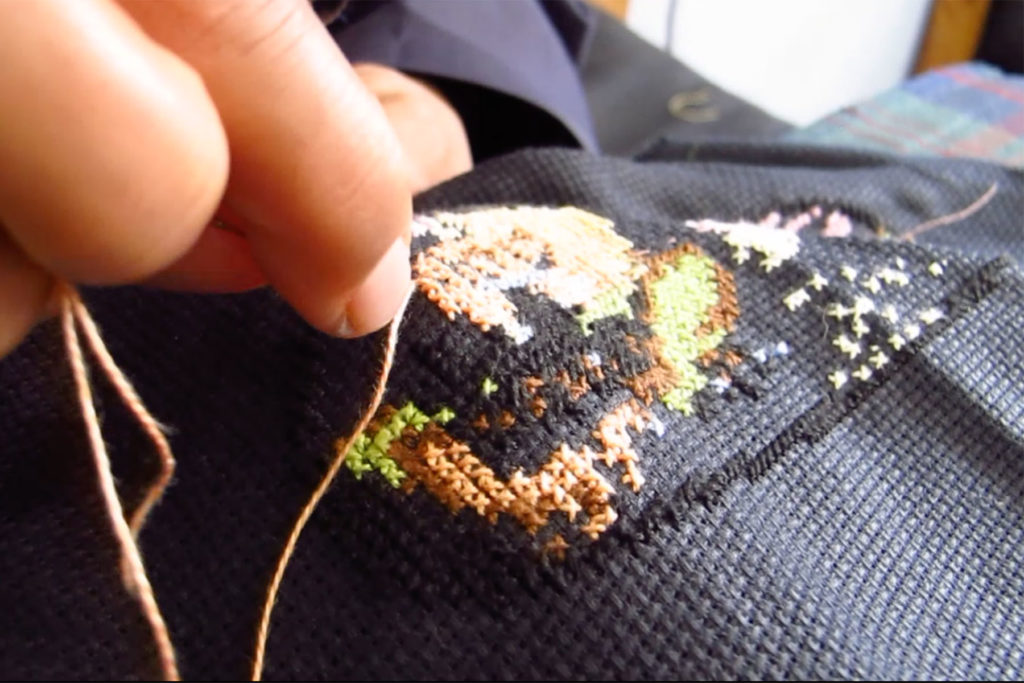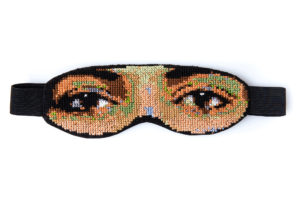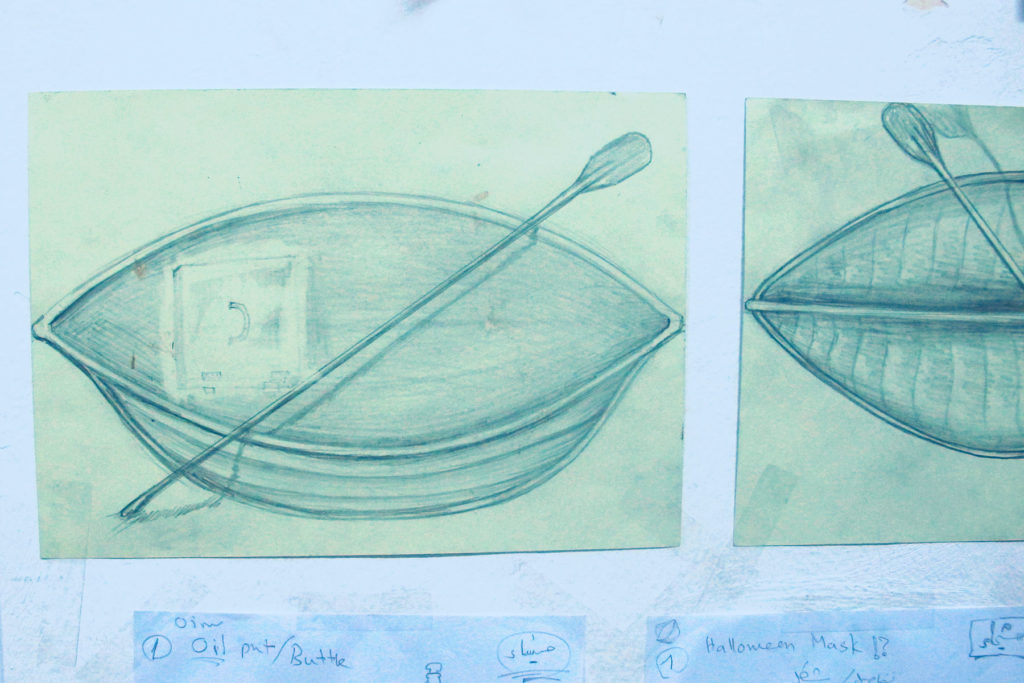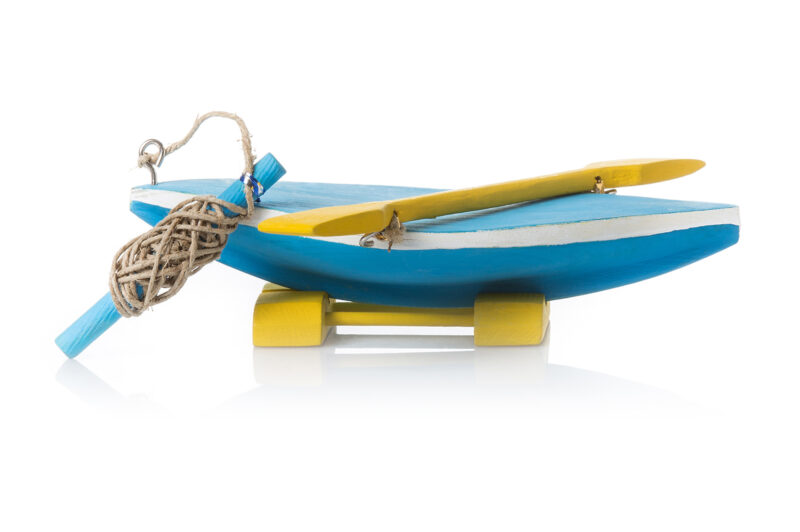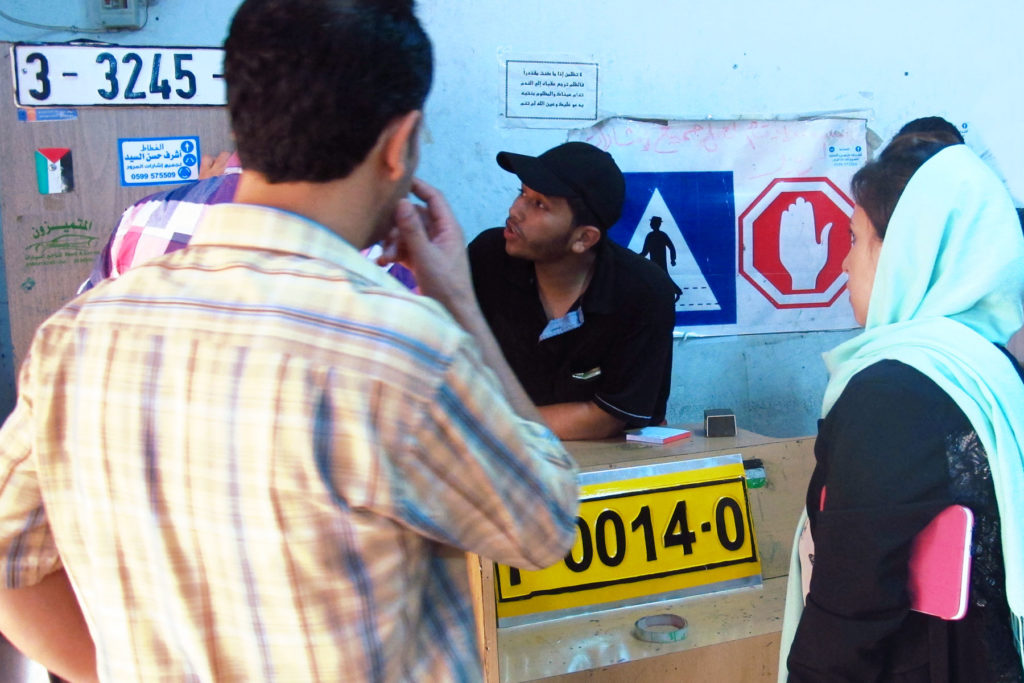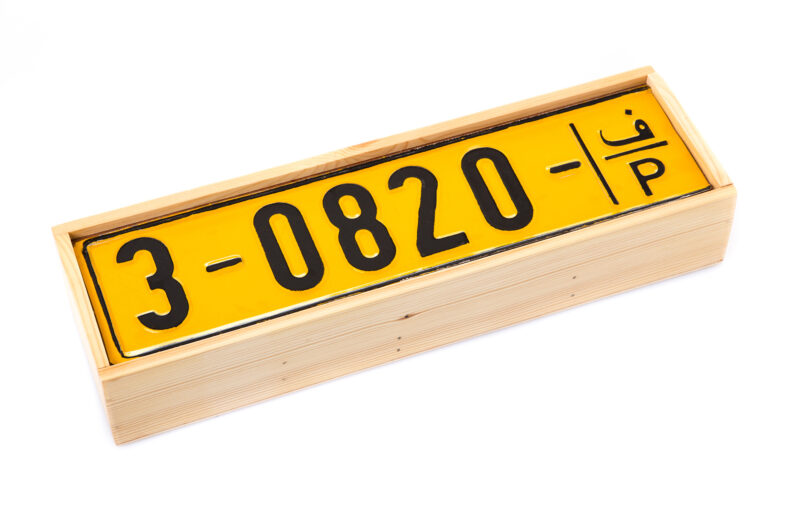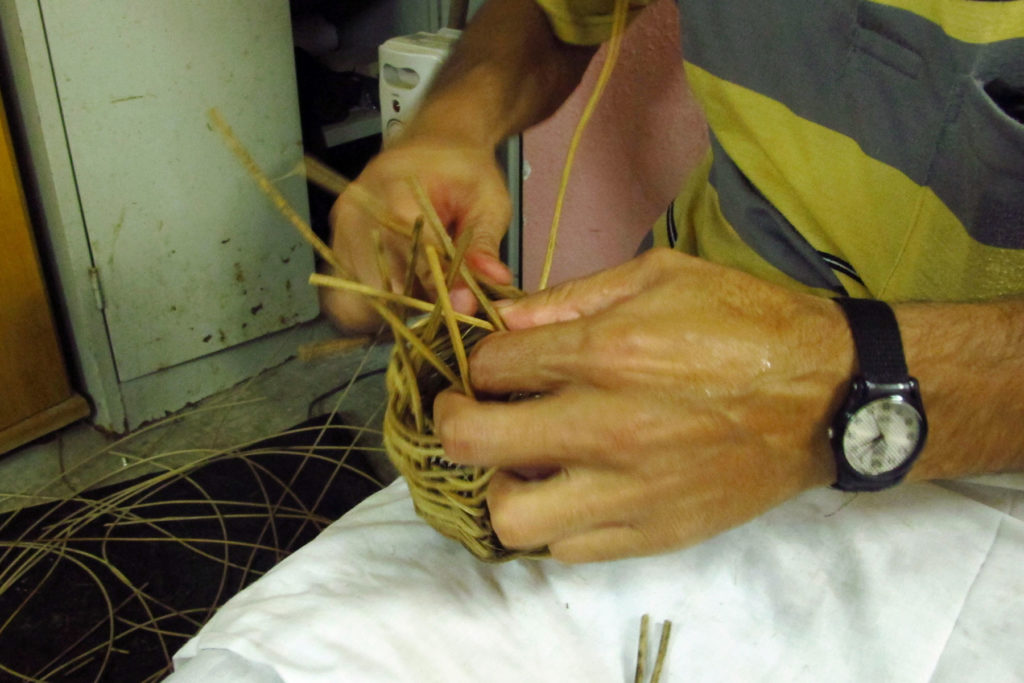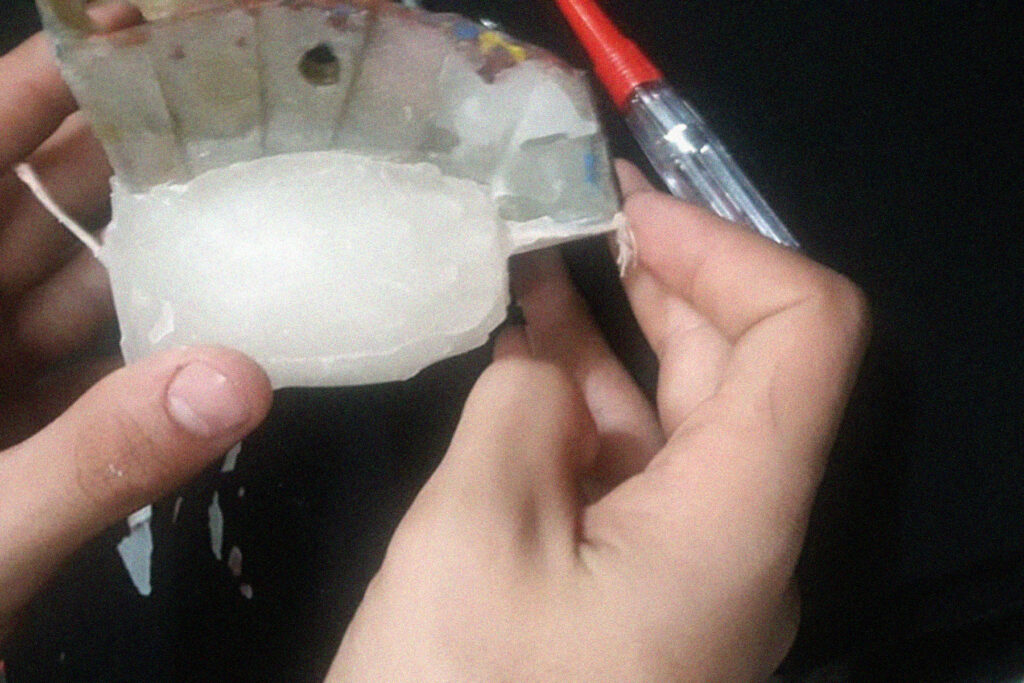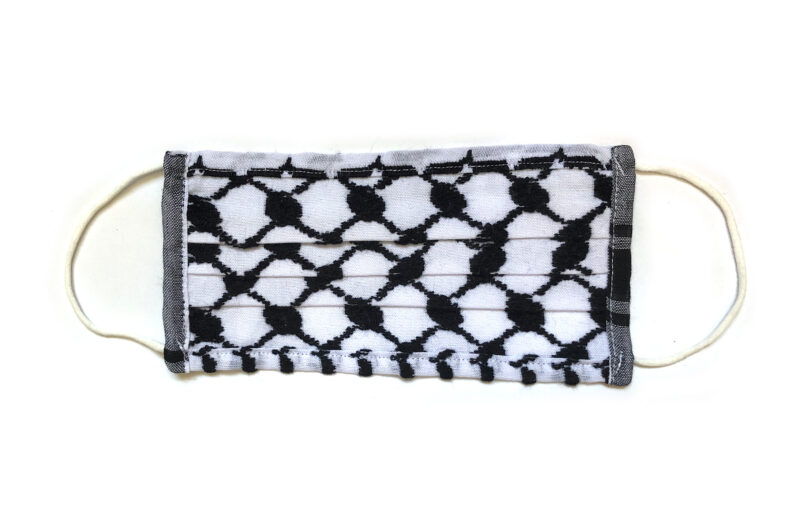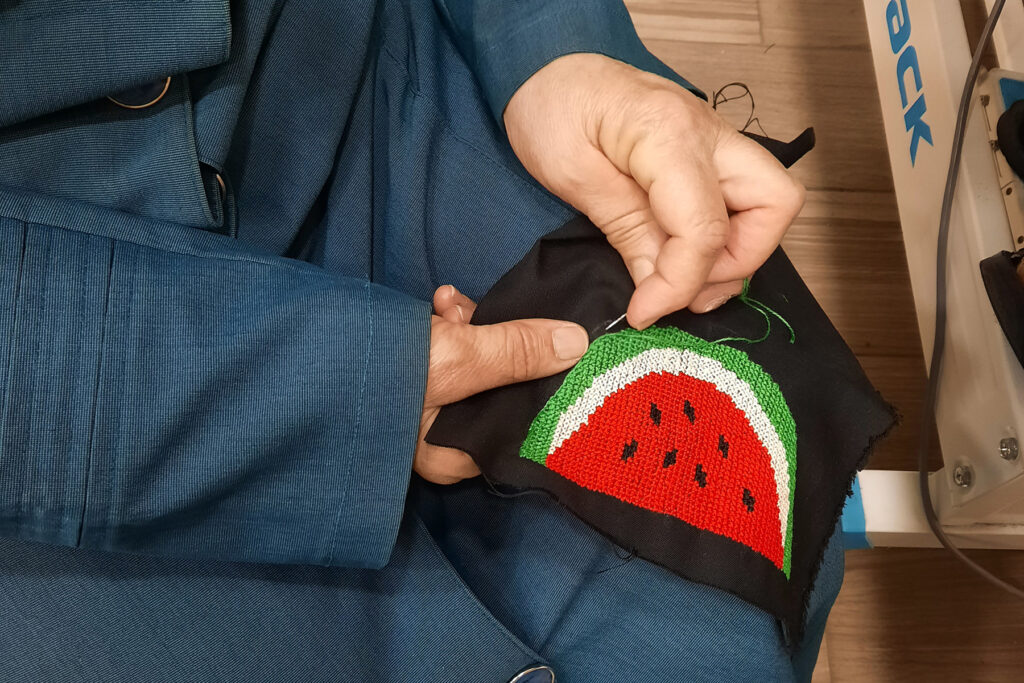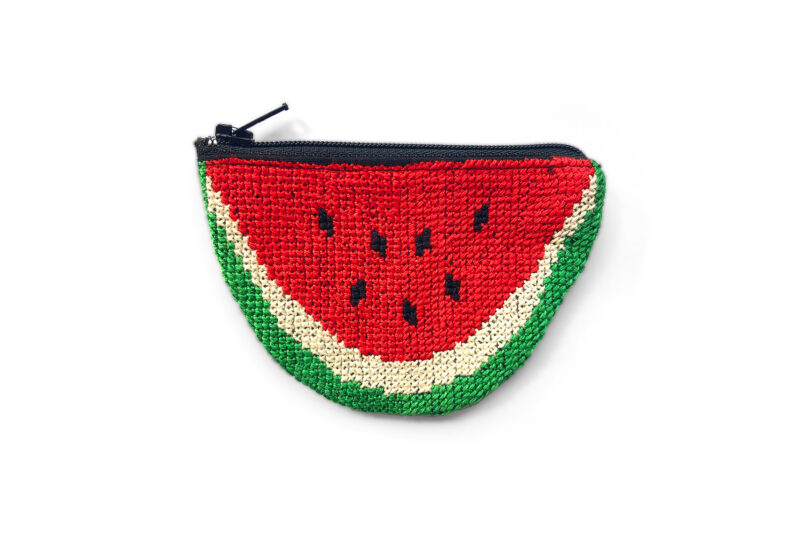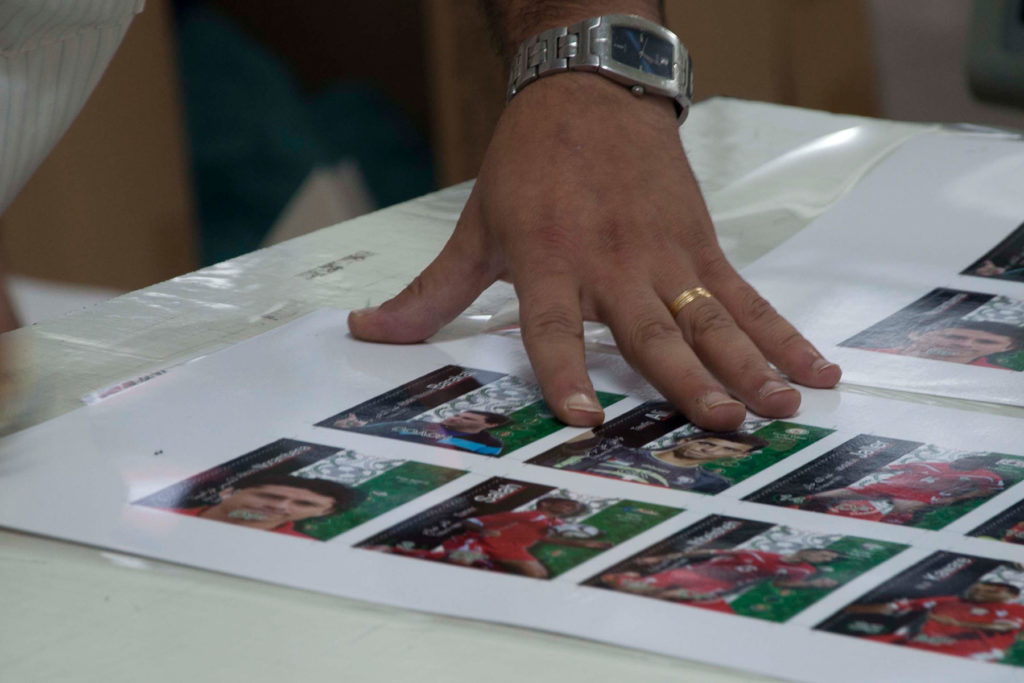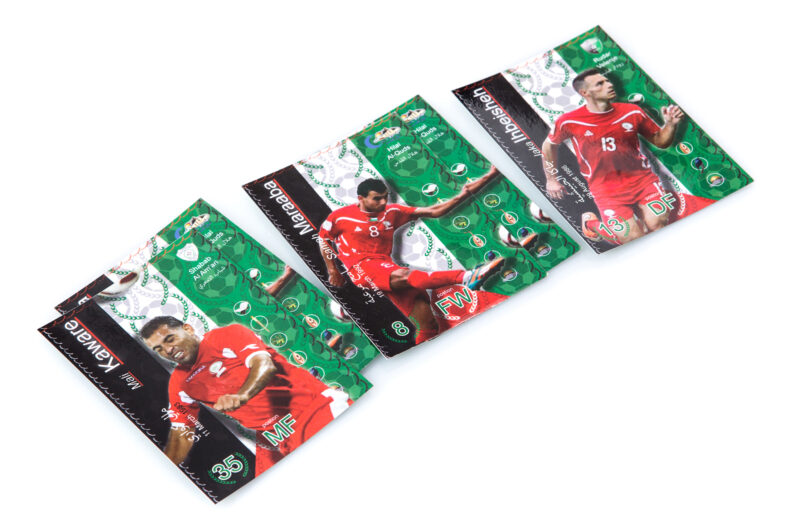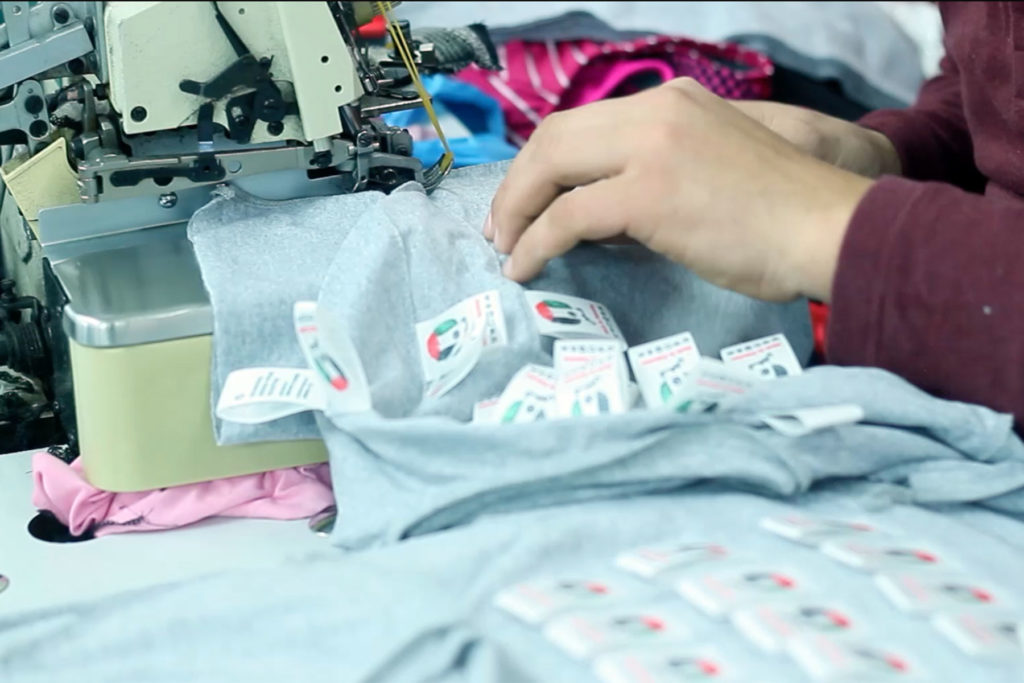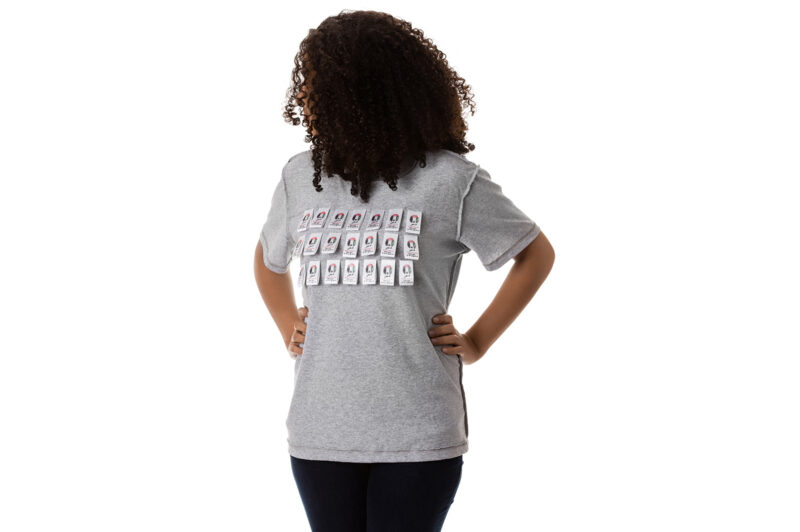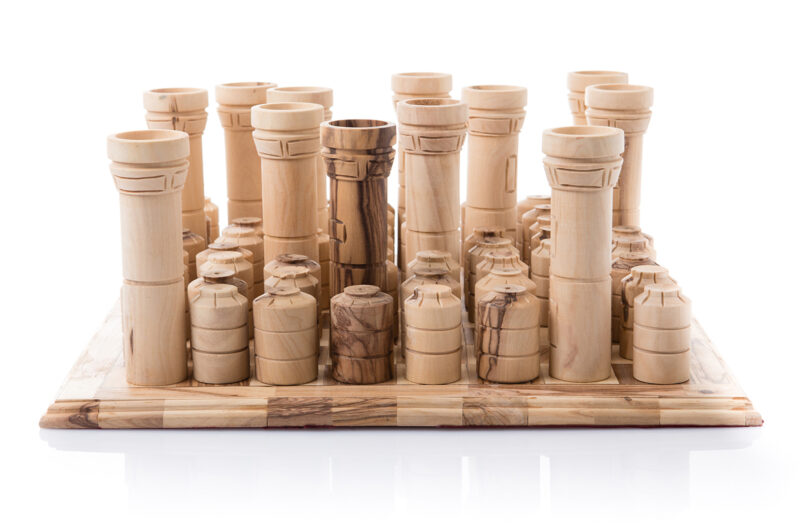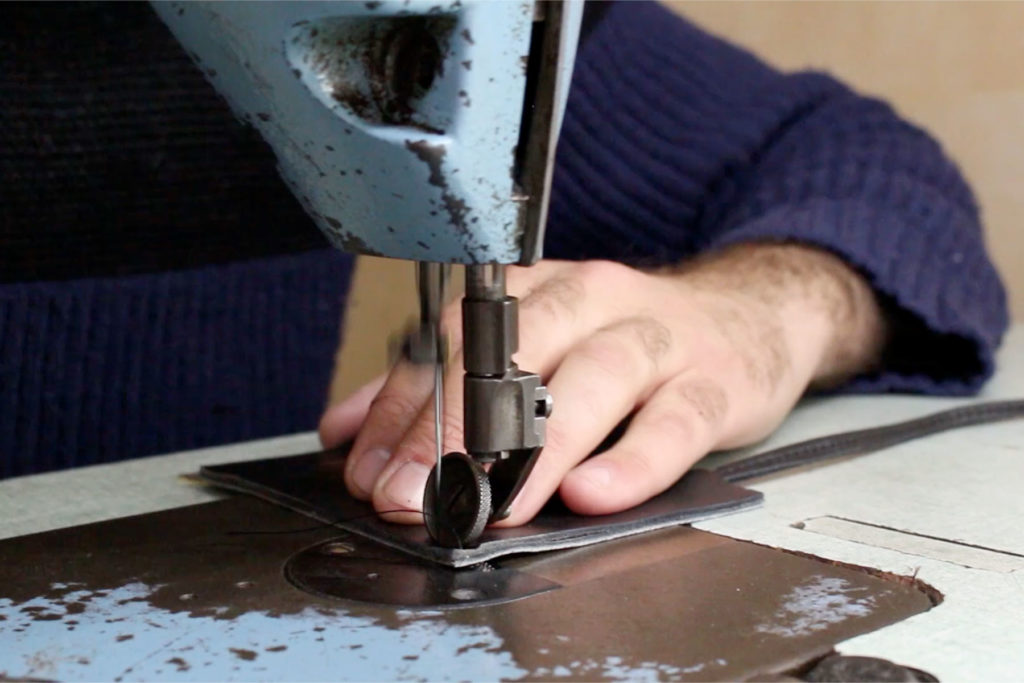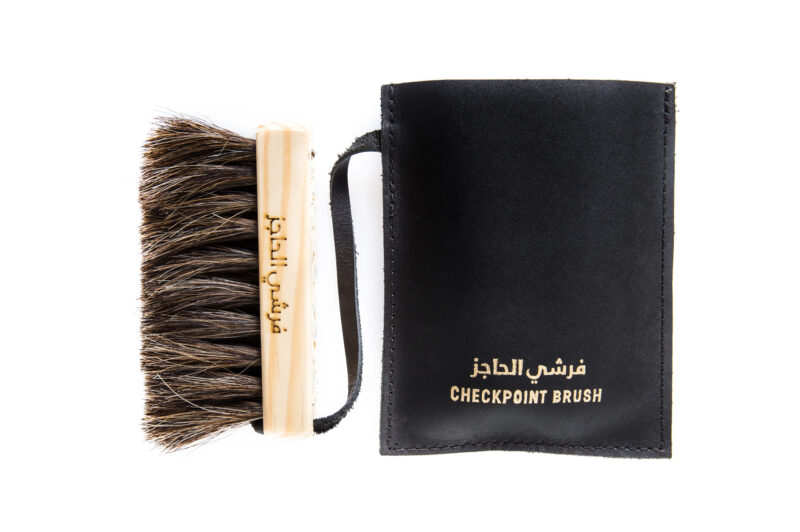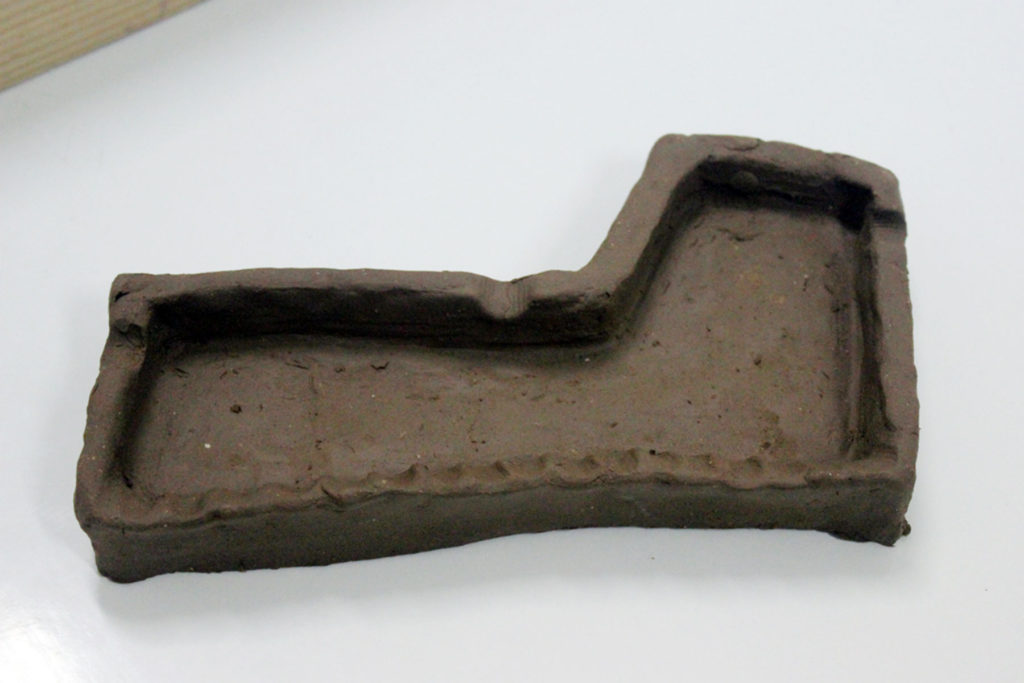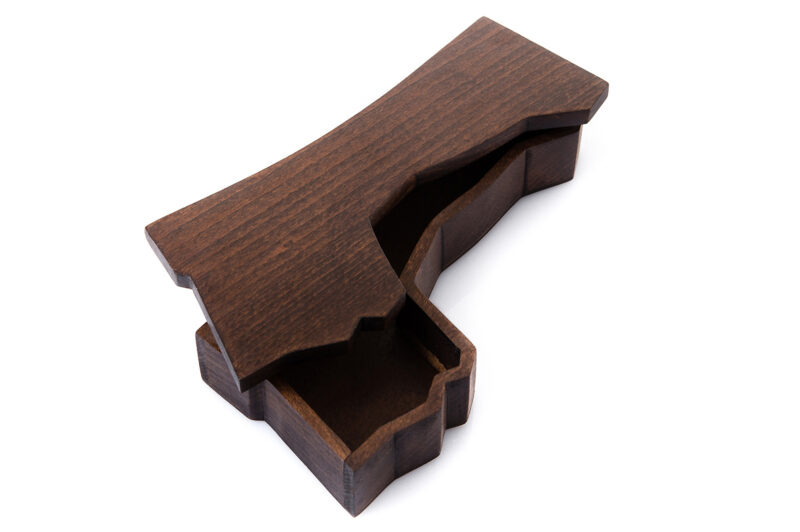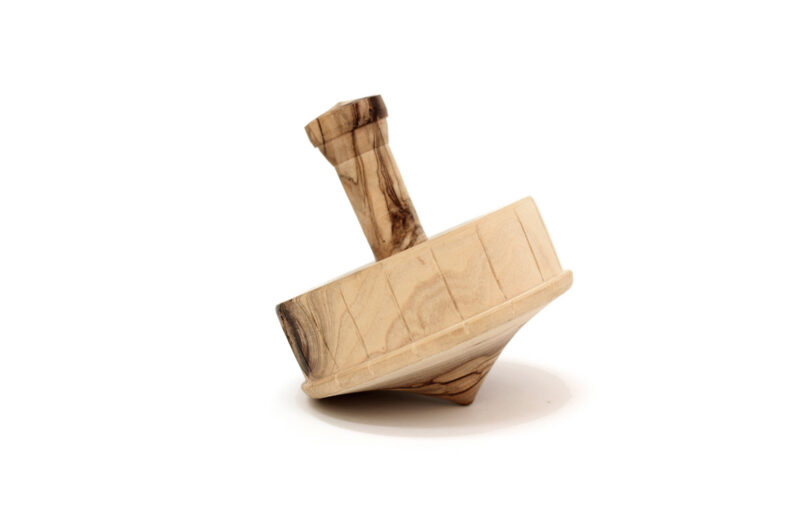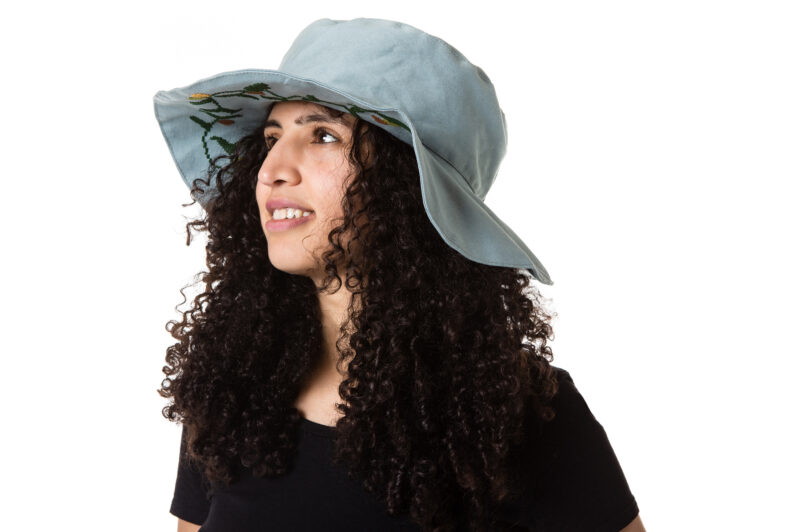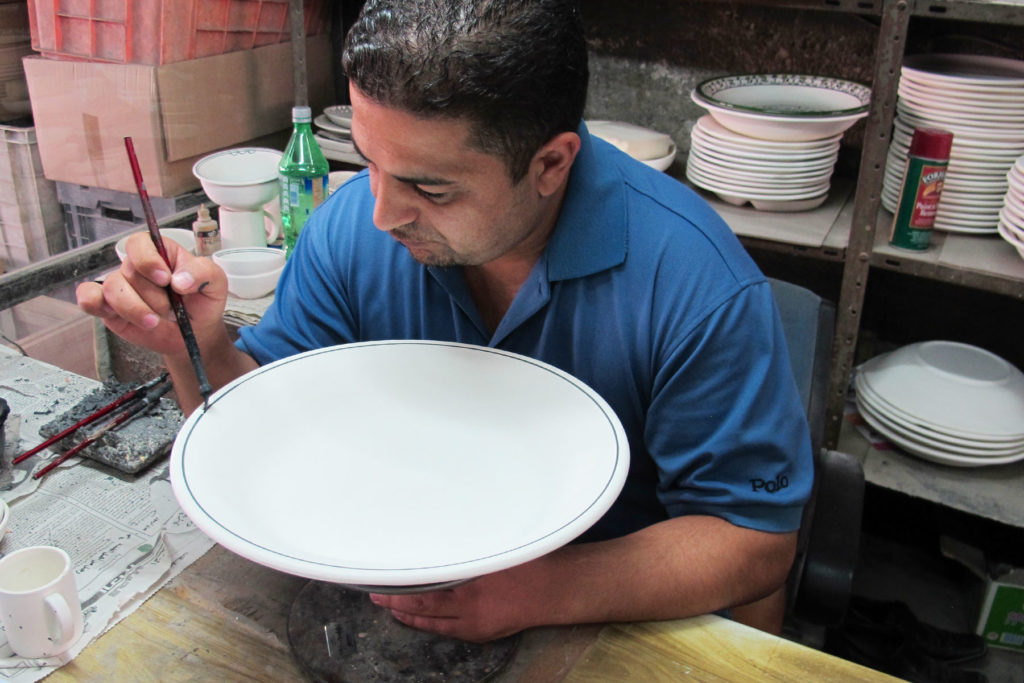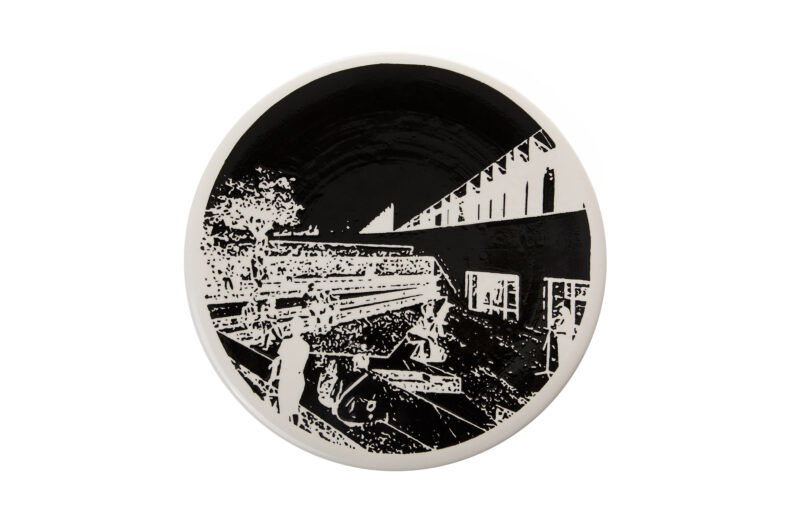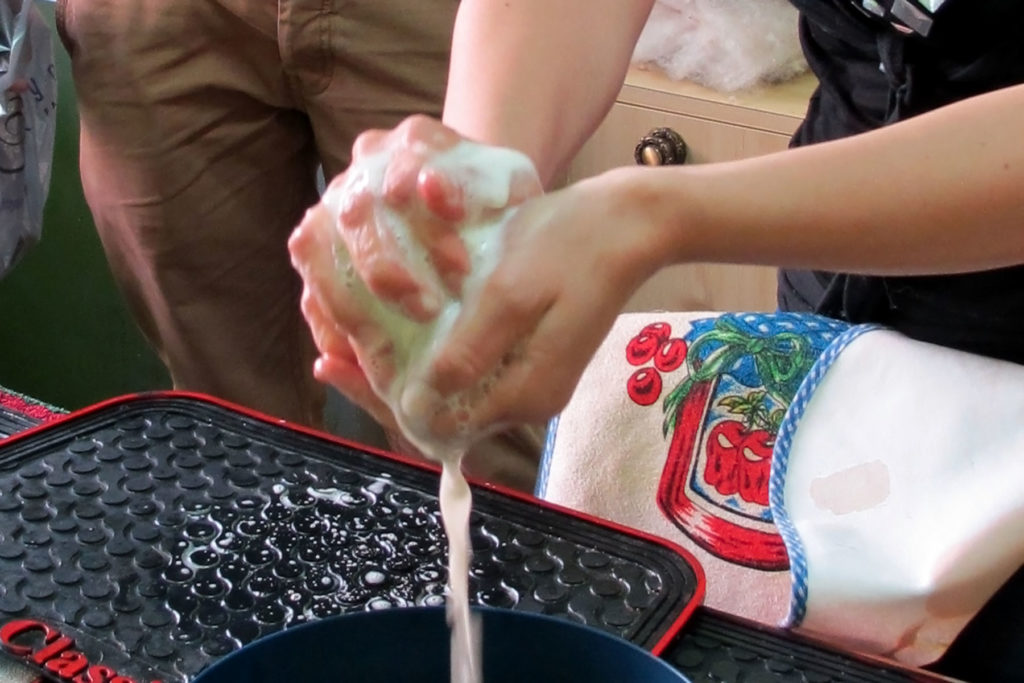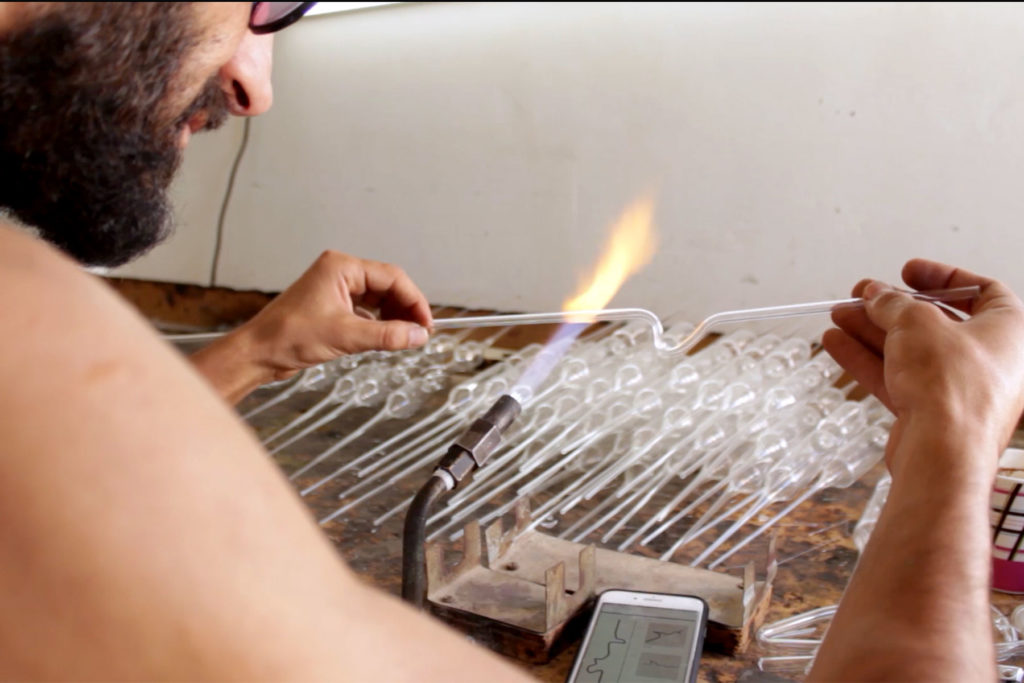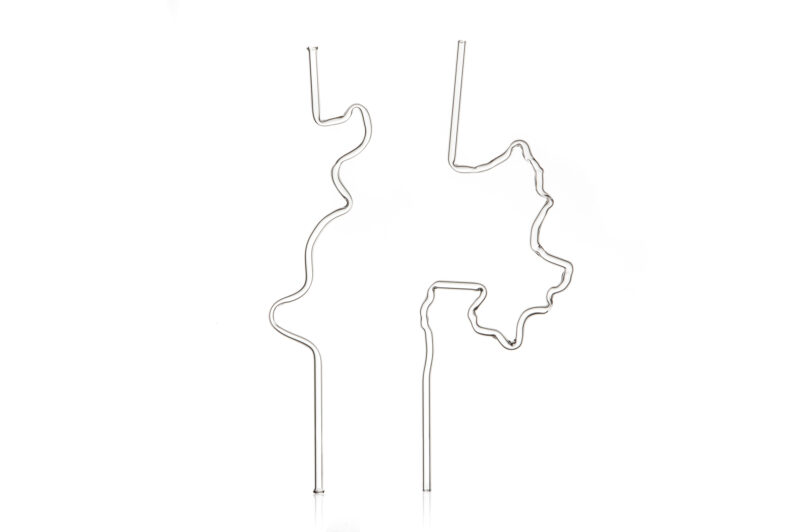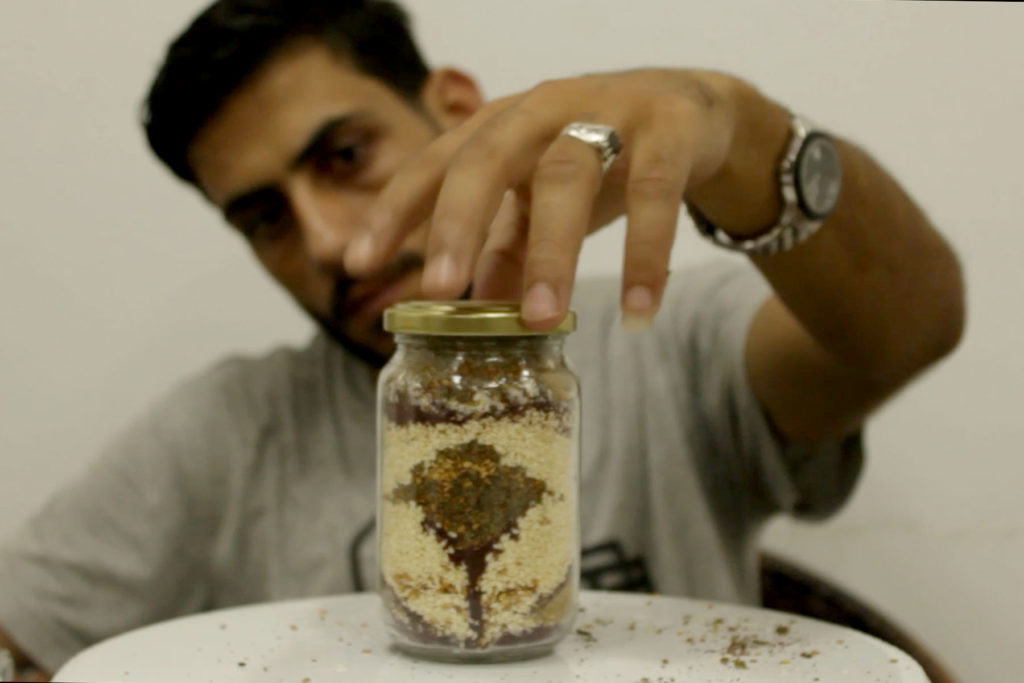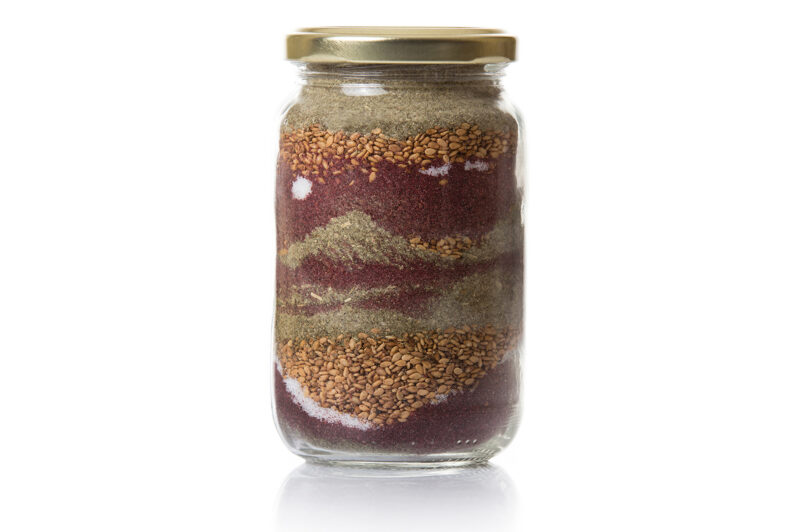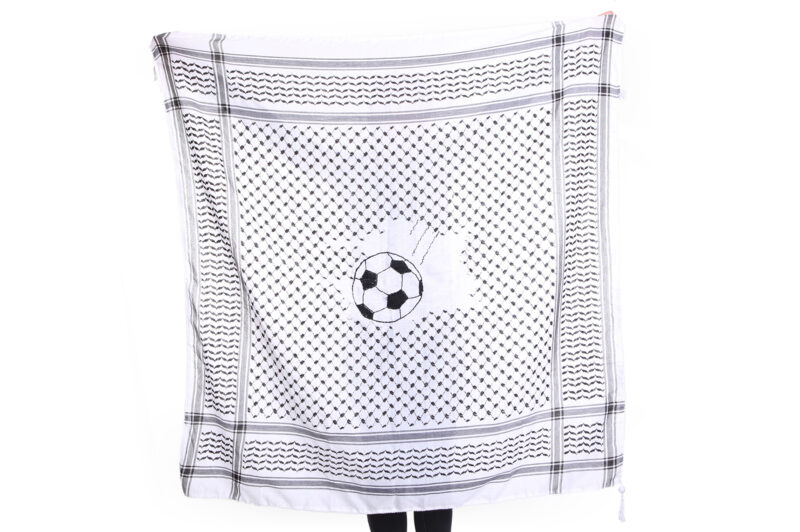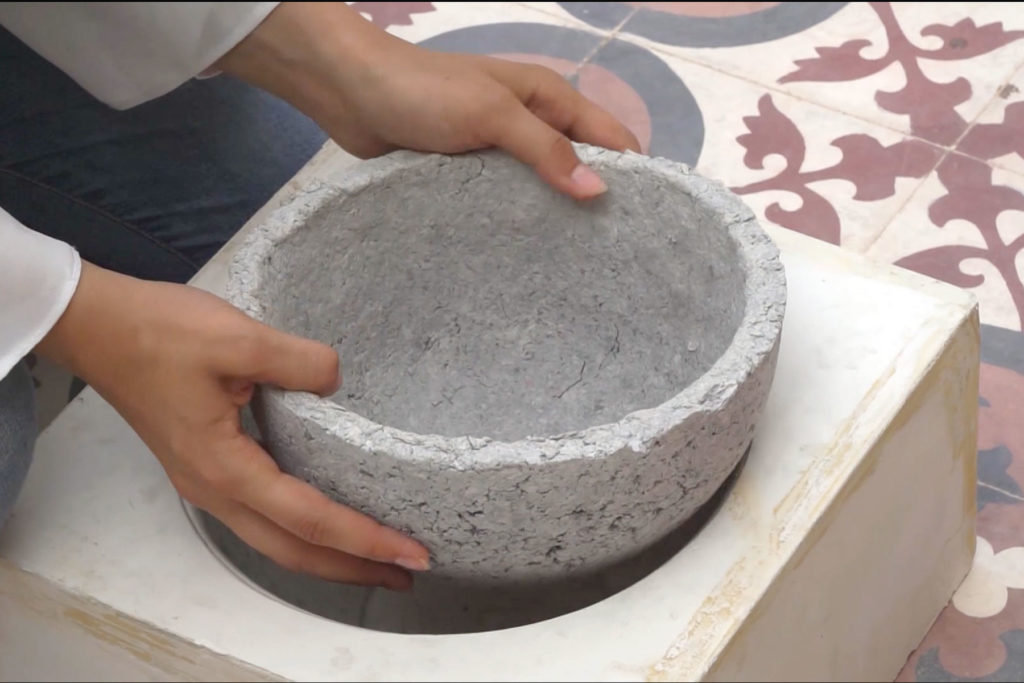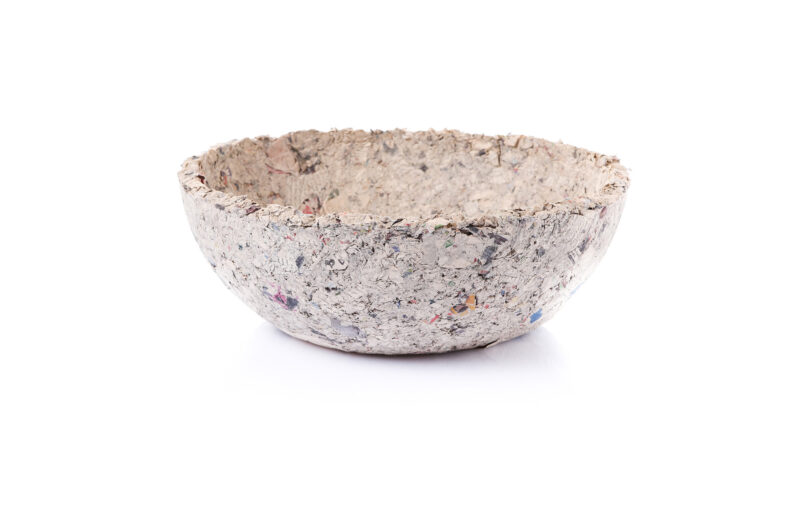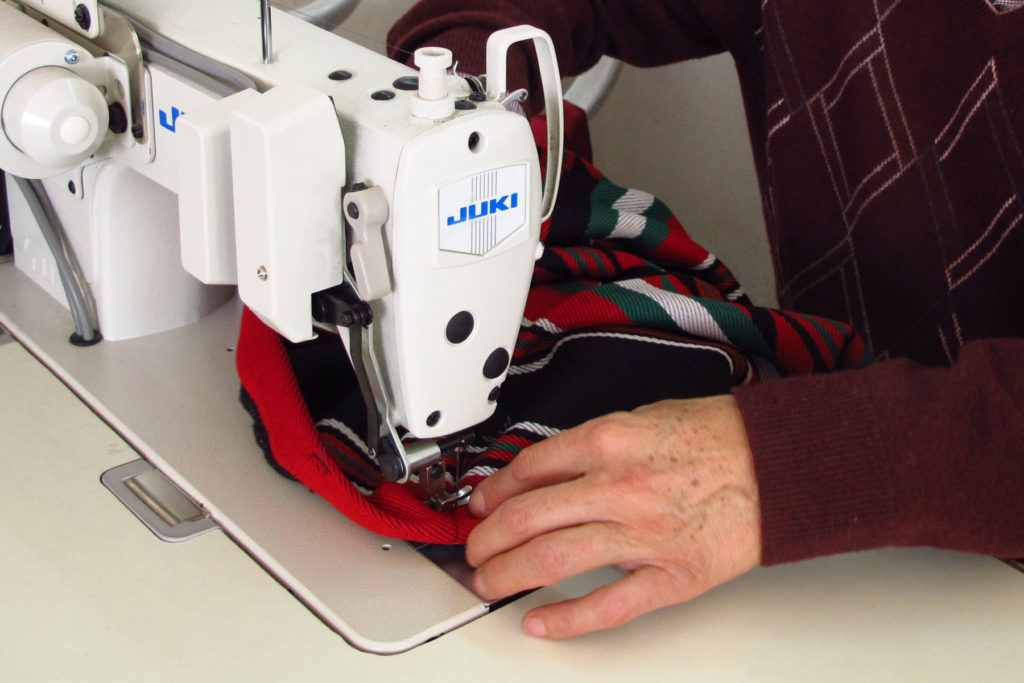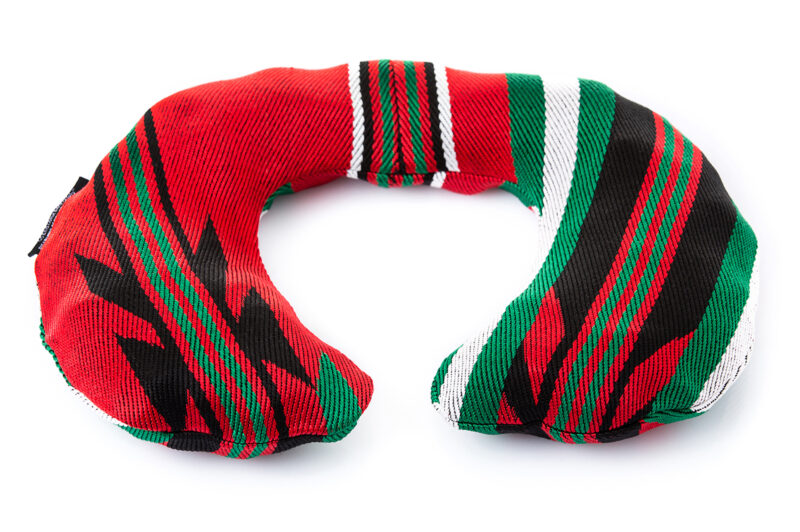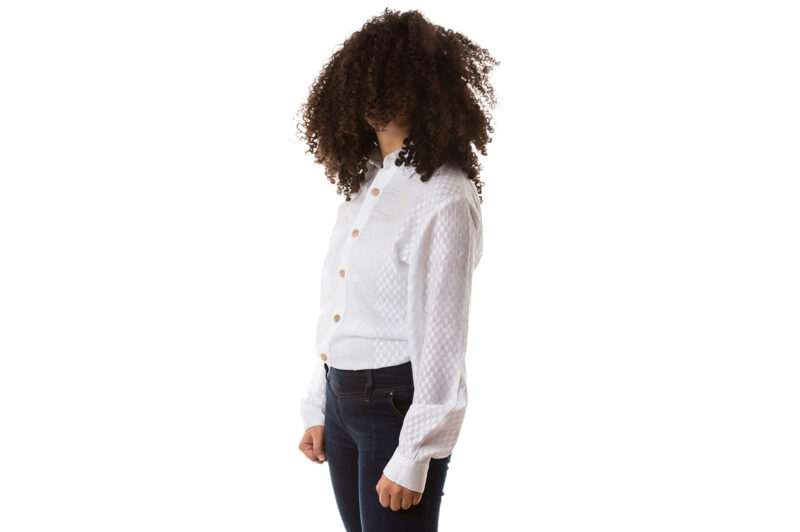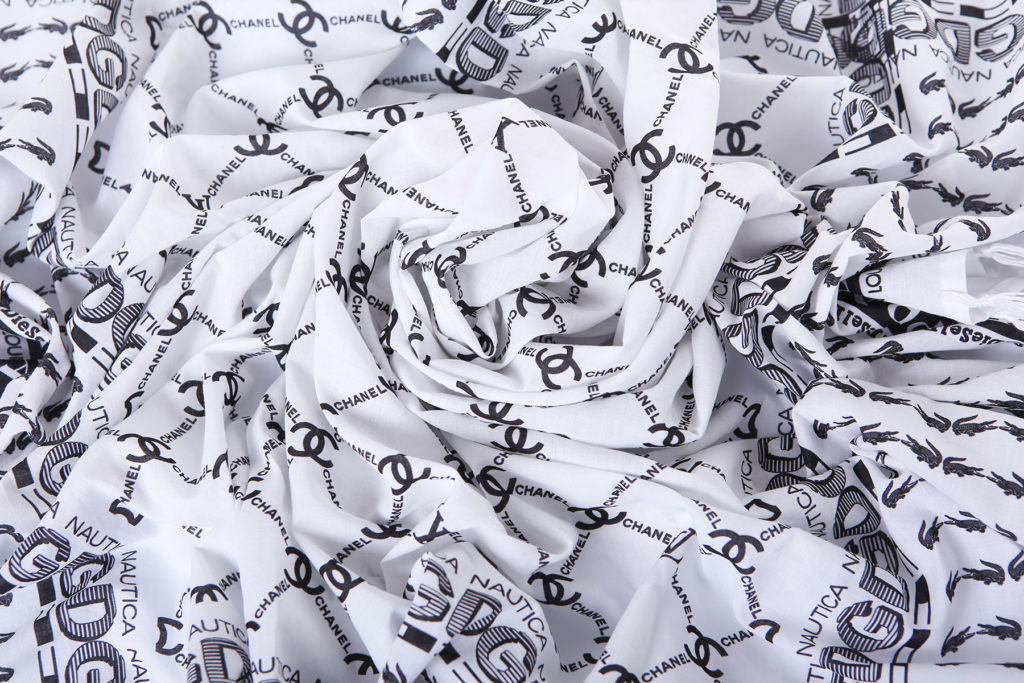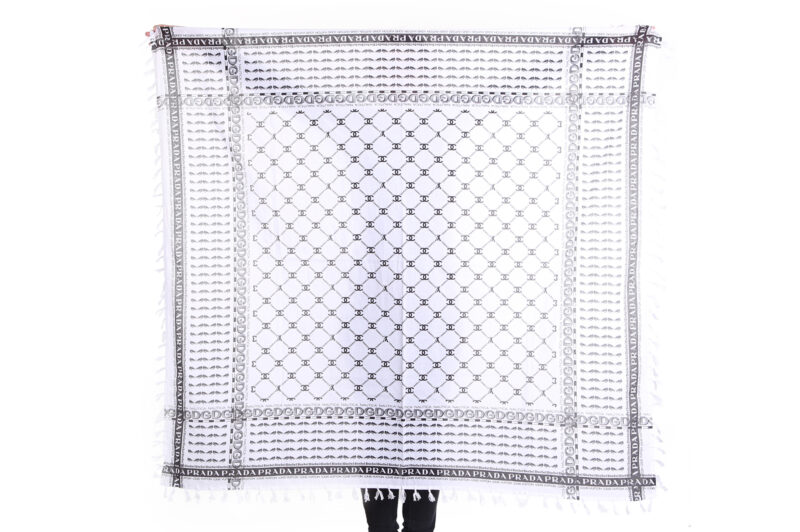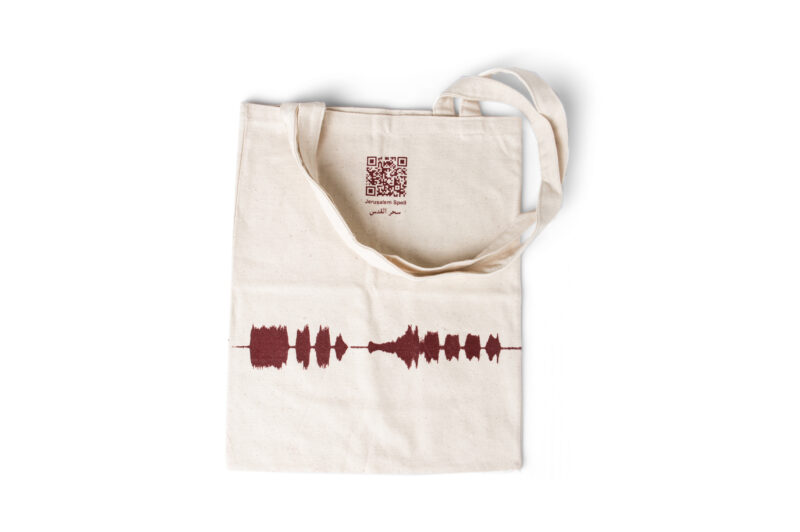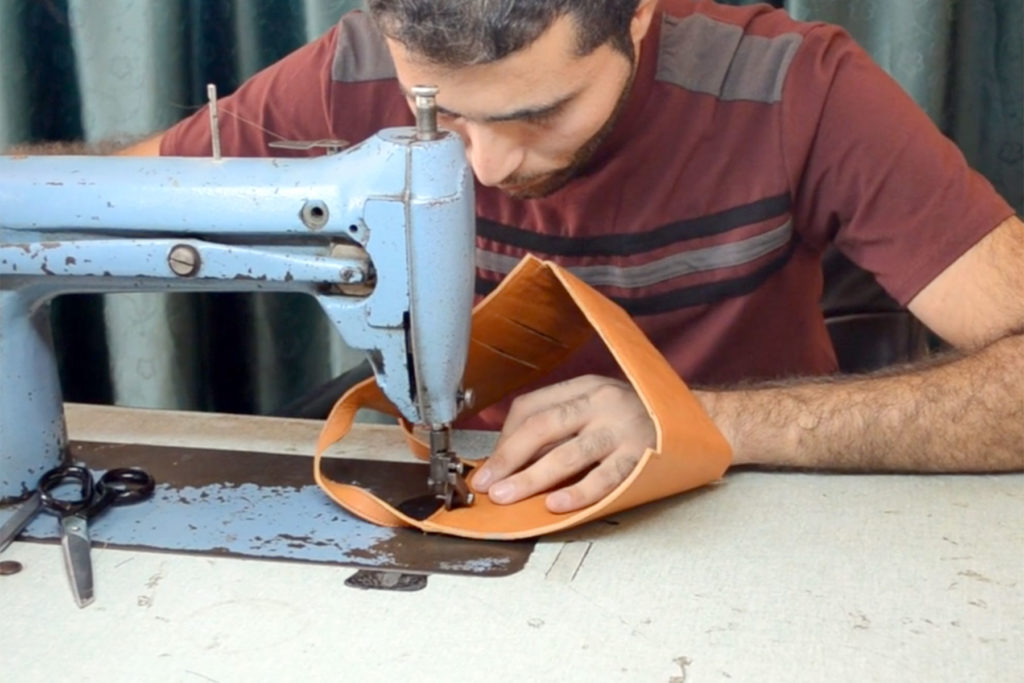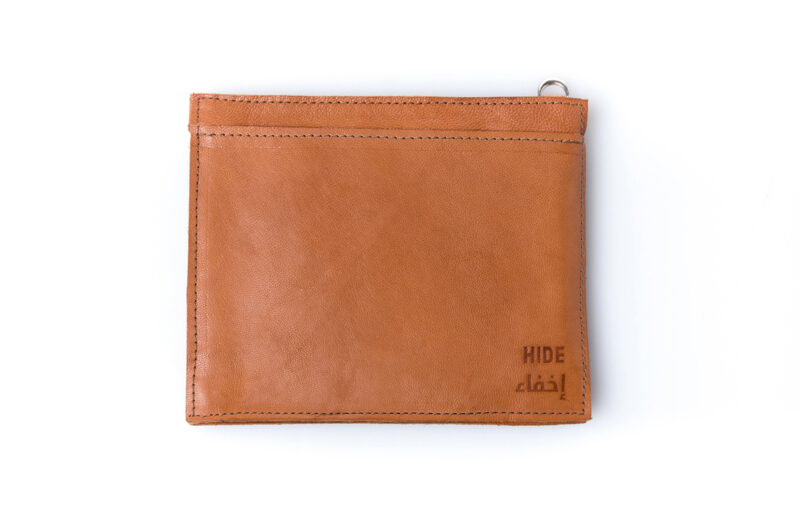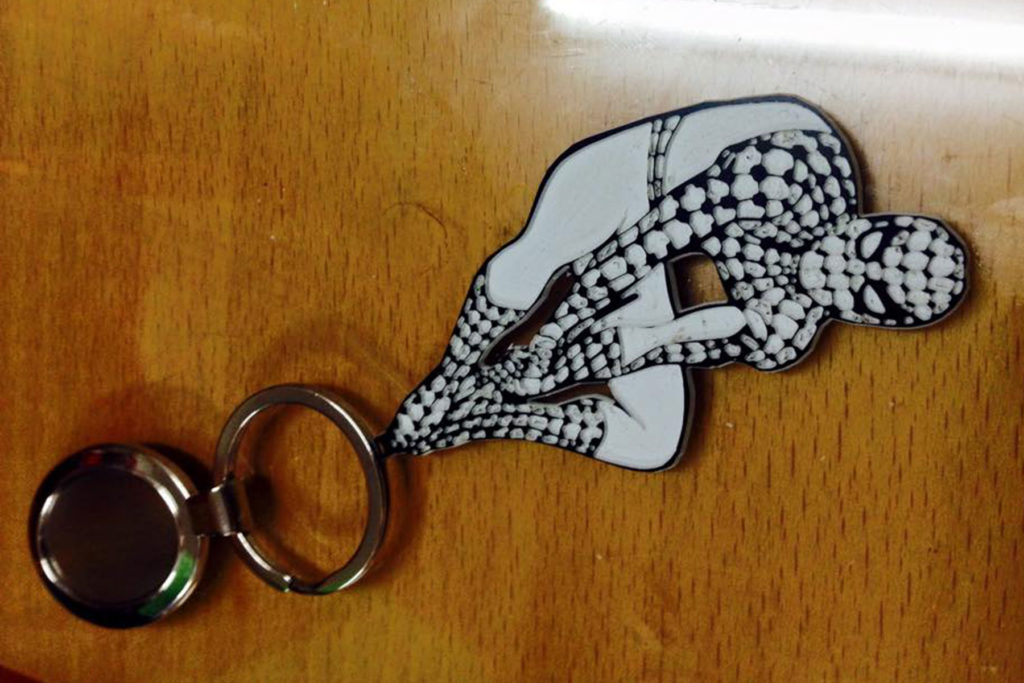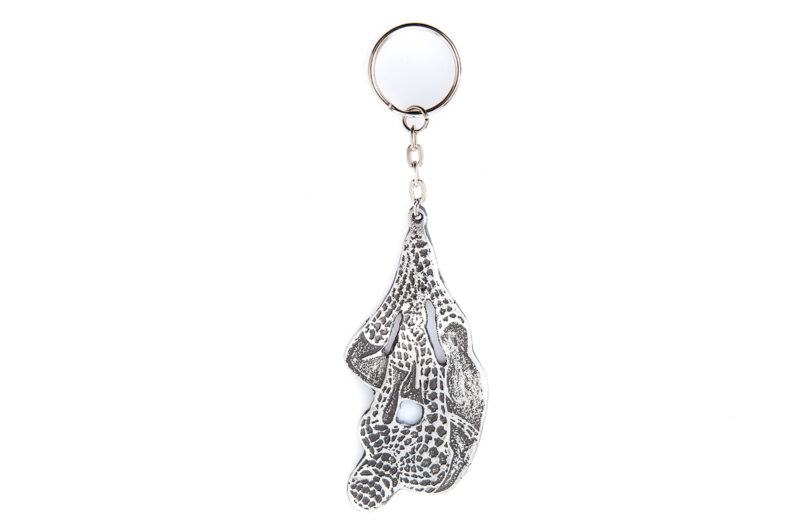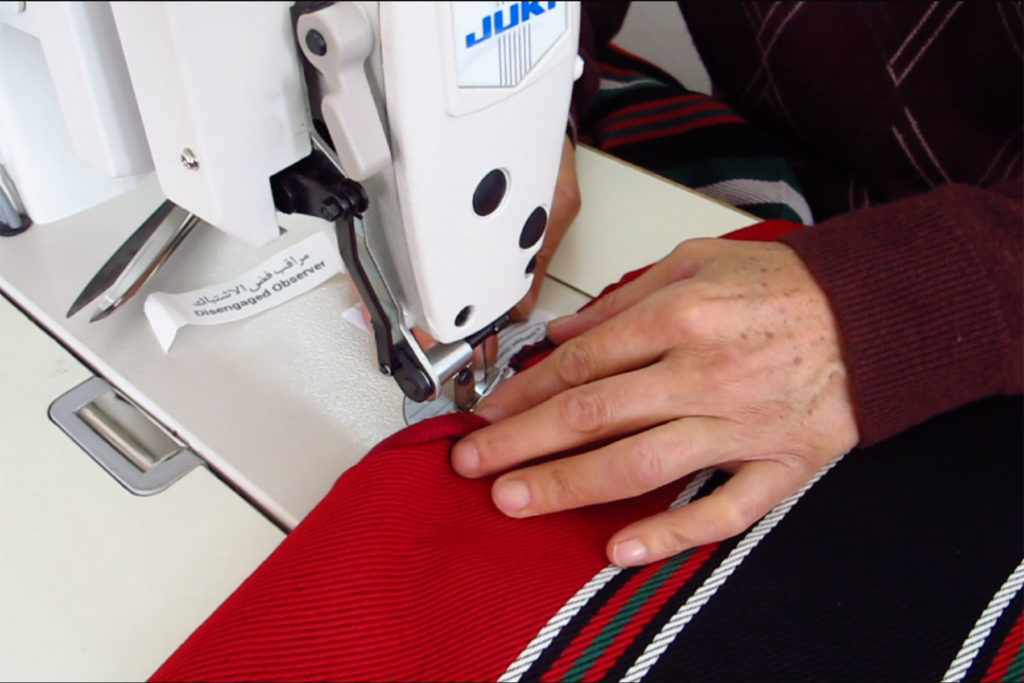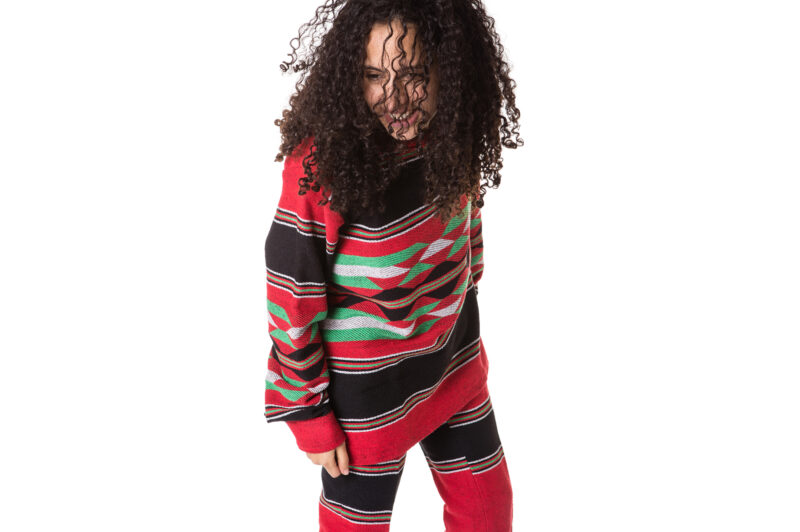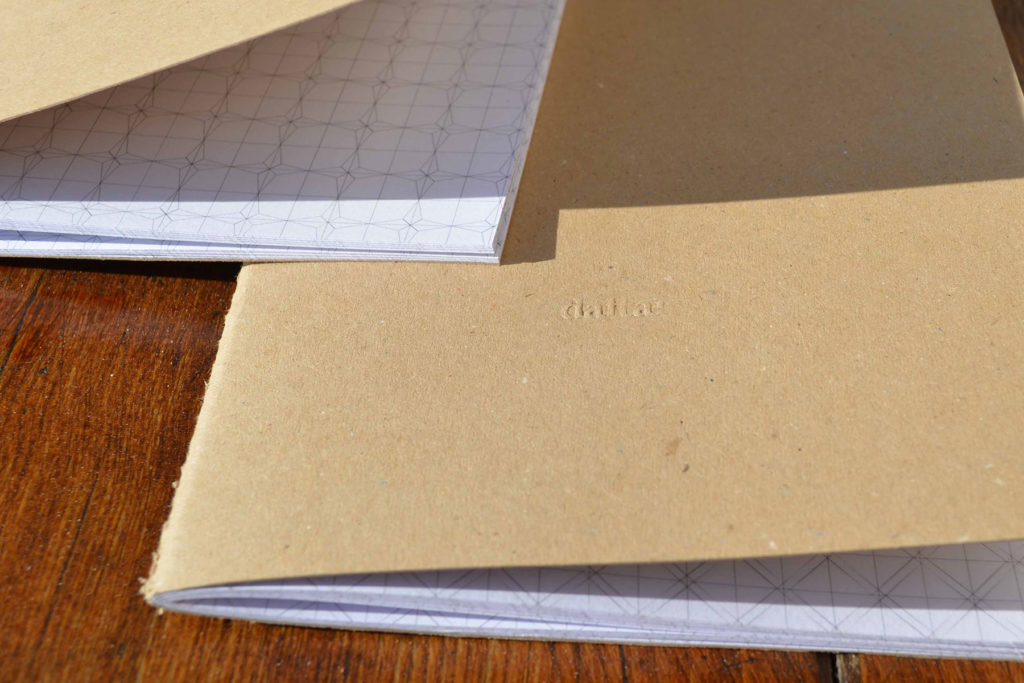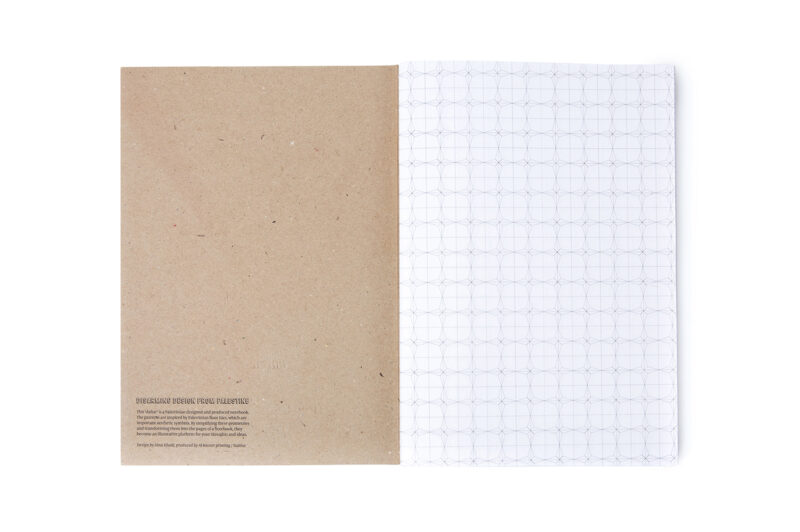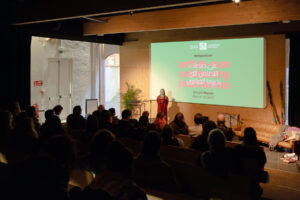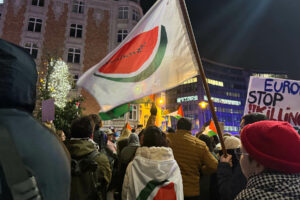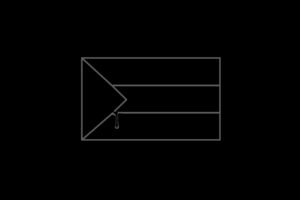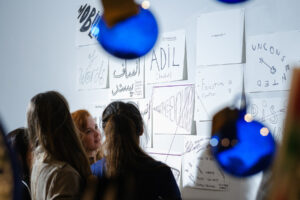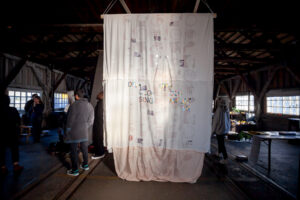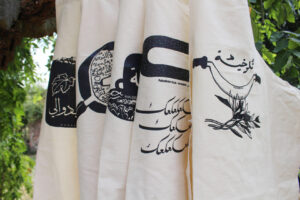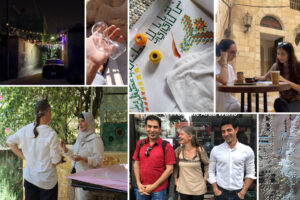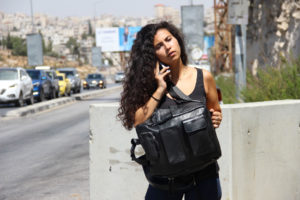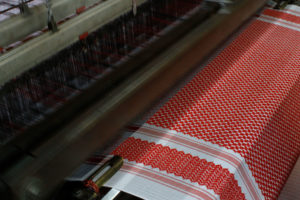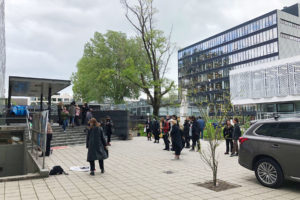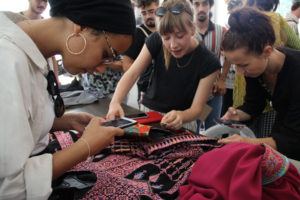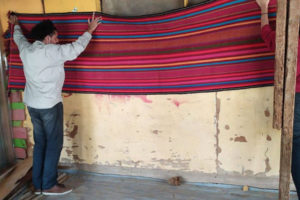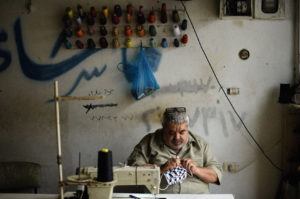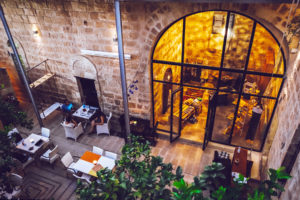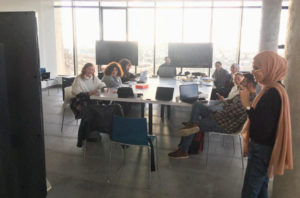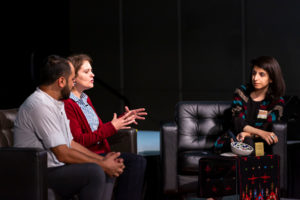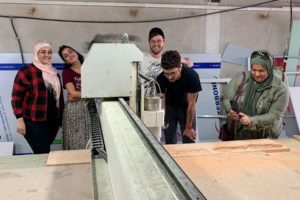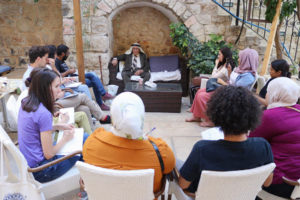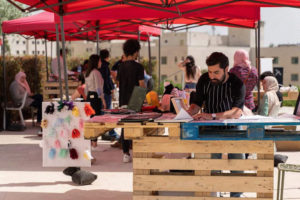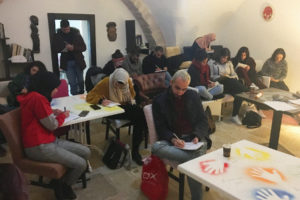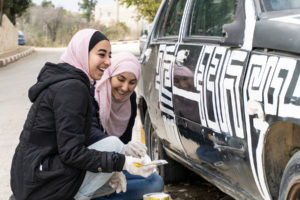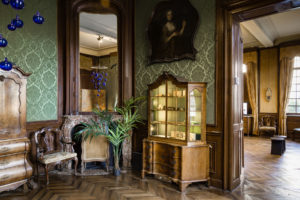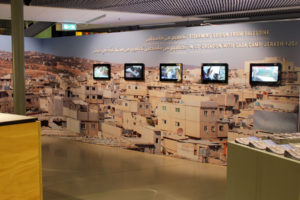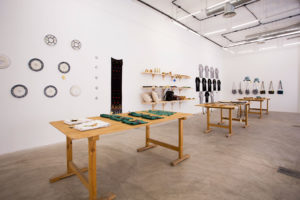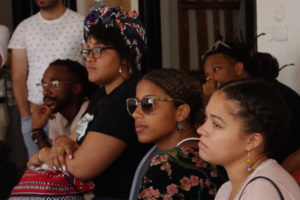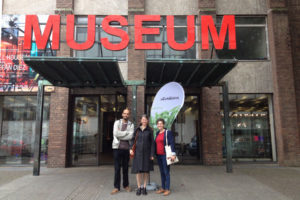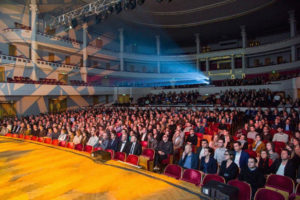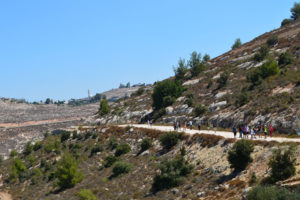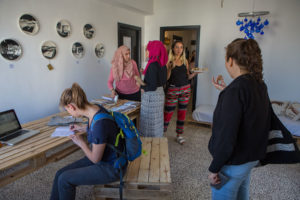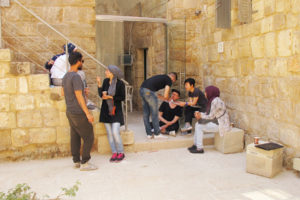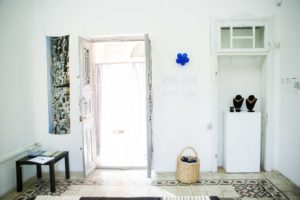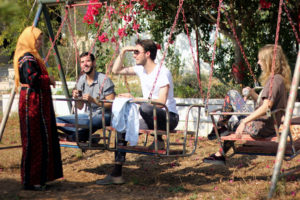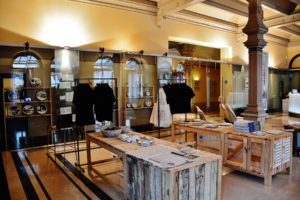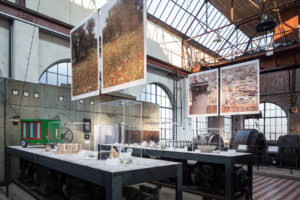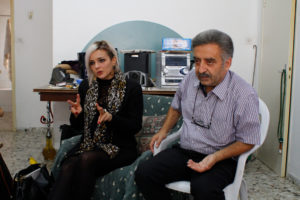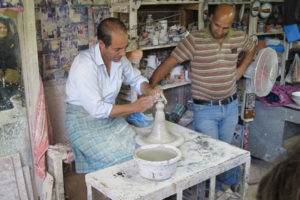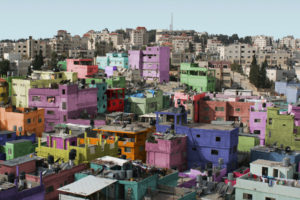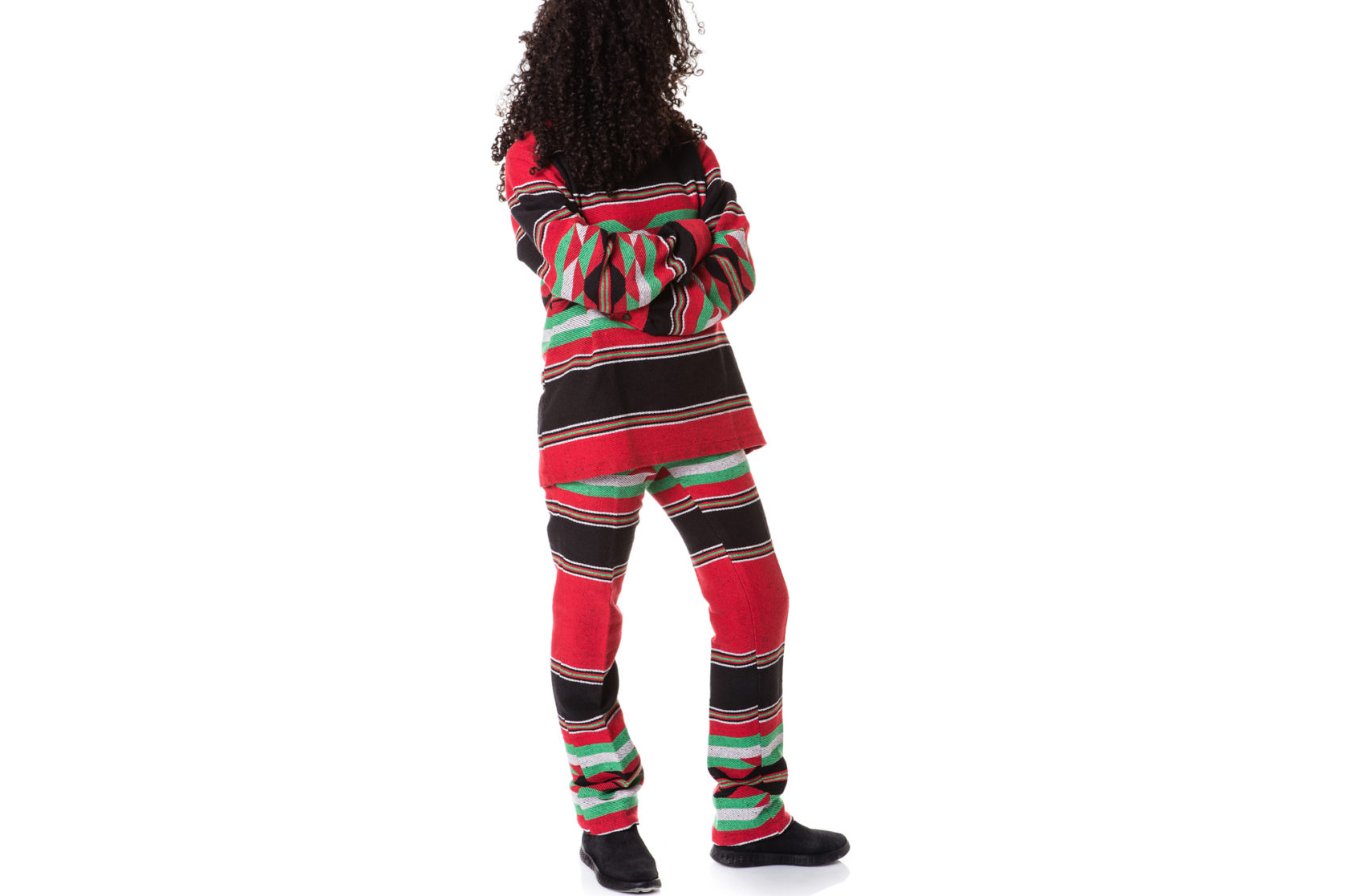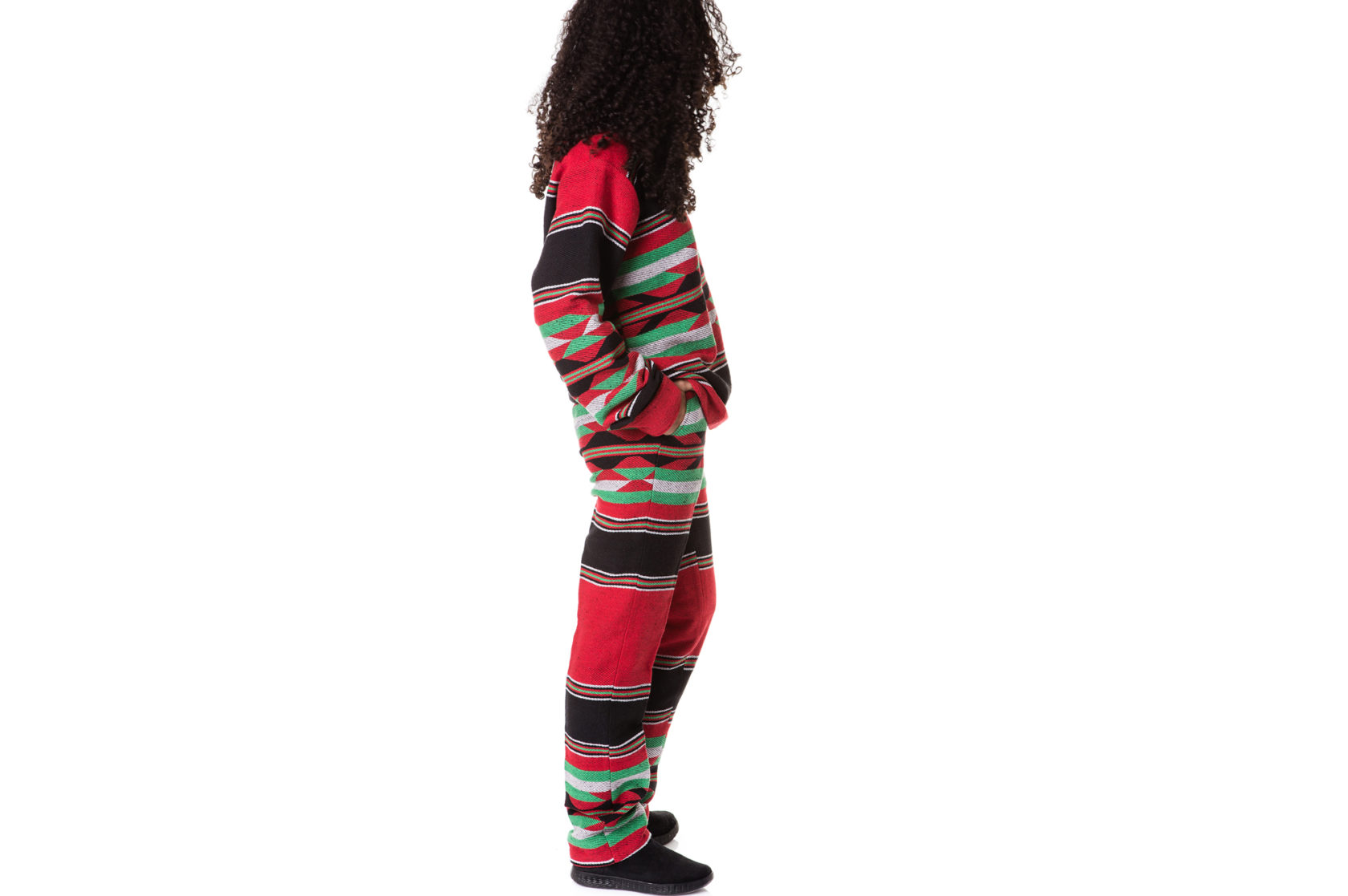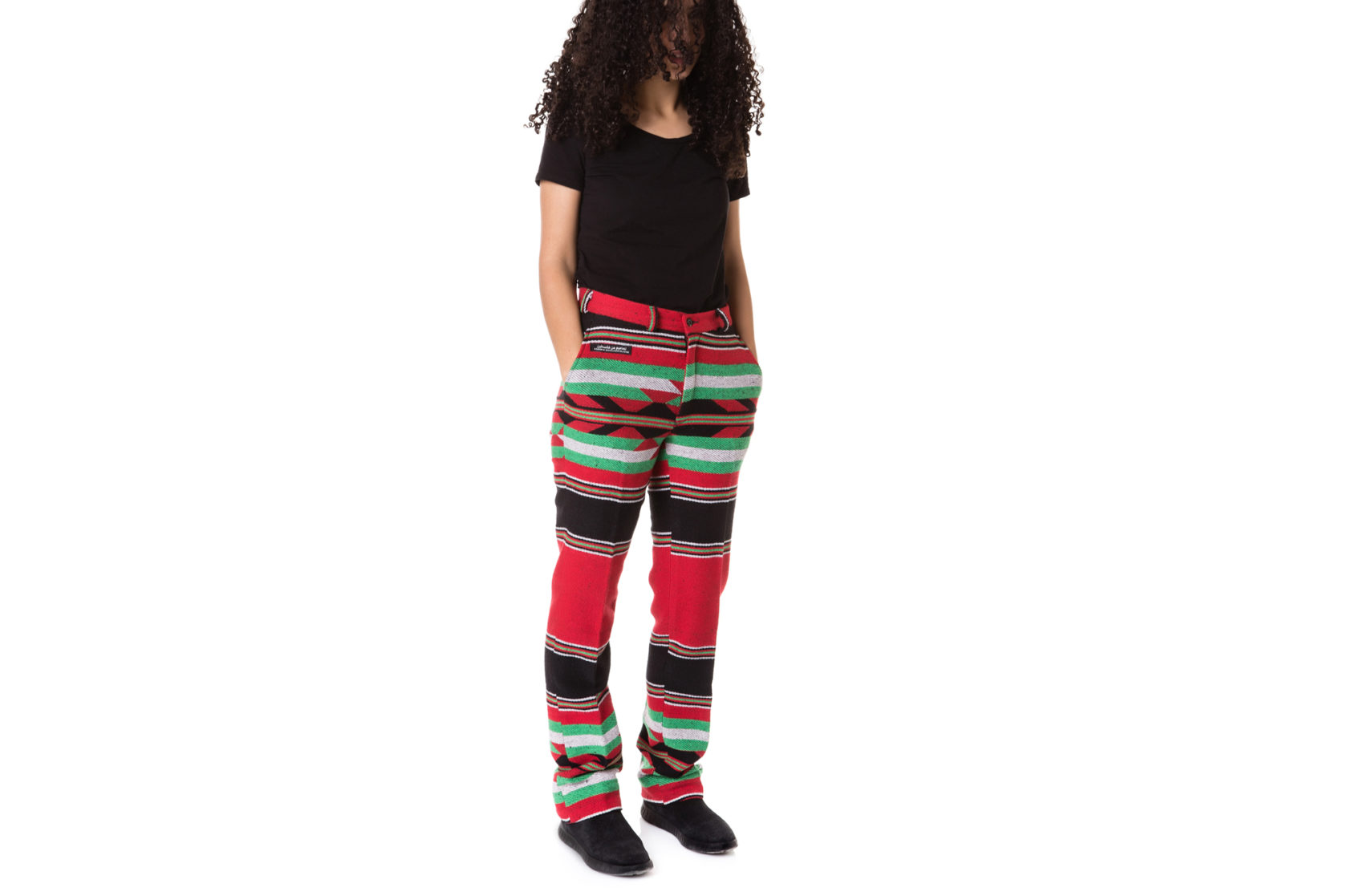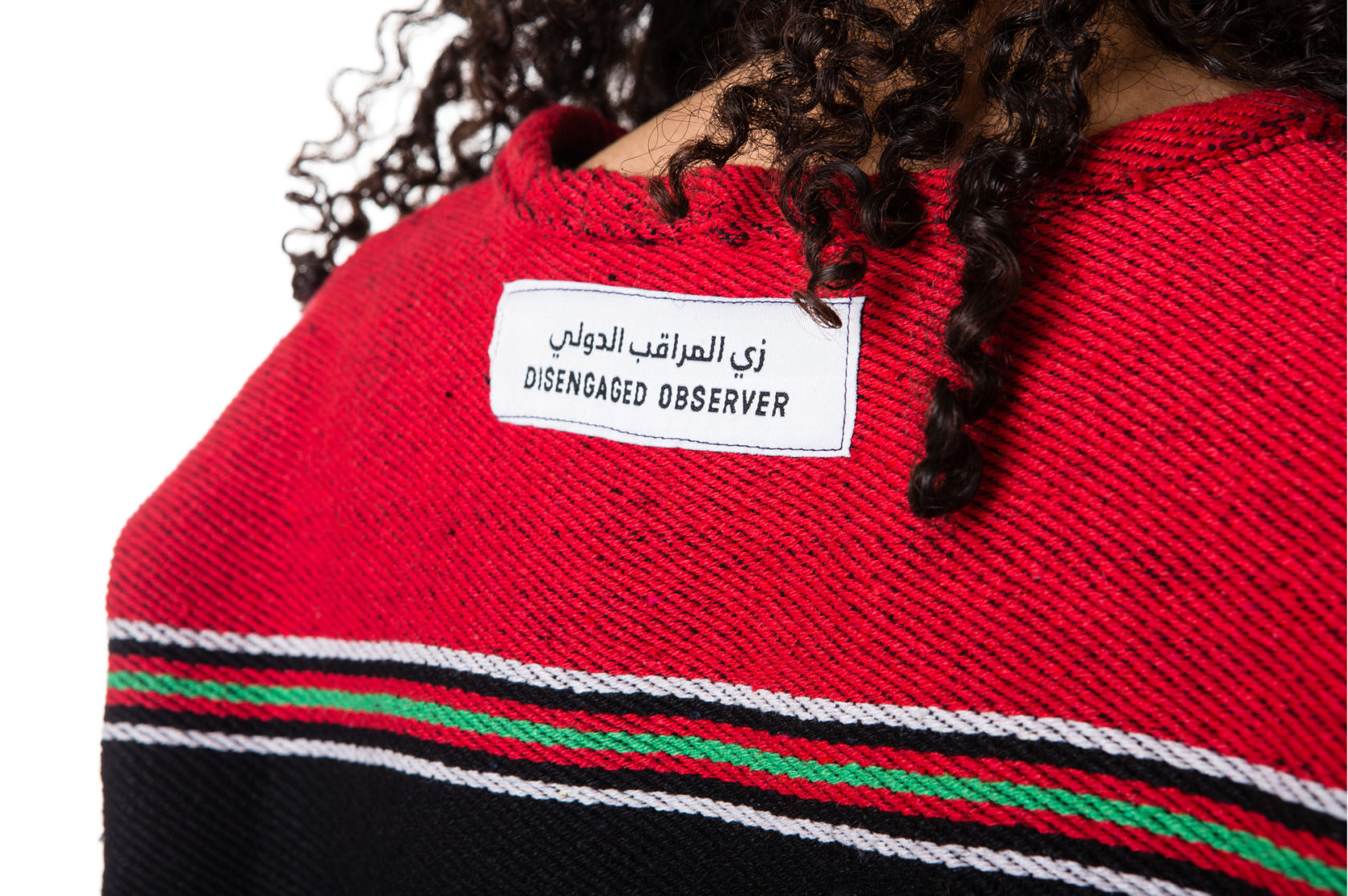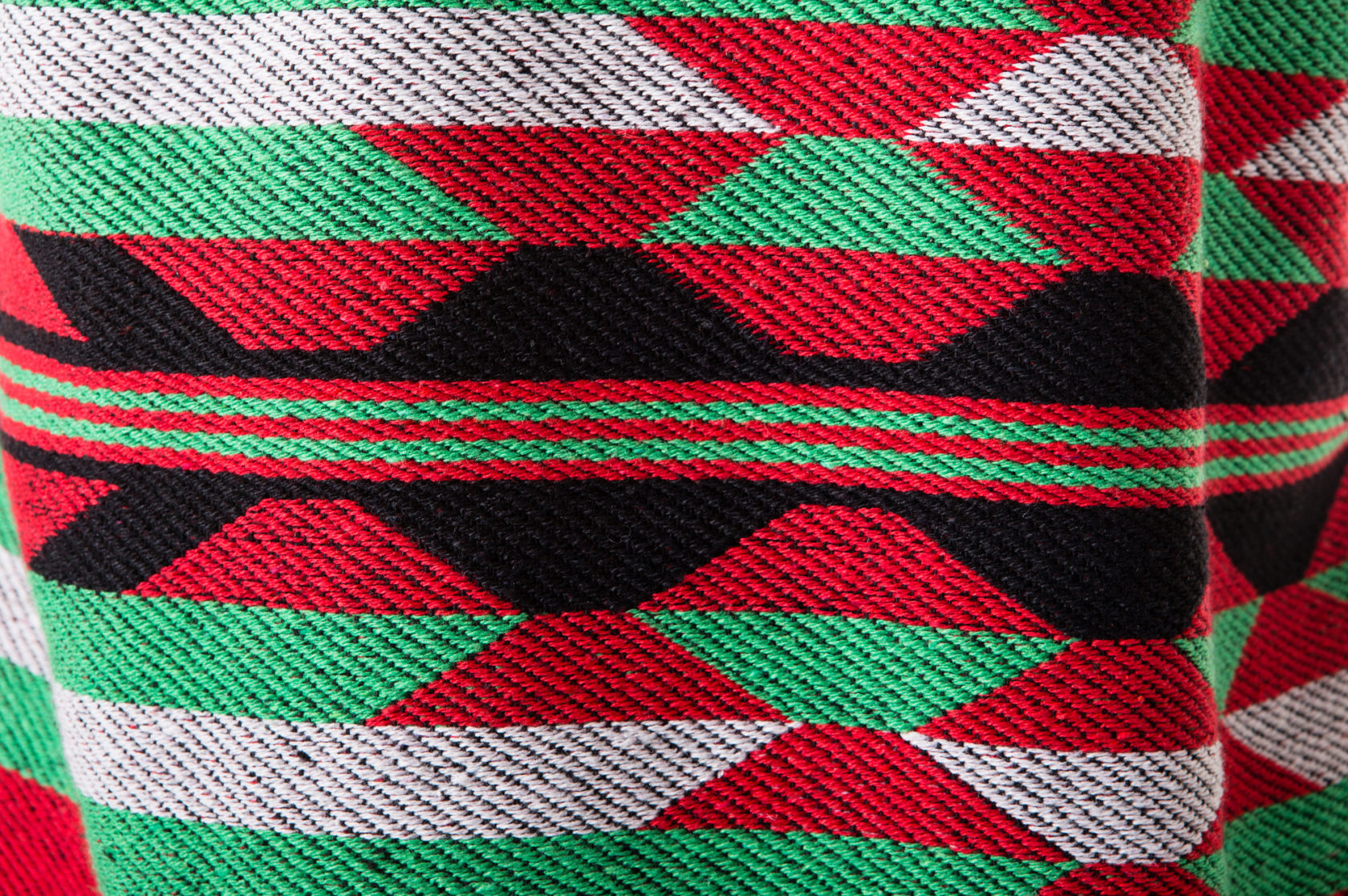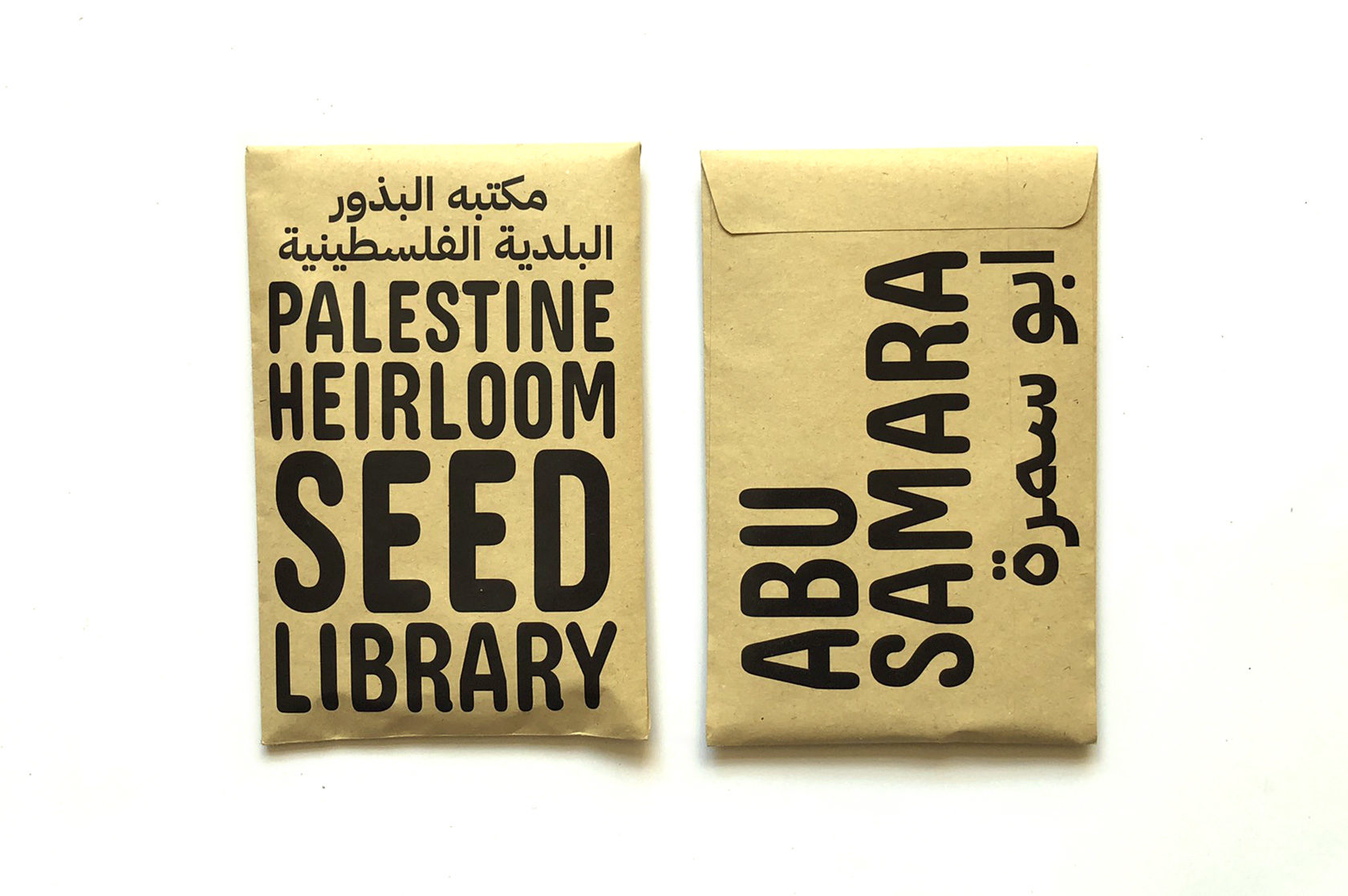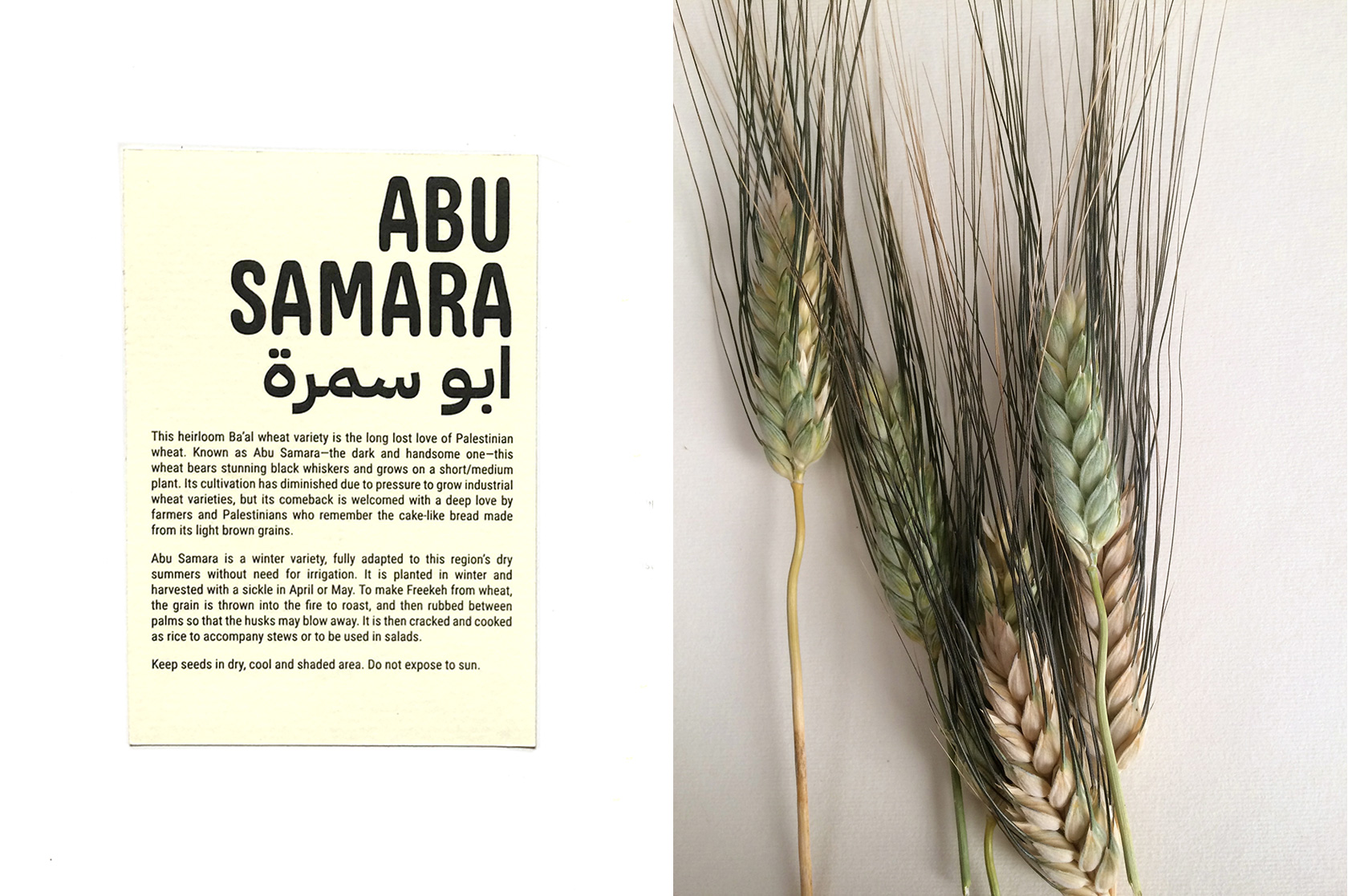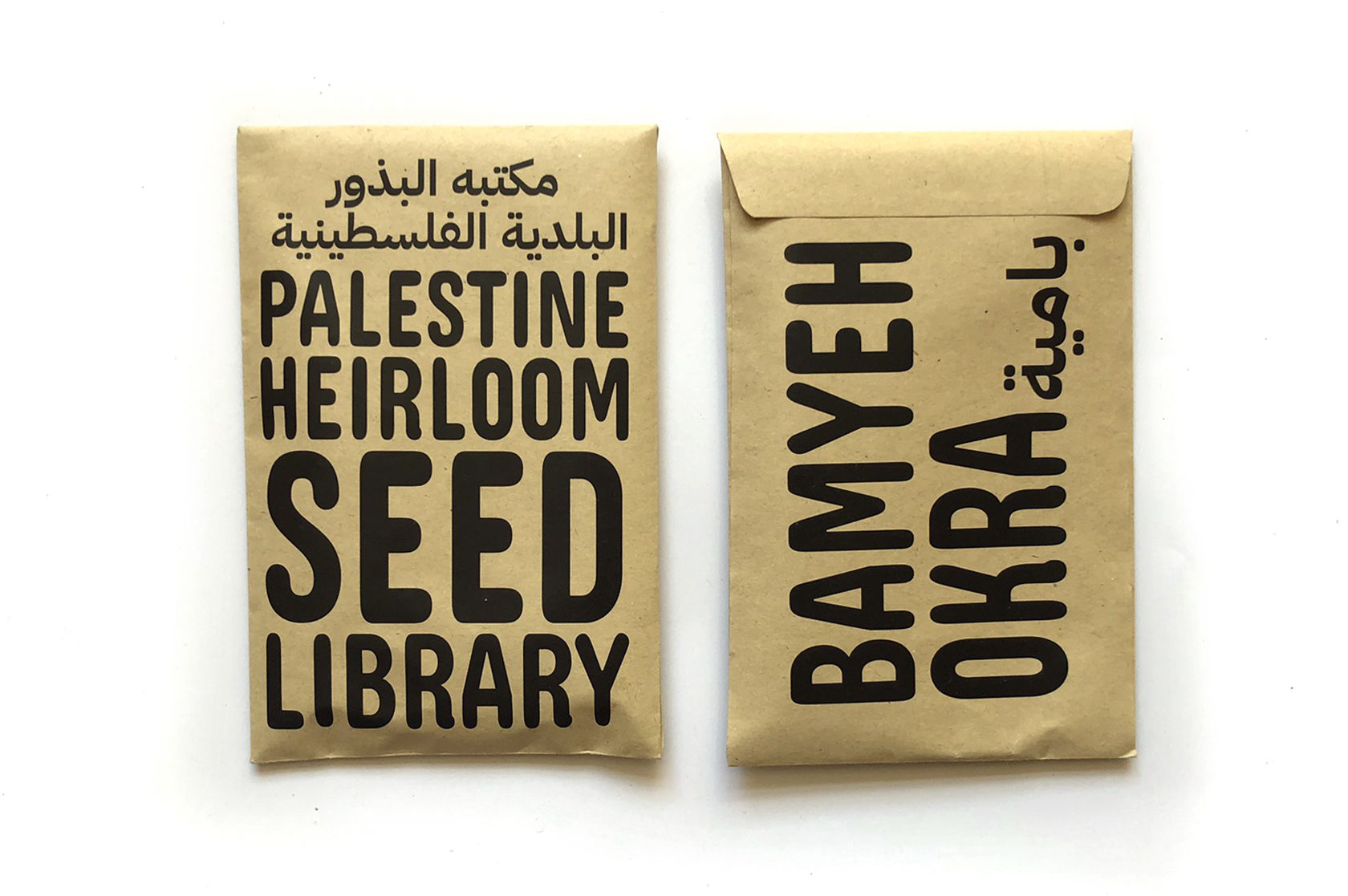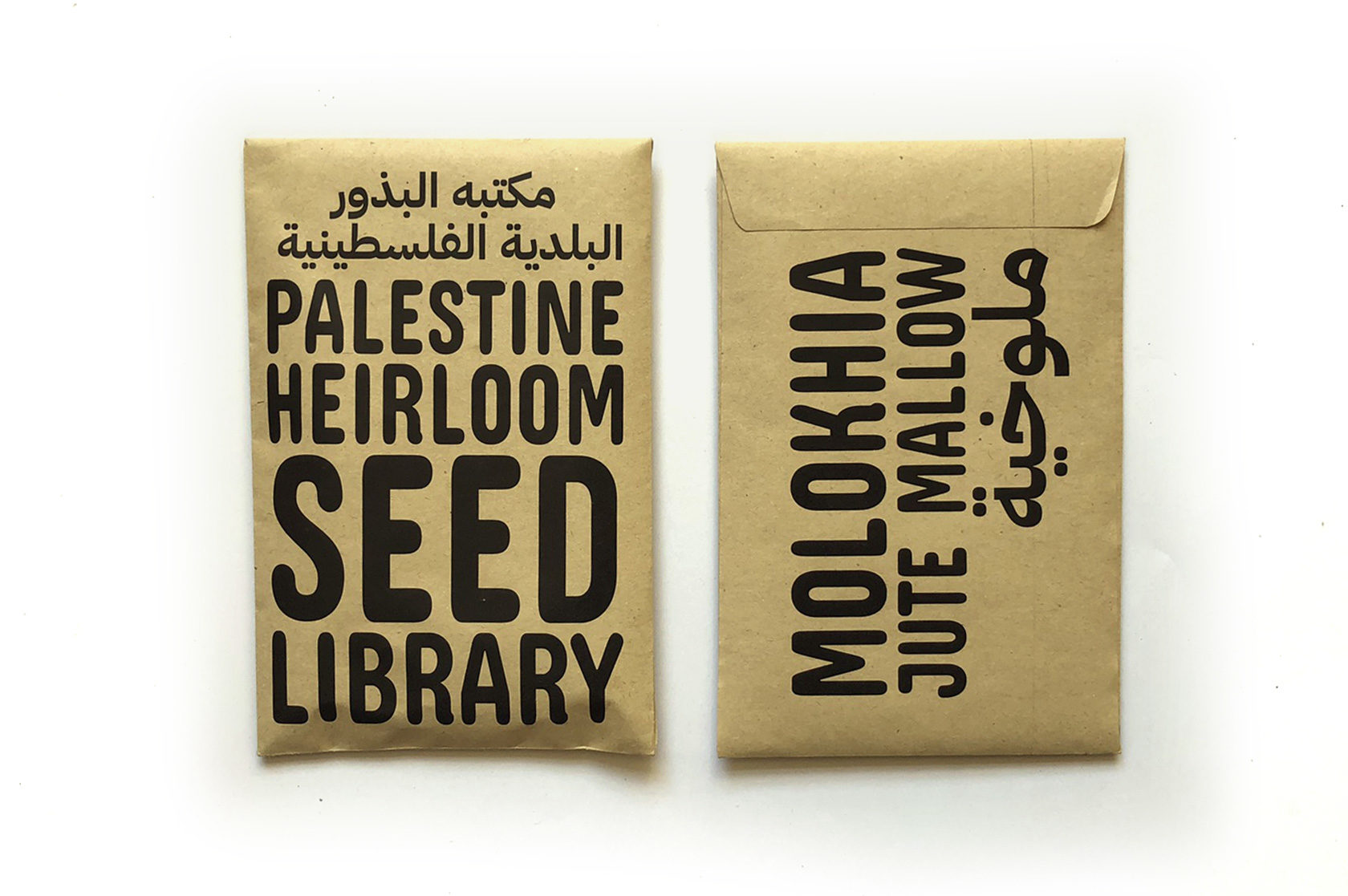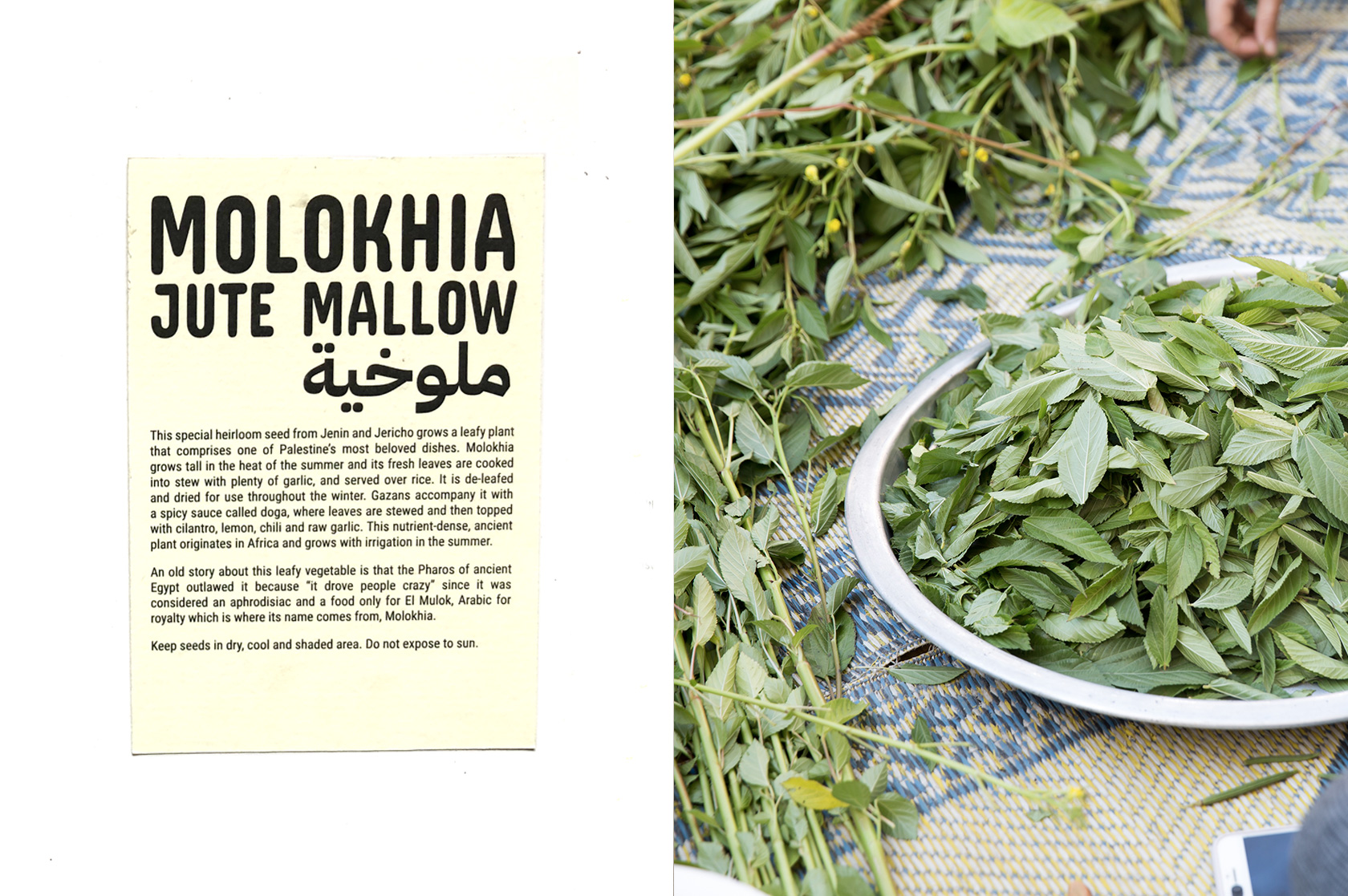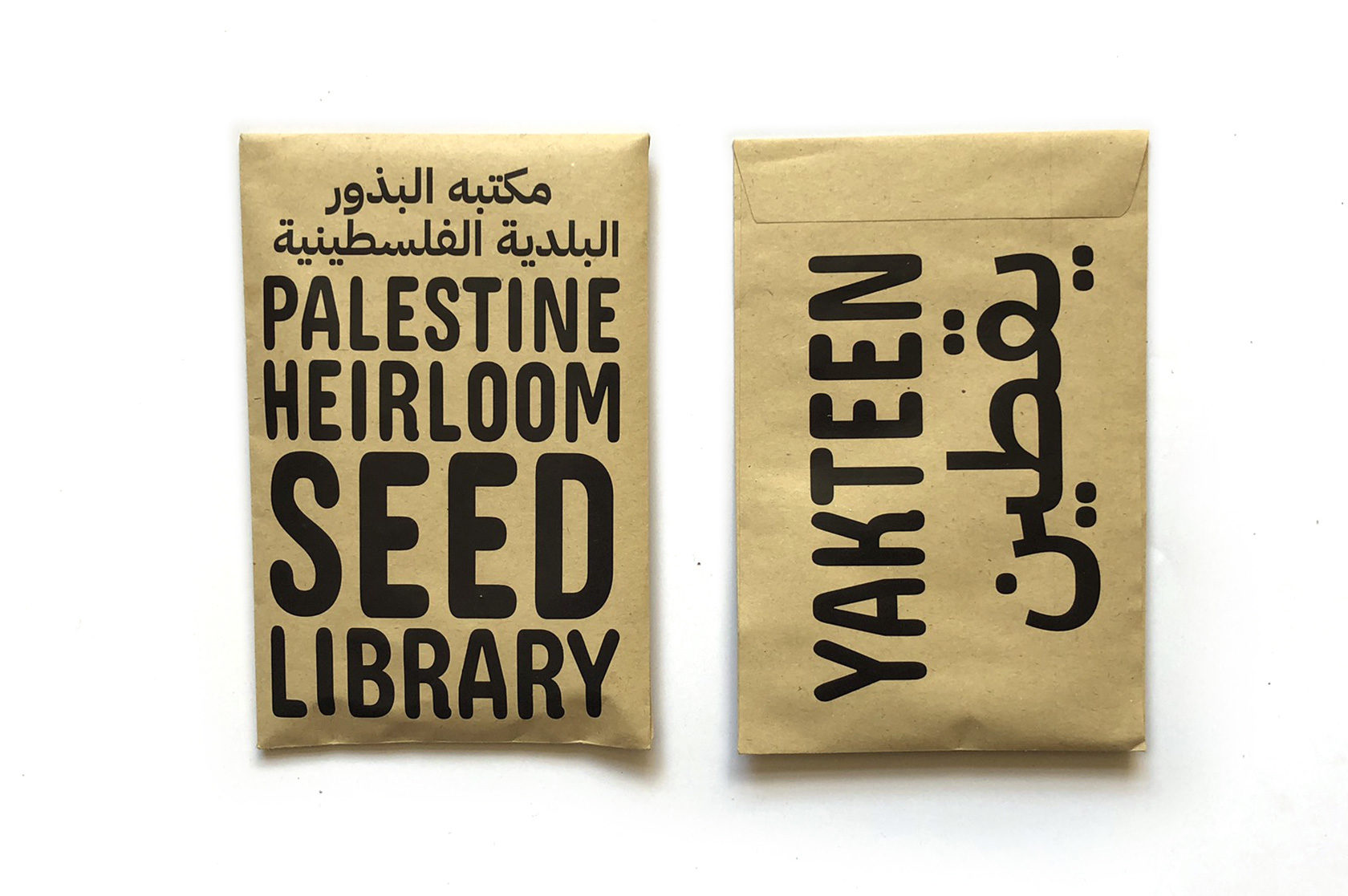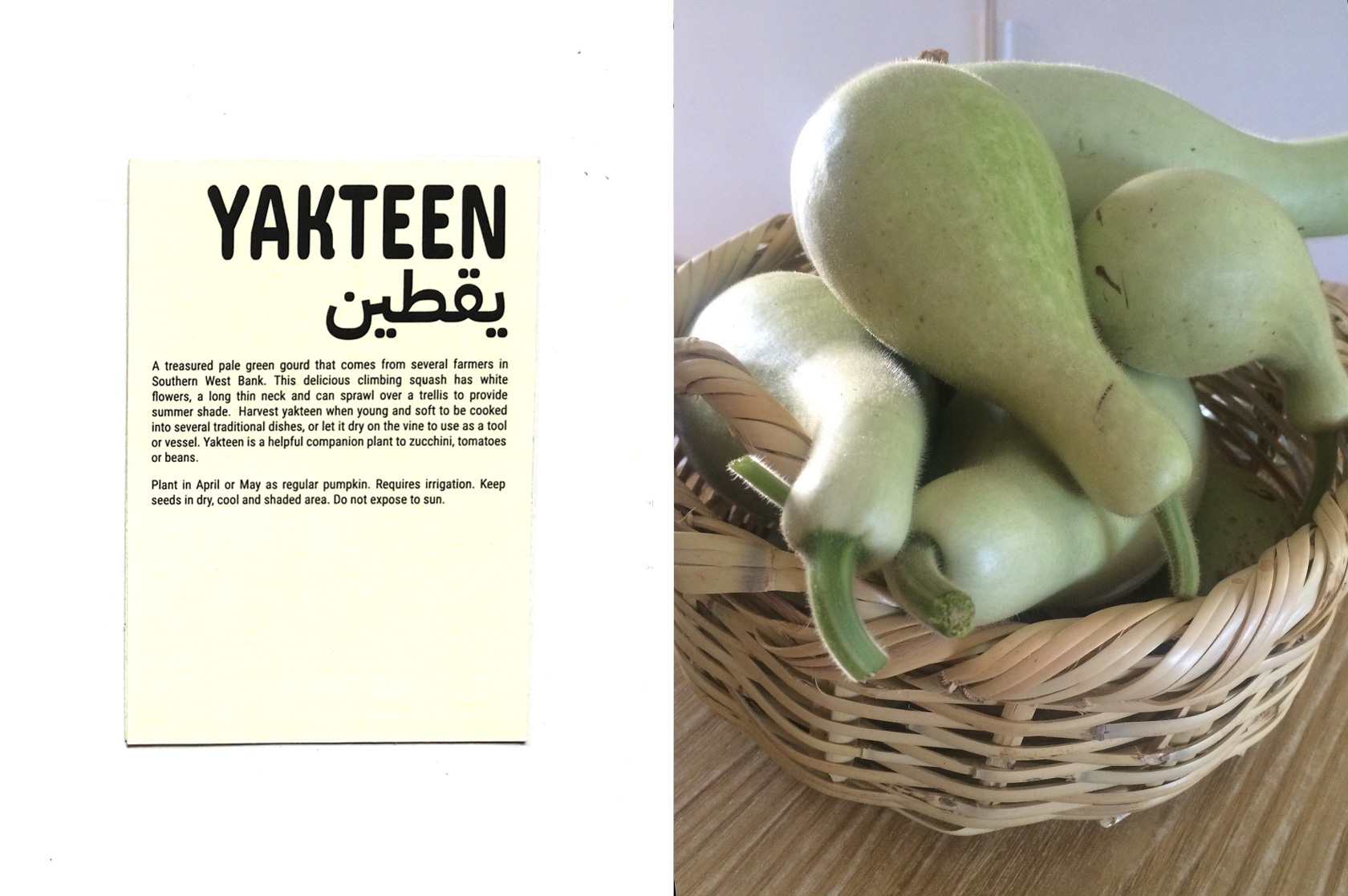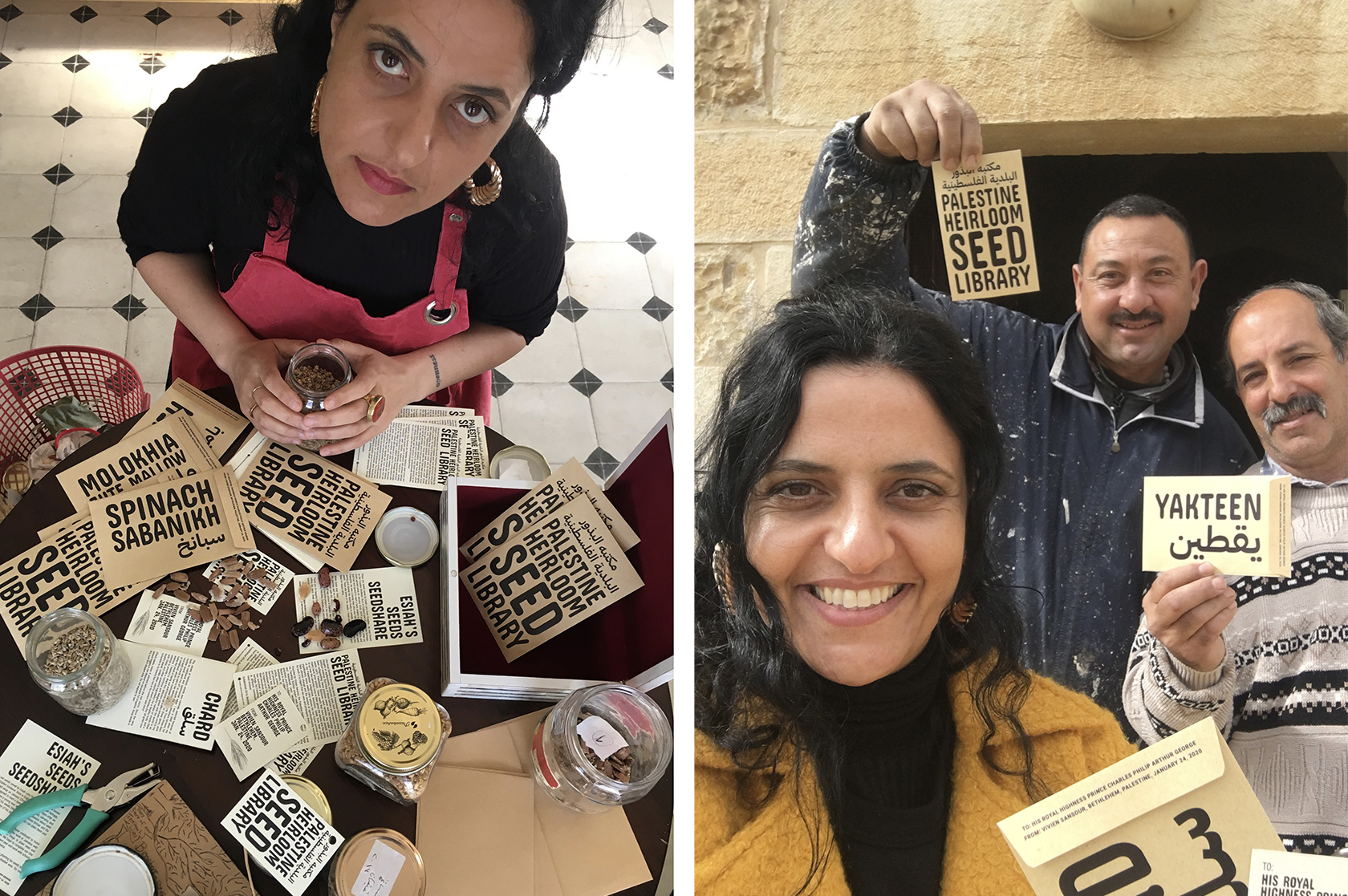Disengaged observer outfit
زيّ المراقب الدّولي
Is it possible not to interfere in politics or take sides, when you are in the middle of it all? How can one act without taking a hierarchical position? Is it even possible to be neutral in a situation of oppression?
The ‘Disengaged observer outfit’ is made of a traditional Palestinian fabric that is frequently used in Bedouin meeting tents and rooms. This outfit functions as camouflage in these places and occasions. However, in almost every other surrounding, it provides high visibility: on highways, busy crossings, construction sites, squares, beaches, or scenic landscapes. Unlike those in the United Nations Disengaged Observer Force who are dressed in all-white with a default neutral aesthetics, this alternative outfit for a ‘Disengaged observer’ embodies the unavoidably privileged condition that designer Tommi Vasko felt as a Westerner in Palestine. Together with Tessel Brühl, he designed this outfit to invite for a transparent, honest, and literally striking opportunity to observe and (dis)engage.
- Tessel Brühl (NL)
Tessel Brühl is a Dutch designer based in Amsterdam, where she attended the master in Think Tank for visual Strategies at the Sandberg Instituut (Master Rietveld Academie). She makes clothing, objects, performances and short films to change, disturb and highlight unconscious structures in society. OLIVE TREE I love trees; I love my olive trees; my trees; have feelings; when I stand; on the ground; with their roots; under my feet we feel each other our roots hold strong and silently in the earth no one will move us my trees are one three and eight years old my trees are like my children I couldn’t live without them I eat the olives the oil the seeds become beads the wood heats my house and the leaves spread this story
- Tommi Vasko (FI)
Tommi Vasko is a Finish designer based in Amsterdam. He studied at the Sandberg Instituut Amsterdam (Masters Rietveld Academie).
AUTHENTICITY
When a European design student wants to experience authentic night out in Ramallah or in Bethlehem, there are two basic options: one can ask a local to recommend a Palestinian restaurant, order hummus, falafels, shawarma, turkish salad and other local dishes and drink freshly squeezed juice or local Taybeh beer. Or, one can go to one of the restaurants serving non-Palestinian food, drink a Carlsberg or a Coke while a mix of local and western pop-music is playing in the background. While the former option might offer an opportunity to taste the traditional cuisine, it doesn’t mean that the latter would be anyhow less genuine or ‘real’. Nor that one or the other would authentic for all for the same reasons. Or that authenticity would be anyhow objective. So, to be able to conscious about what’s behind this decision, I believe it’s important —at least for me— to examine and open up the notion of authenticity a little bit. On Saturday morning, while one part of the group went to Northern parts of Palestine to see the Qalandiya zoo, I decided to spend the morning walking in the old part of Bethlehem. I came across this arabic market not far from the main square; just a narrow alley and stairs left from the main/oldest street of the city. Narrow alleys with tarps hanging above to provide a bit of shade were crowded already in the morning. Fruit and vegetable stalls, spices, first- and second hand clothing, household stuff, electronics and plastic, basically everything is sold here. Already from far away you could see that most of the things were made in China. The fruits and vegetables however, without labels, rather ripe and unperfect, were certainly cultivated not too far away from here.
If one thinks authenticity as something geographical, something related to soil and the place, the fruits and vegetables in this market had a stronger aura of authenticity than the almost universal made-in-China stuff (it’s more authentic to eat hummus in the middle east than it is in Europe). But at the same time it’s at least as authentic to see Chinese products in the Middle East as it is in Europe.
Later in Ramallah, when the European design student decides to go for a drink to a clean and trendy Mexican restaurant or to hyped Octoberfest in newly opened five star Mövenpick Hotel (or both!), the authenticity is rather cultural. And cultures change. It’s an experience about a moment, people and the global cultural environment. And floating in the Dead sea in lotus position the day after, the experience is again all about the exceptional environment: full-body mud masks and the sea and western pop-music and Nestle ice cream.
- Star Fashion (PS)
Star Fashion is a sewing workshop based in Ramallah.
2013
Bedouin Fabric (made in Syria)
S, M, L
€75,00

